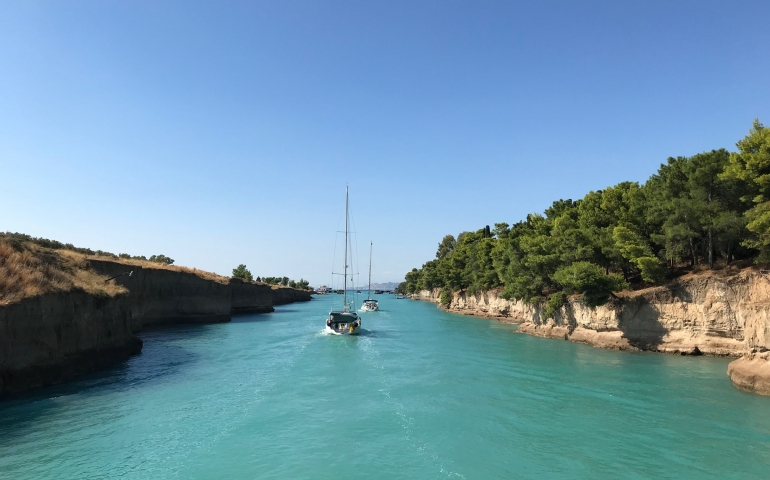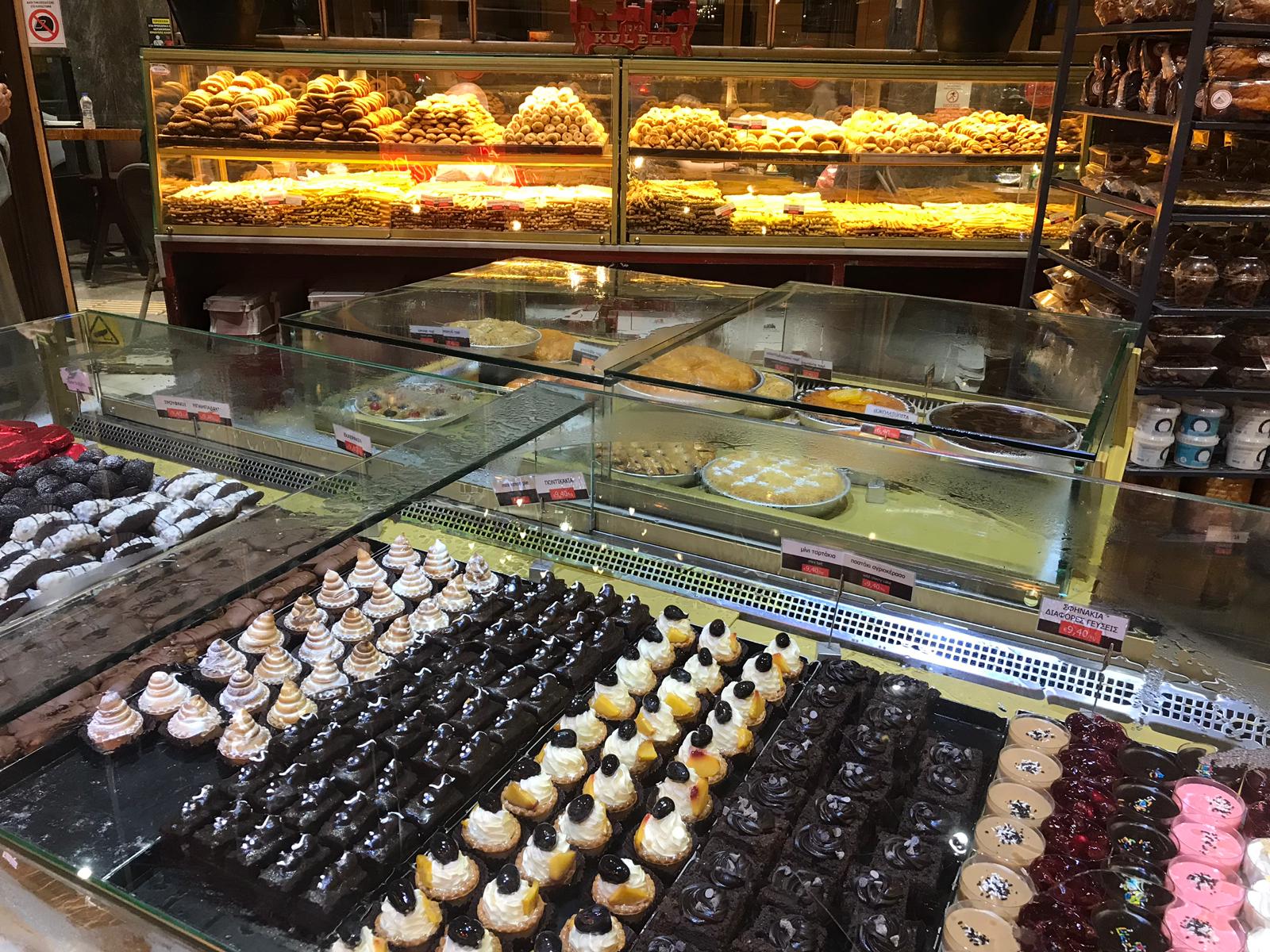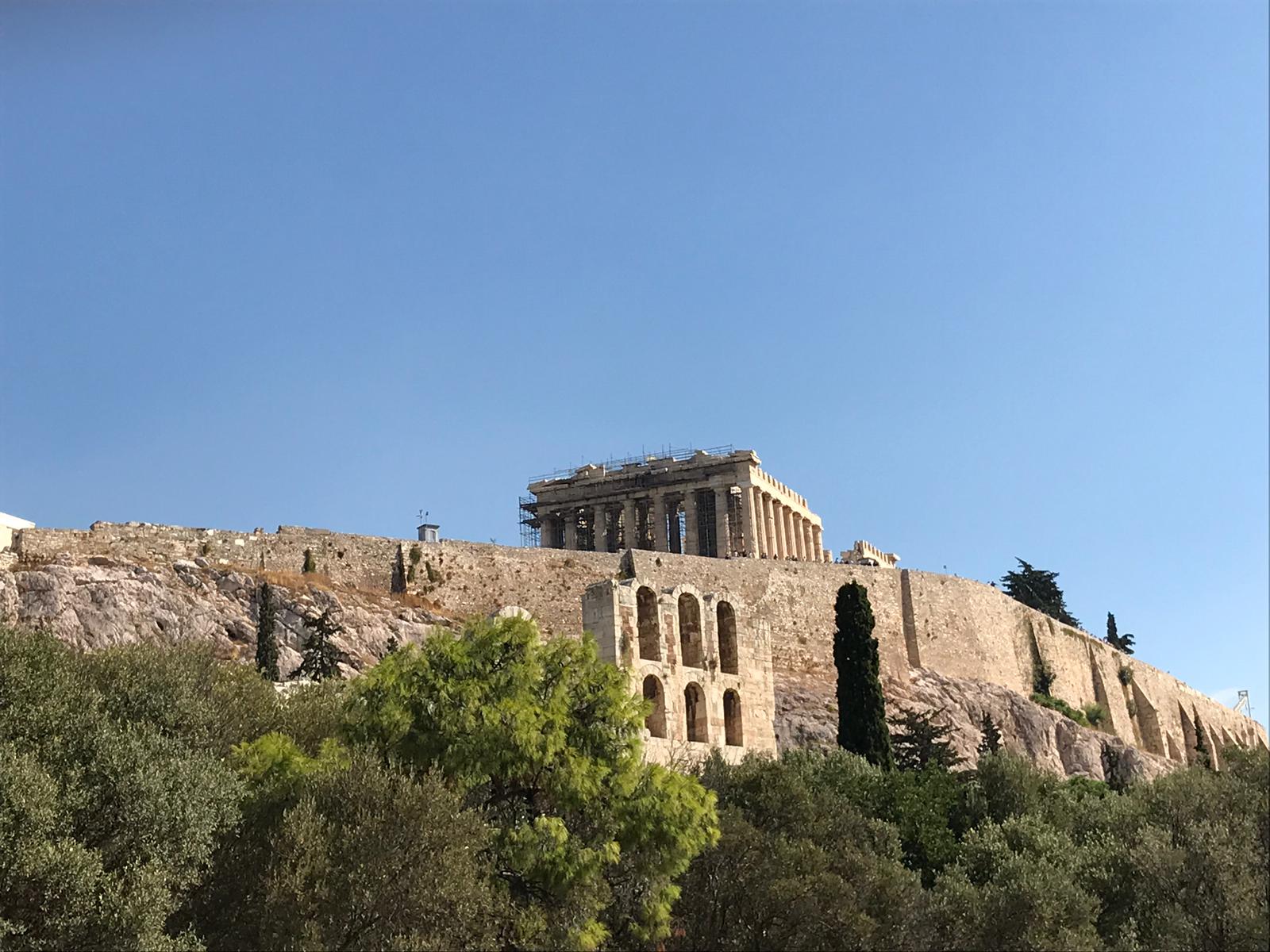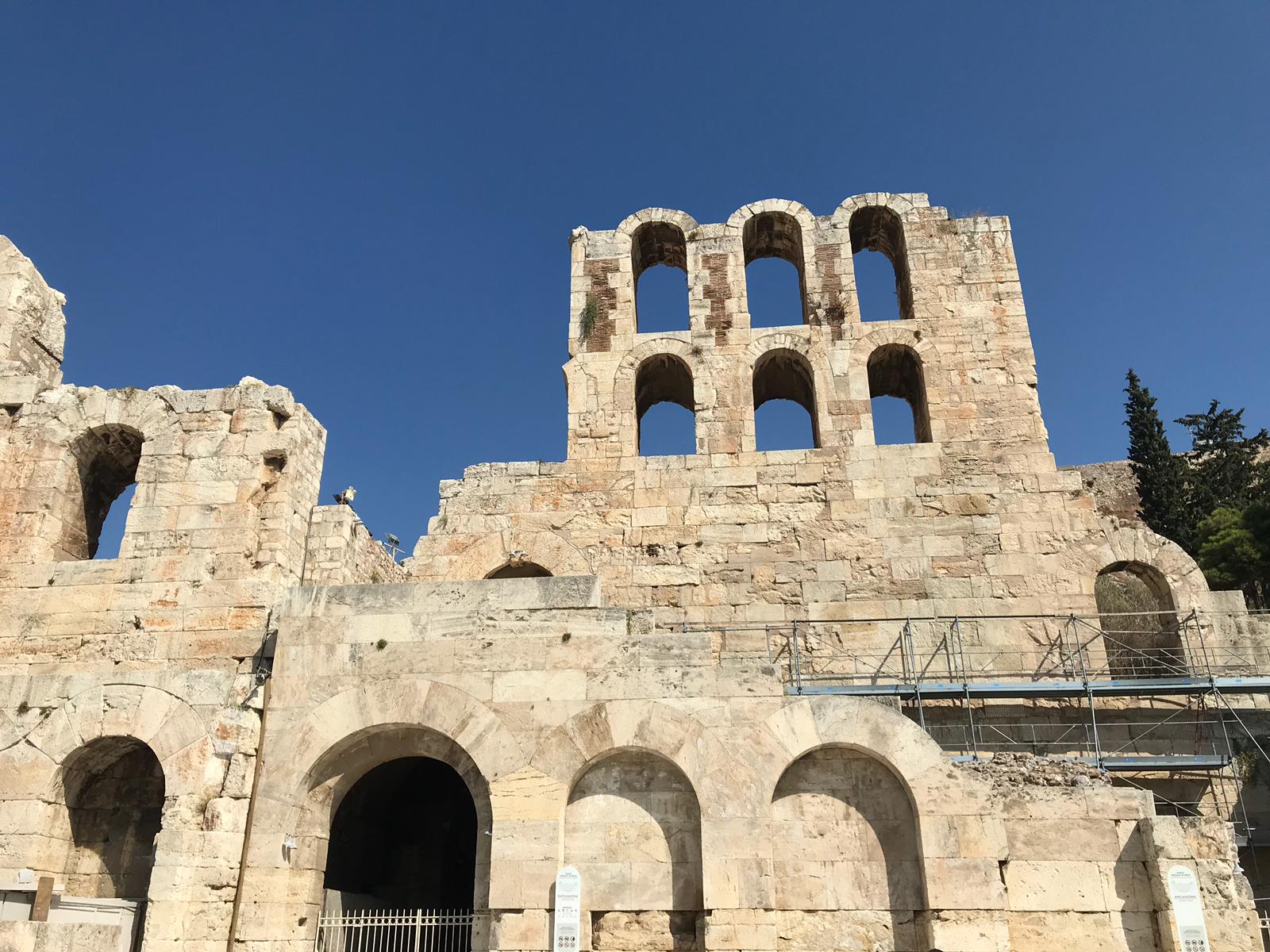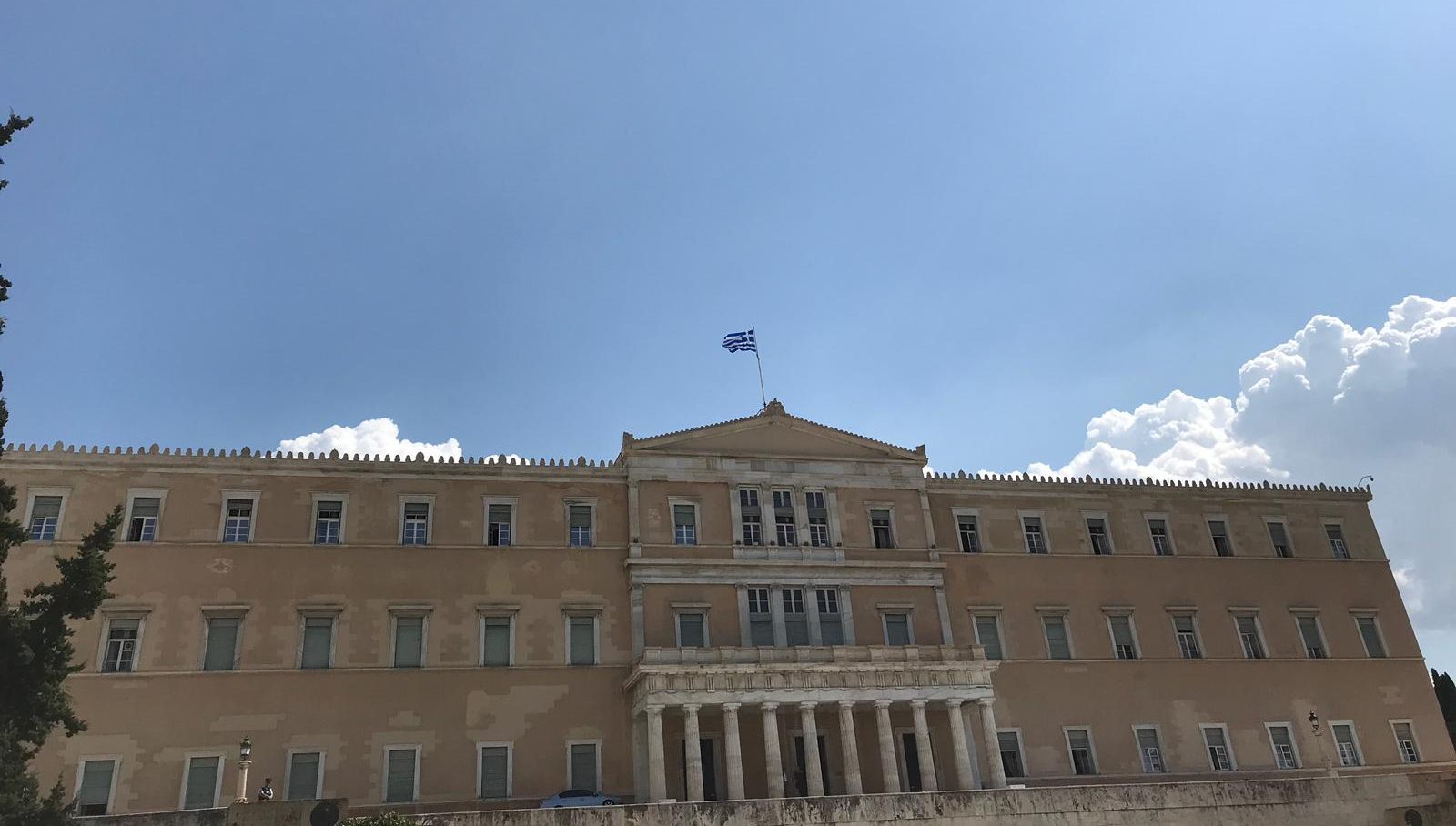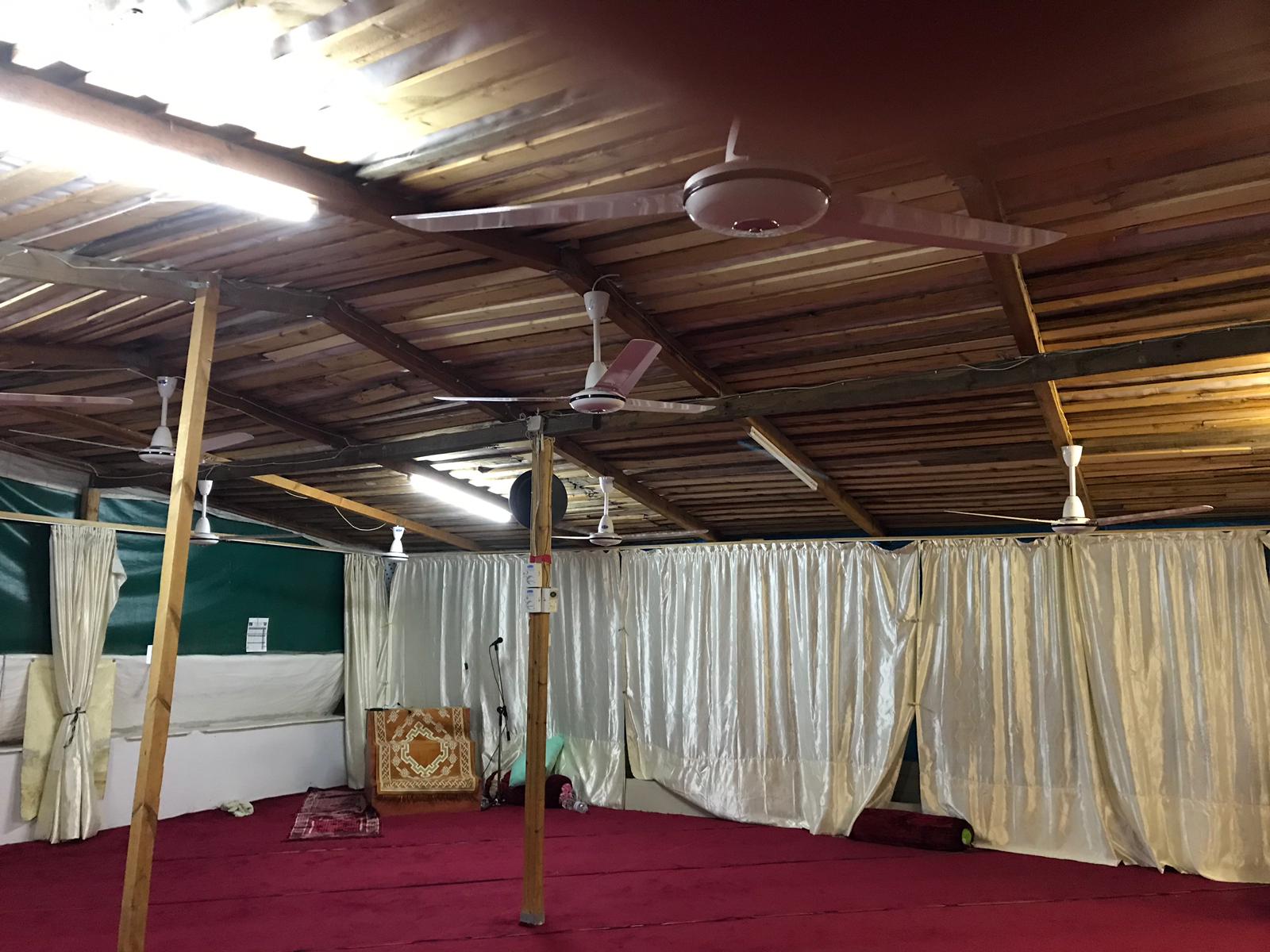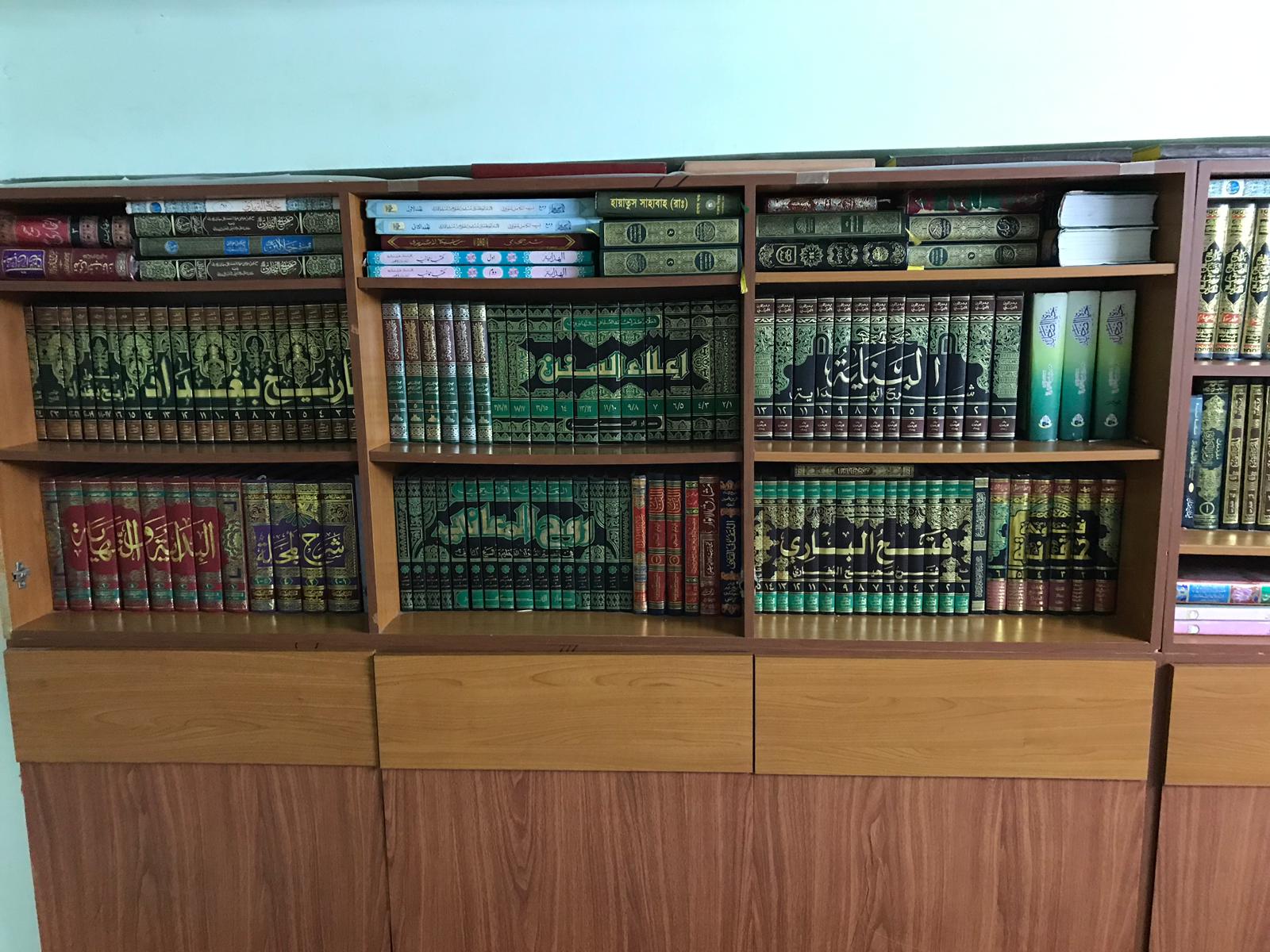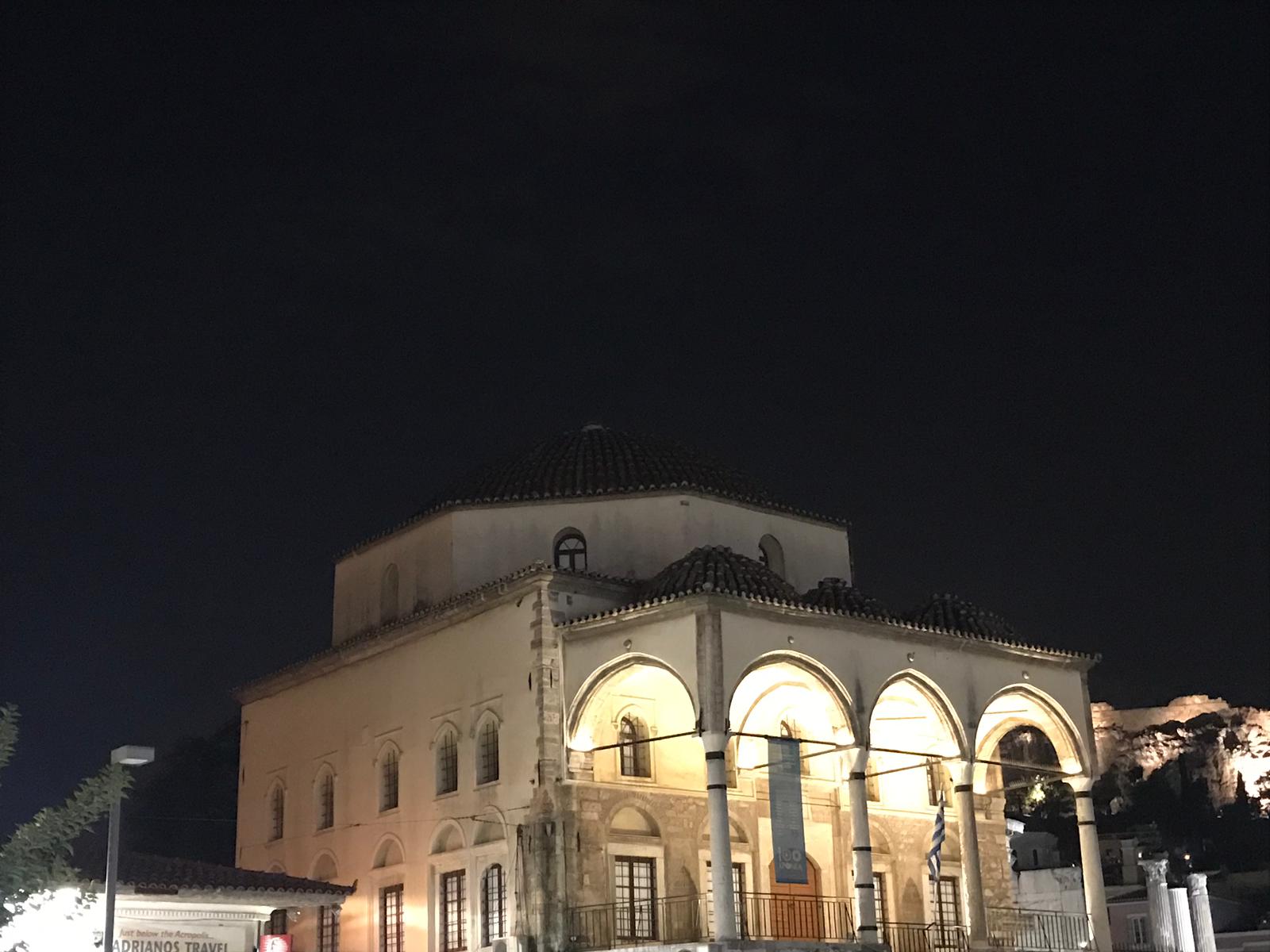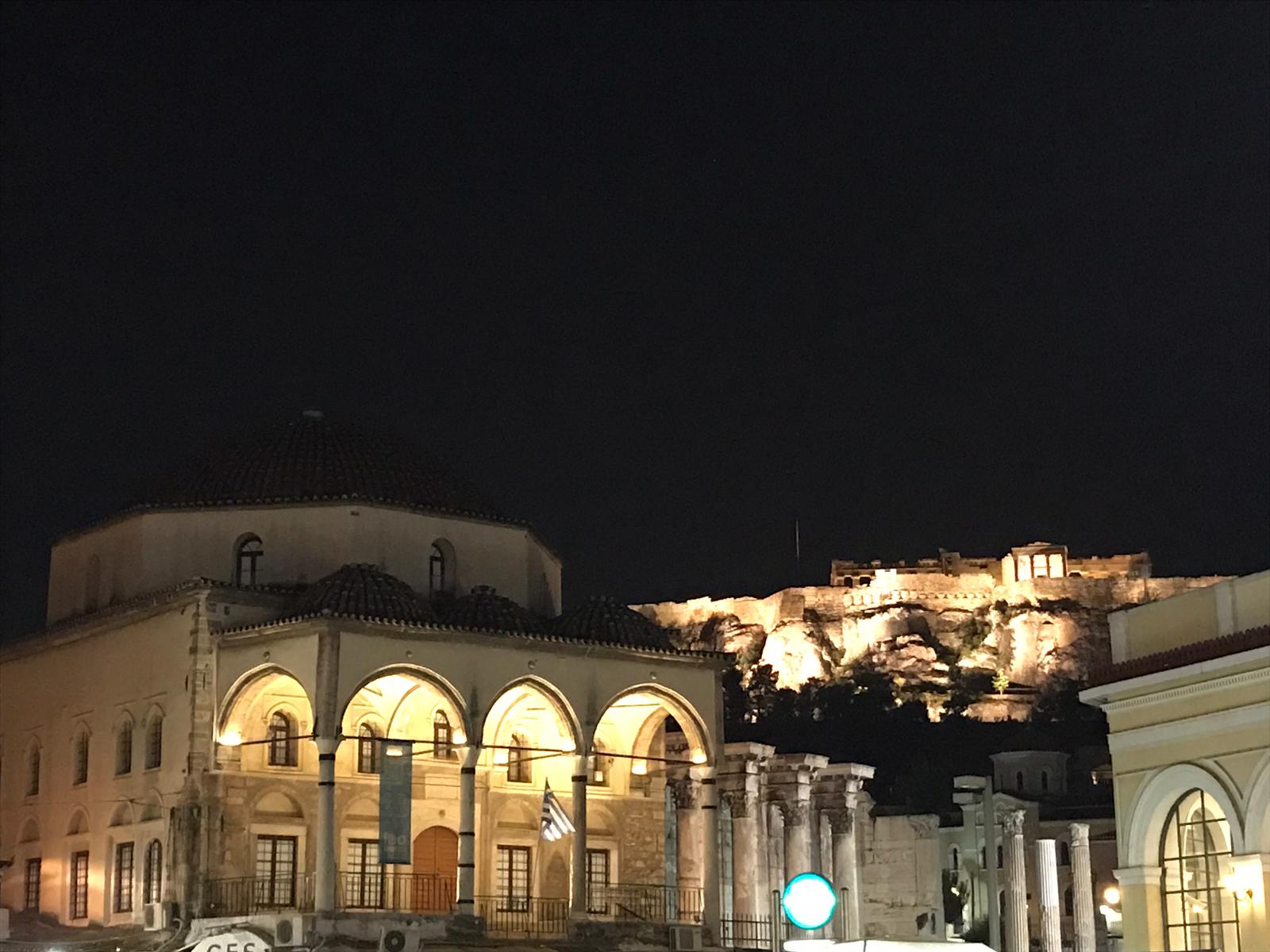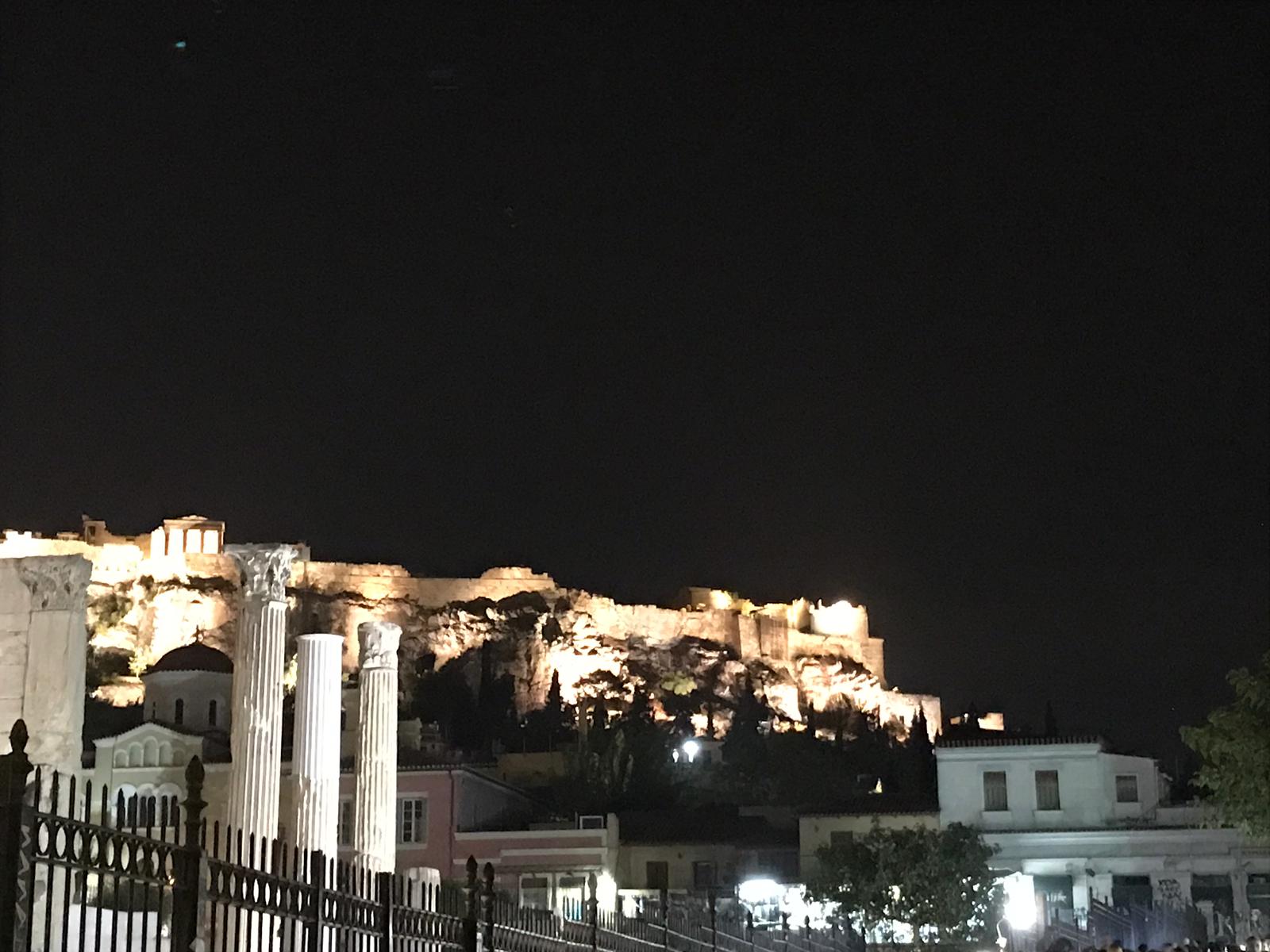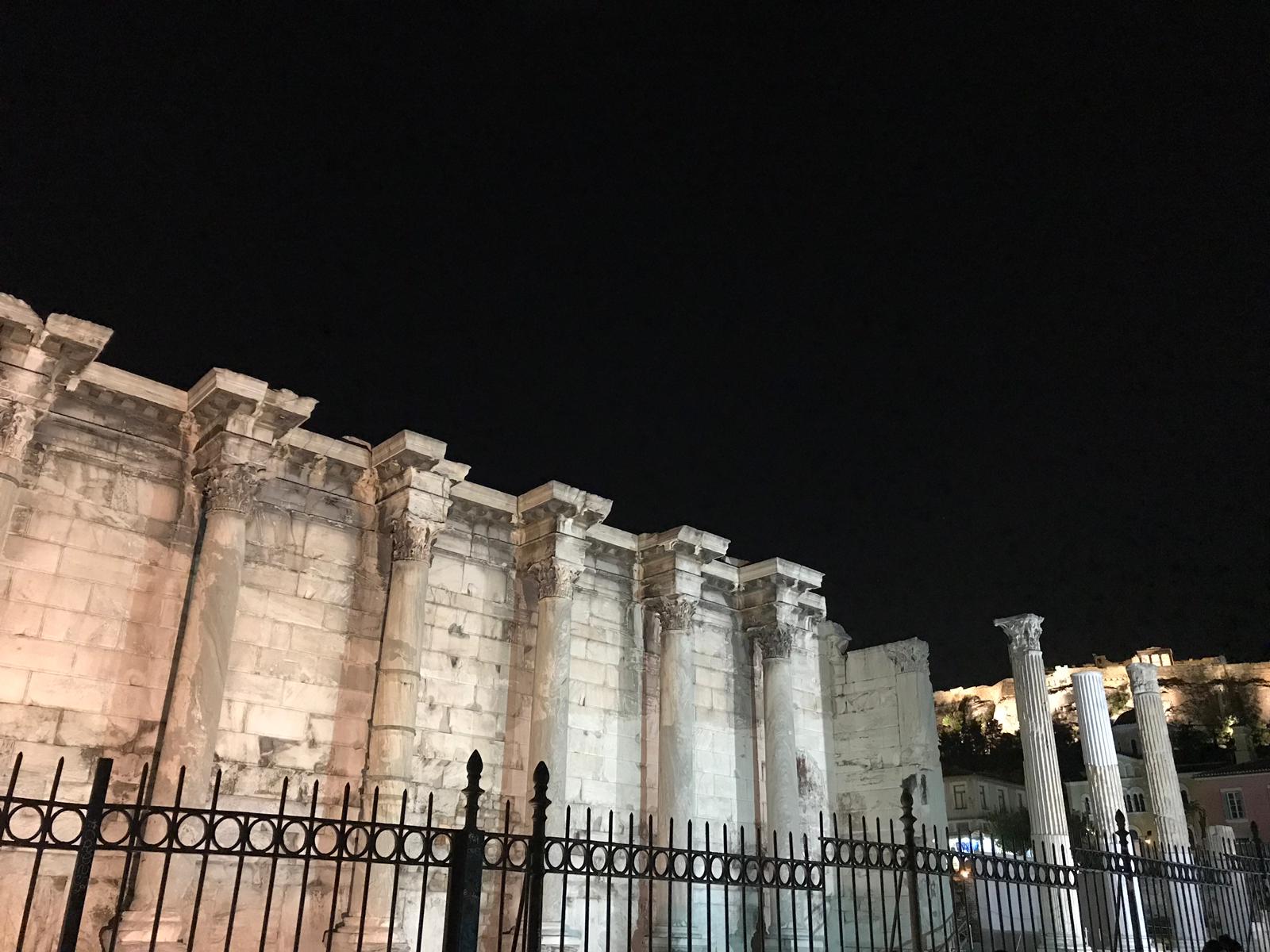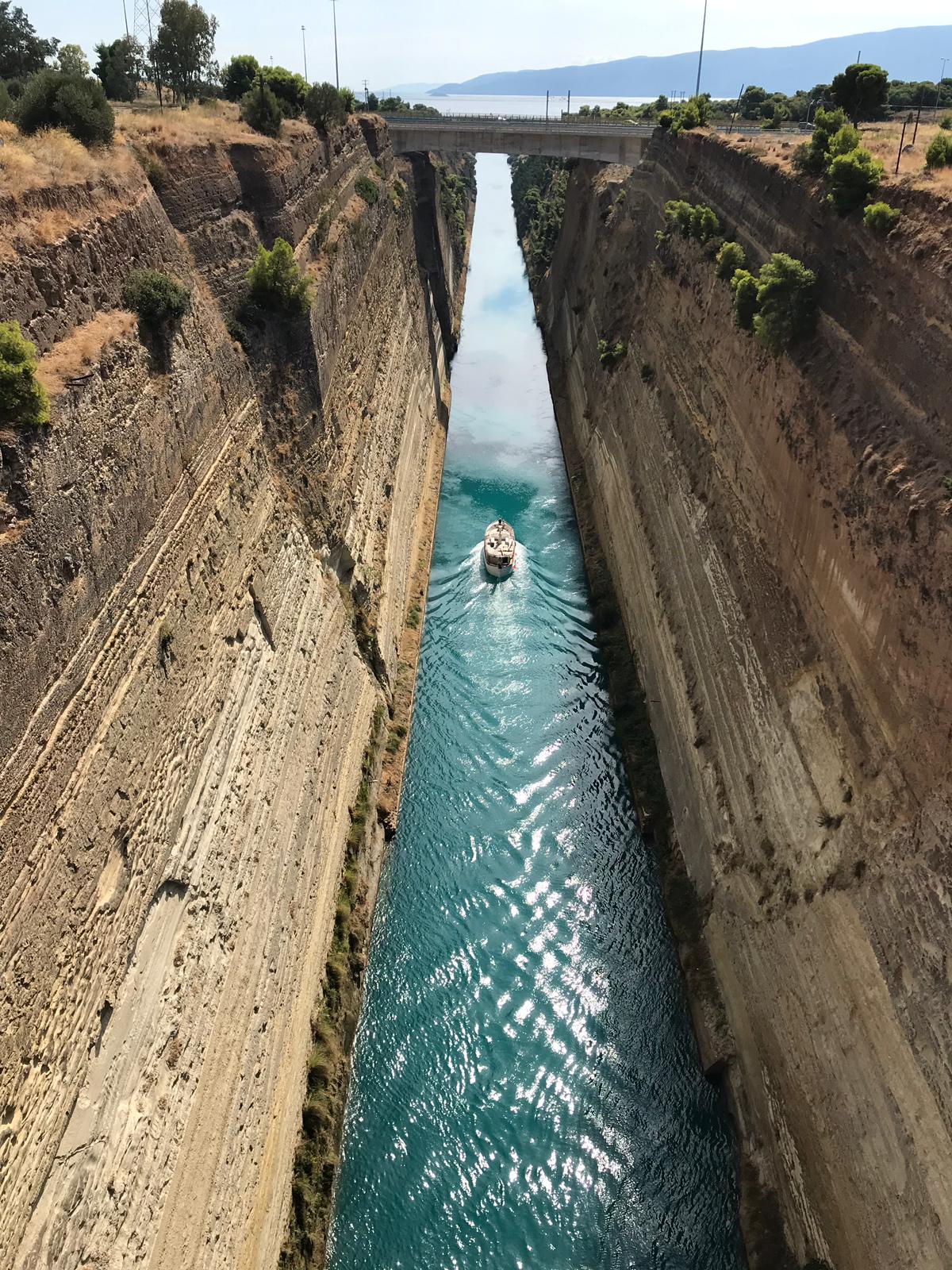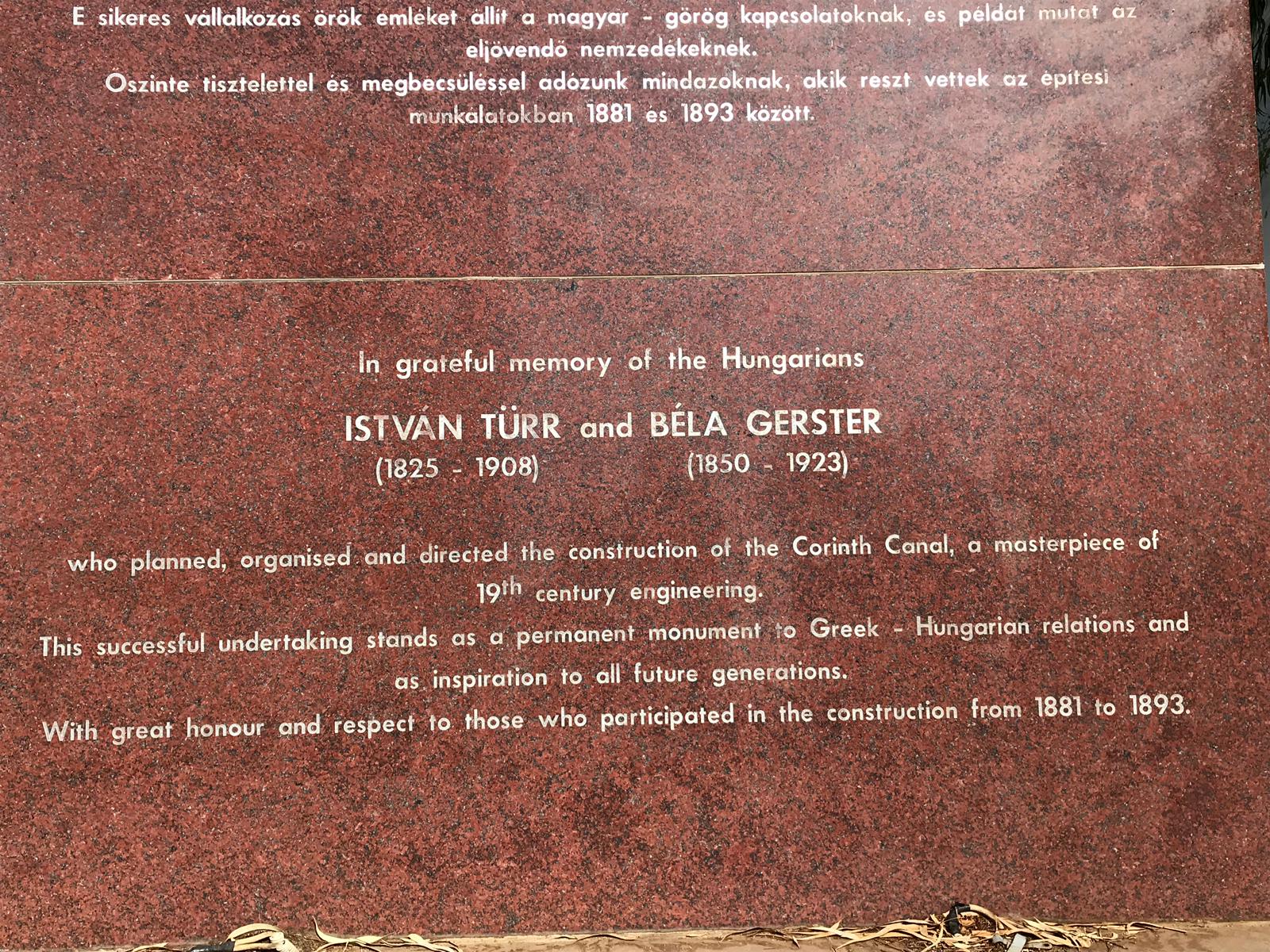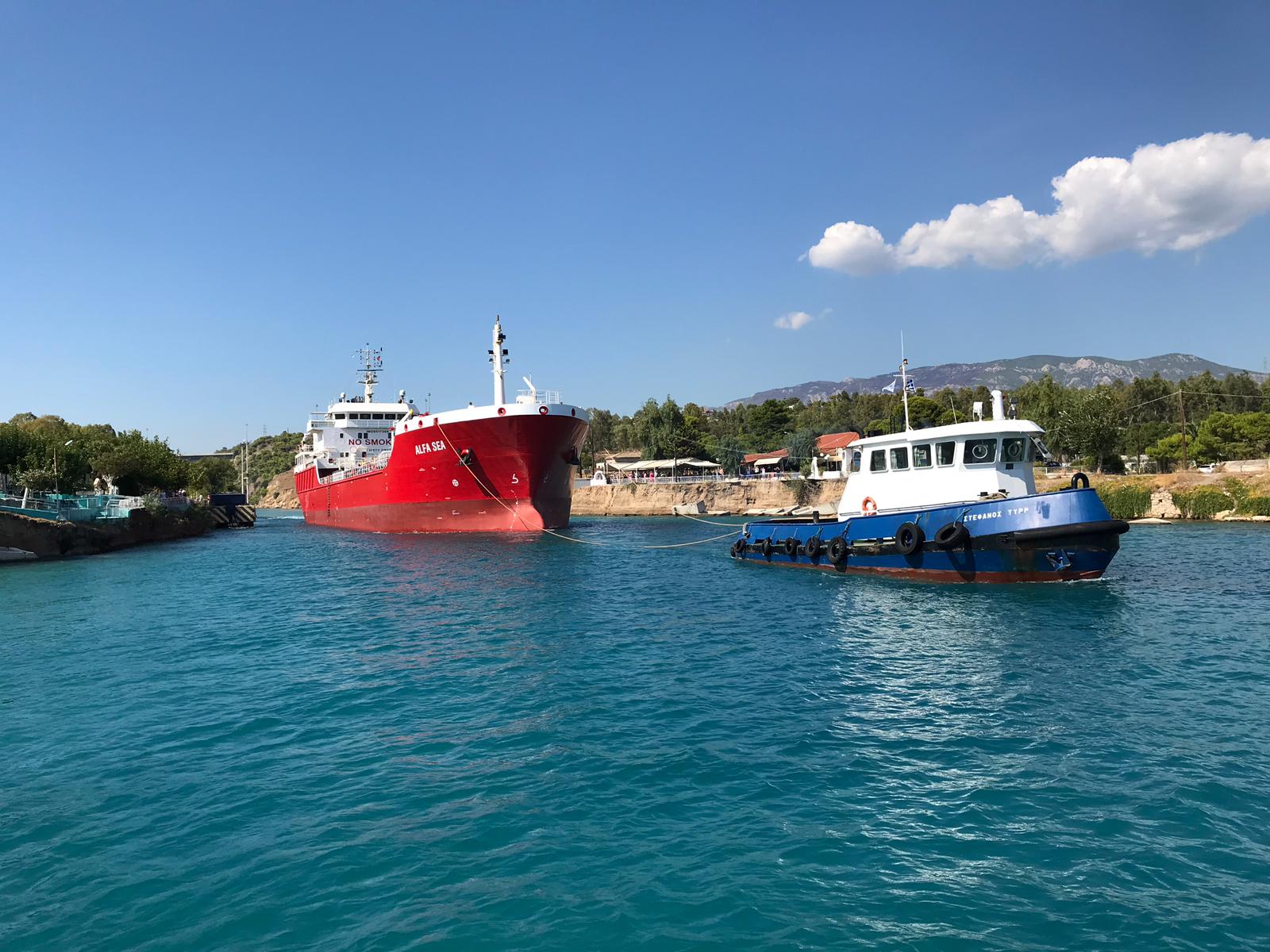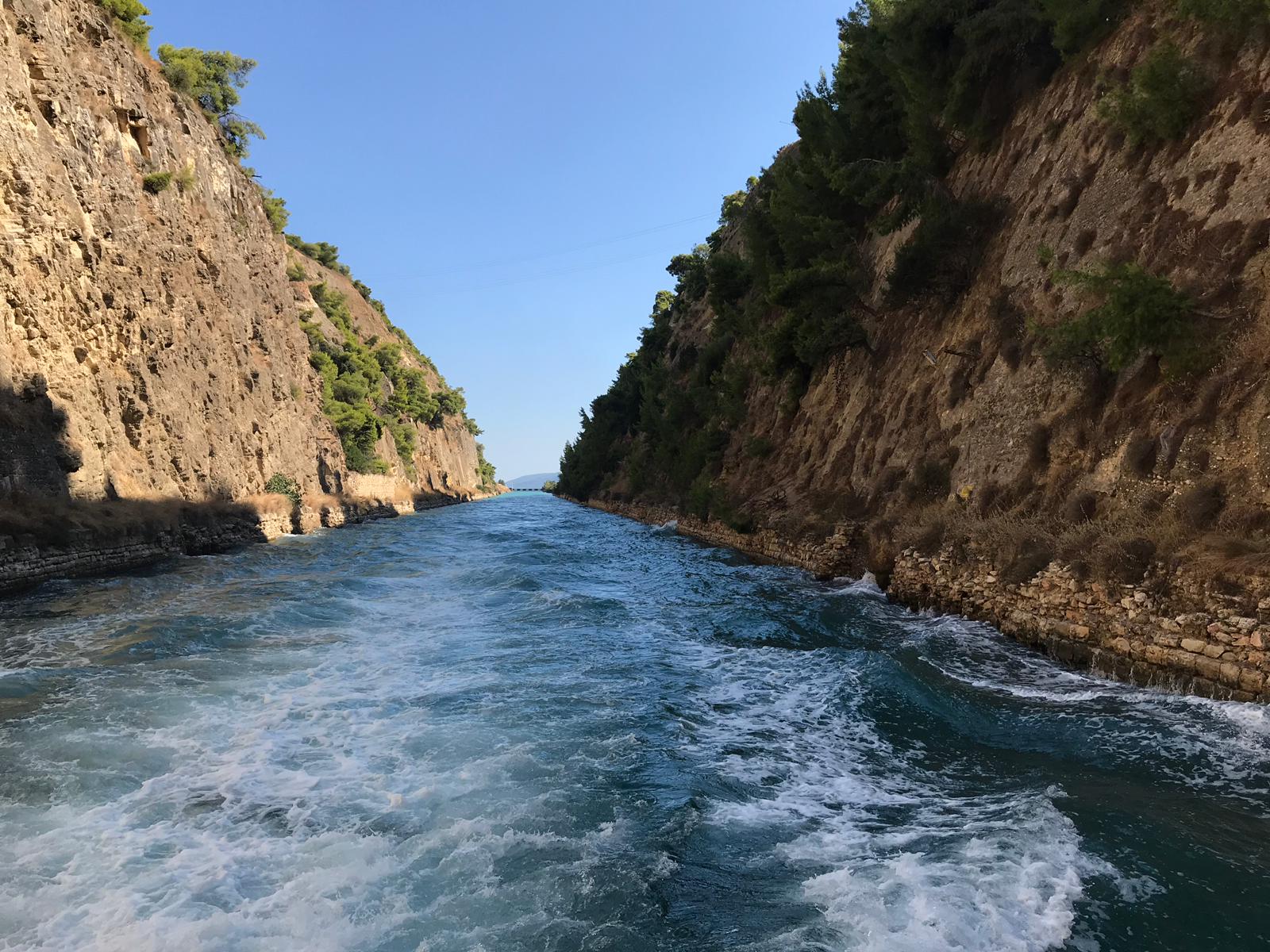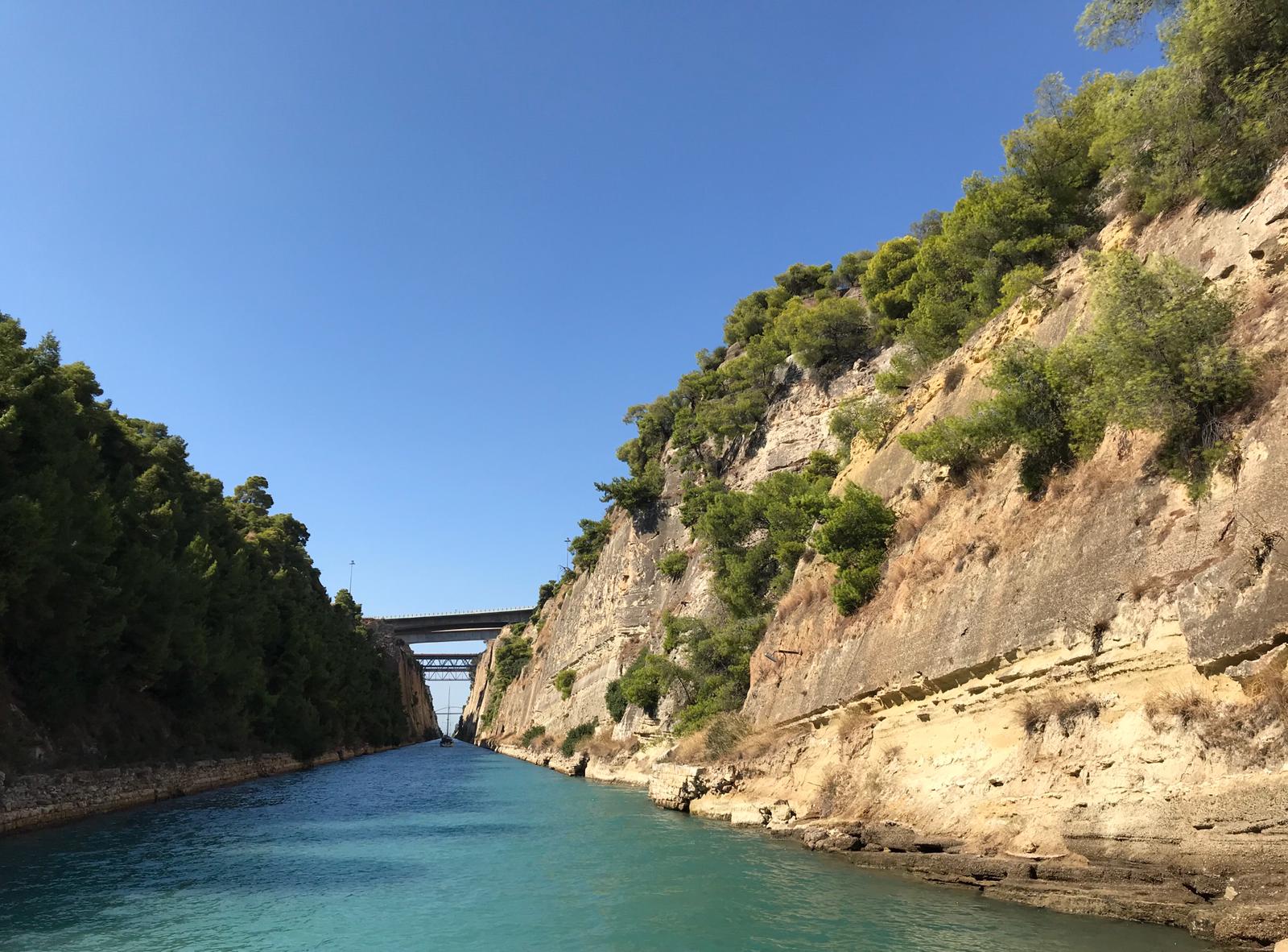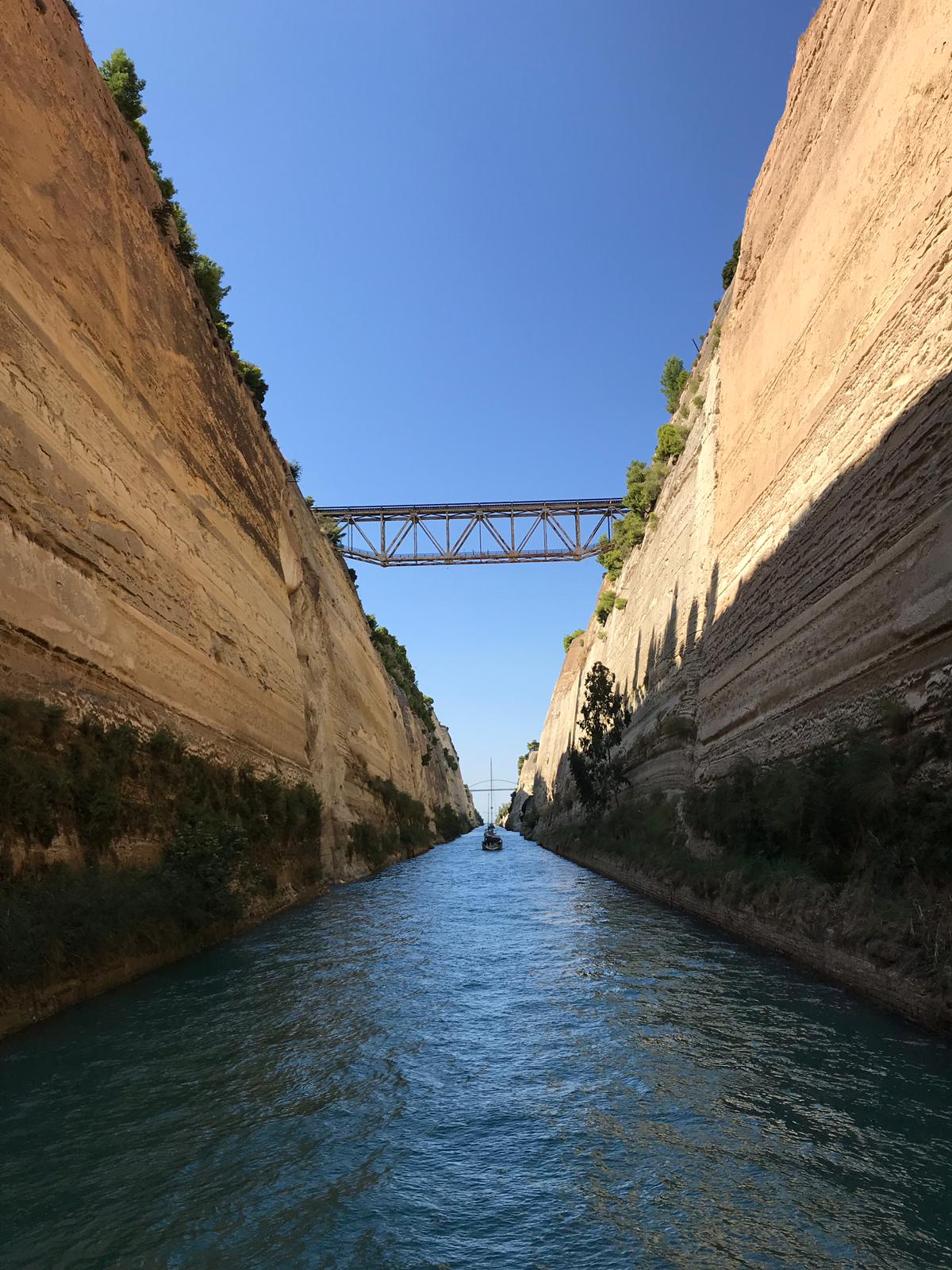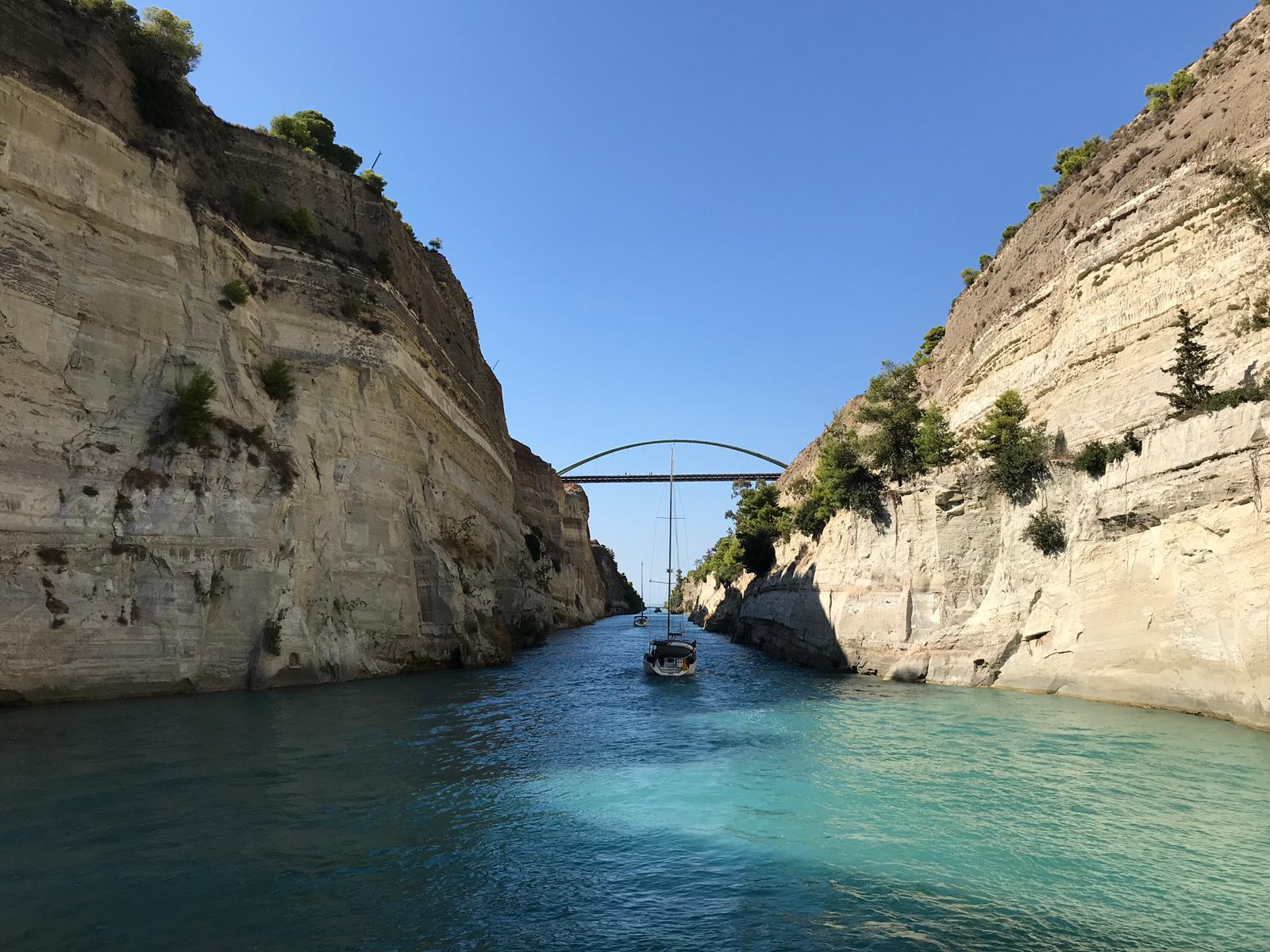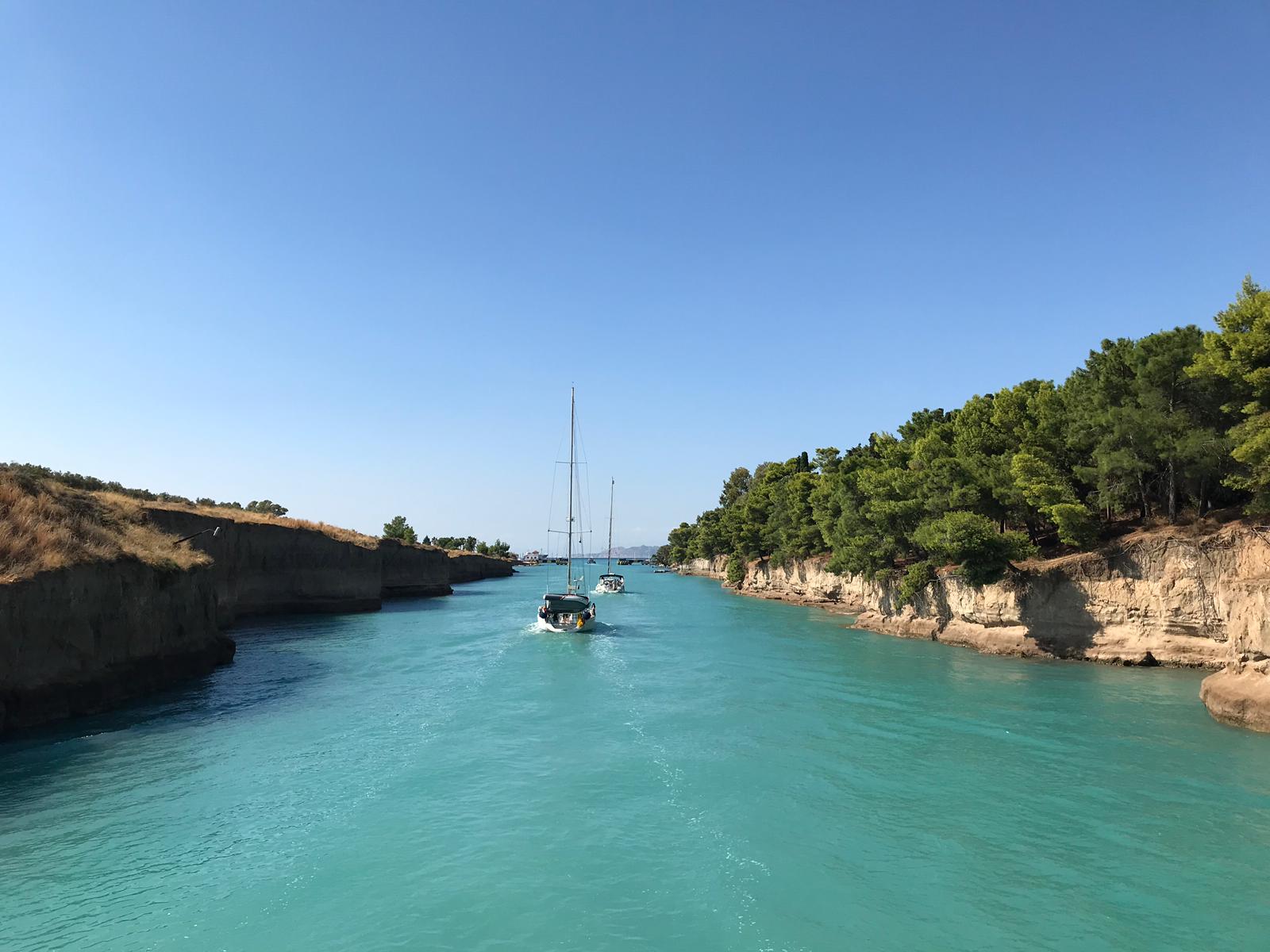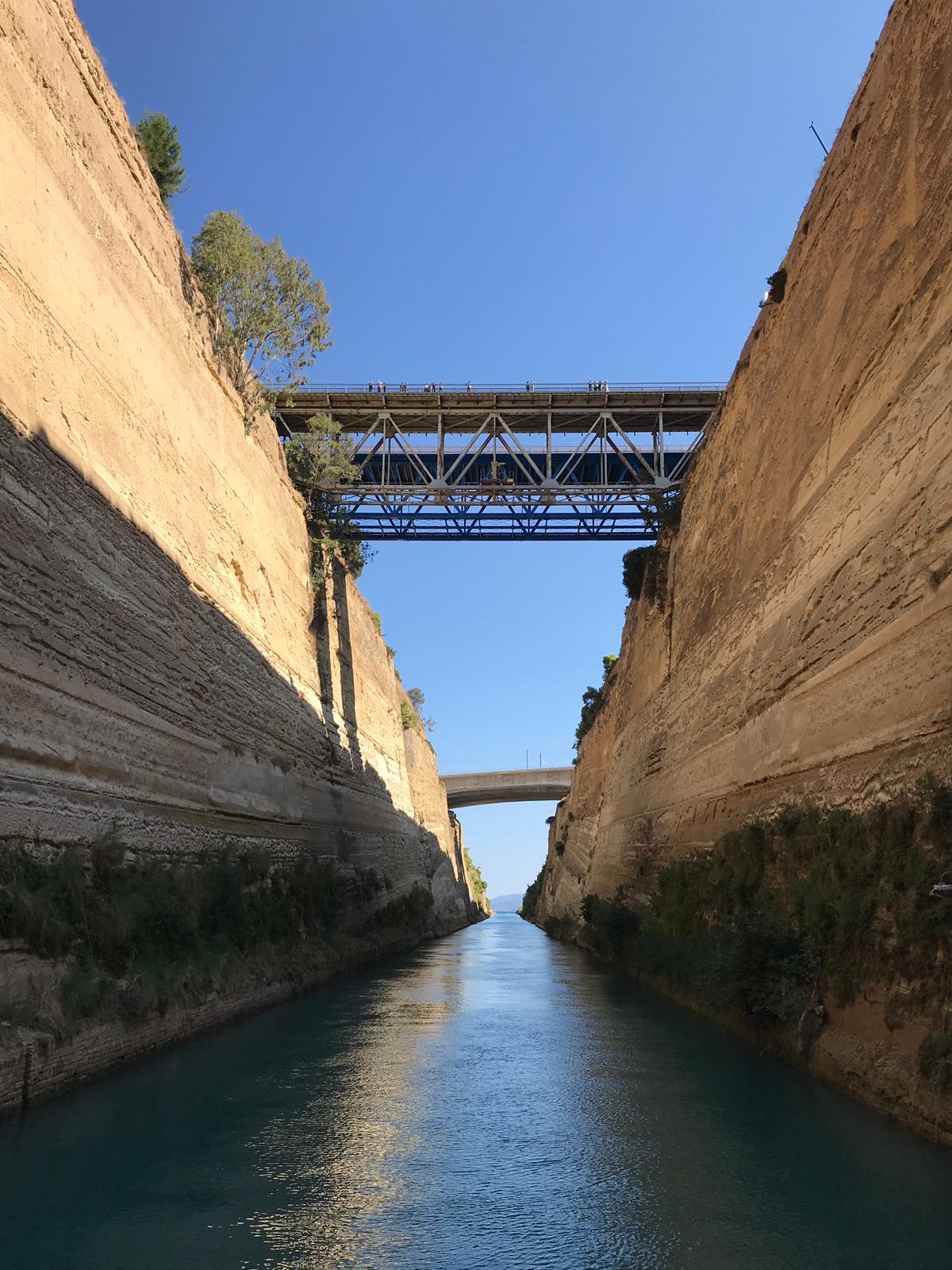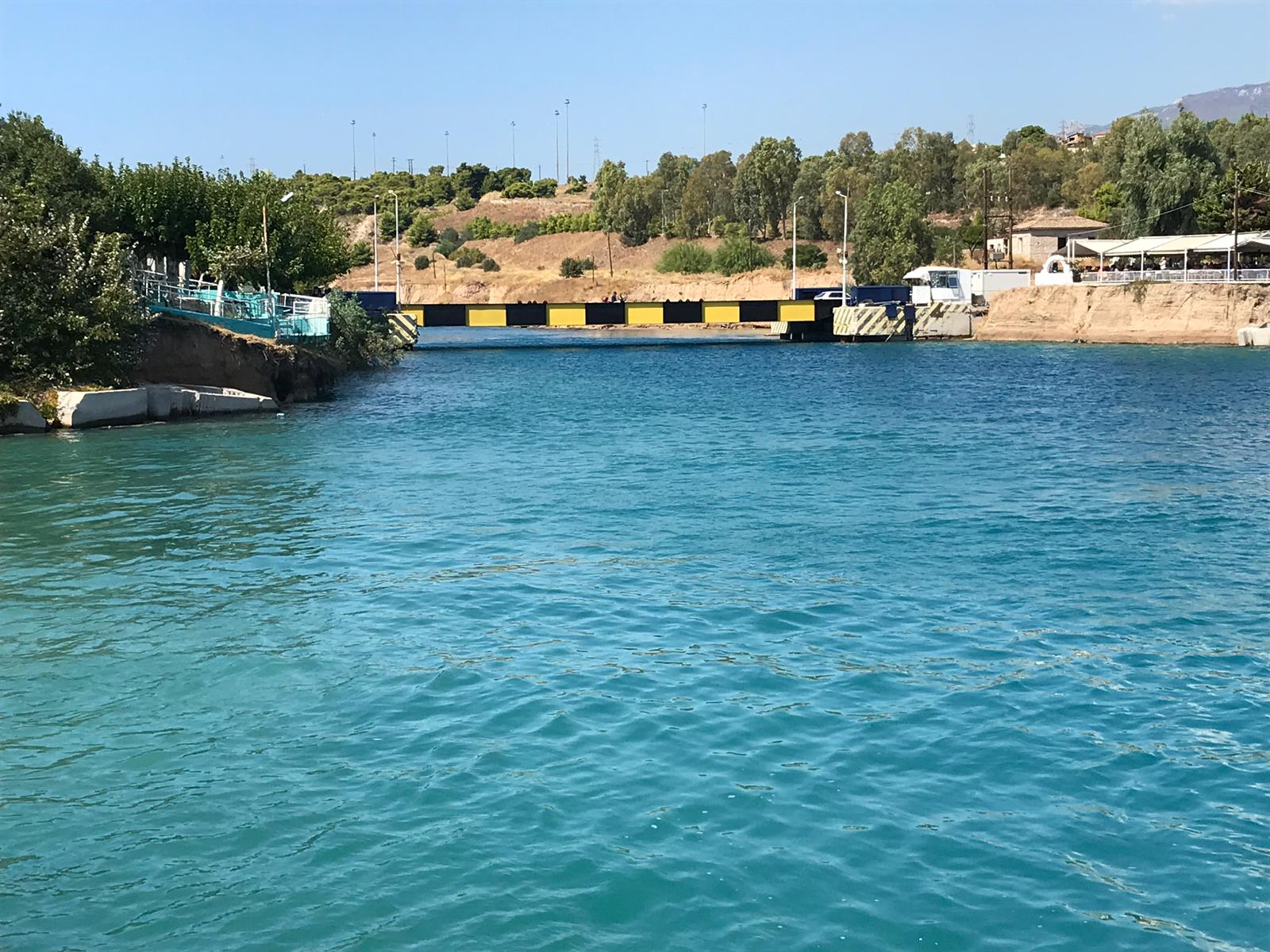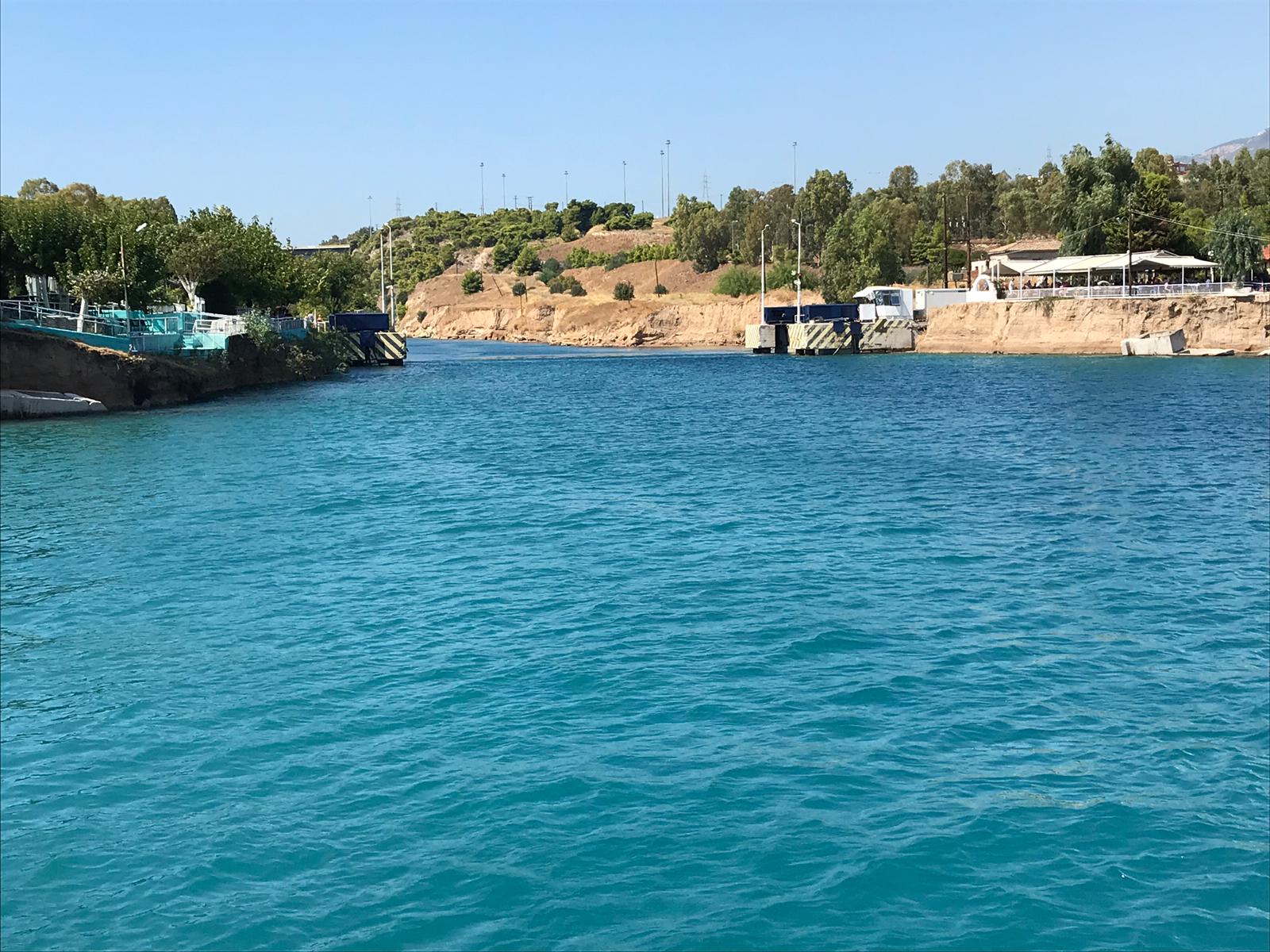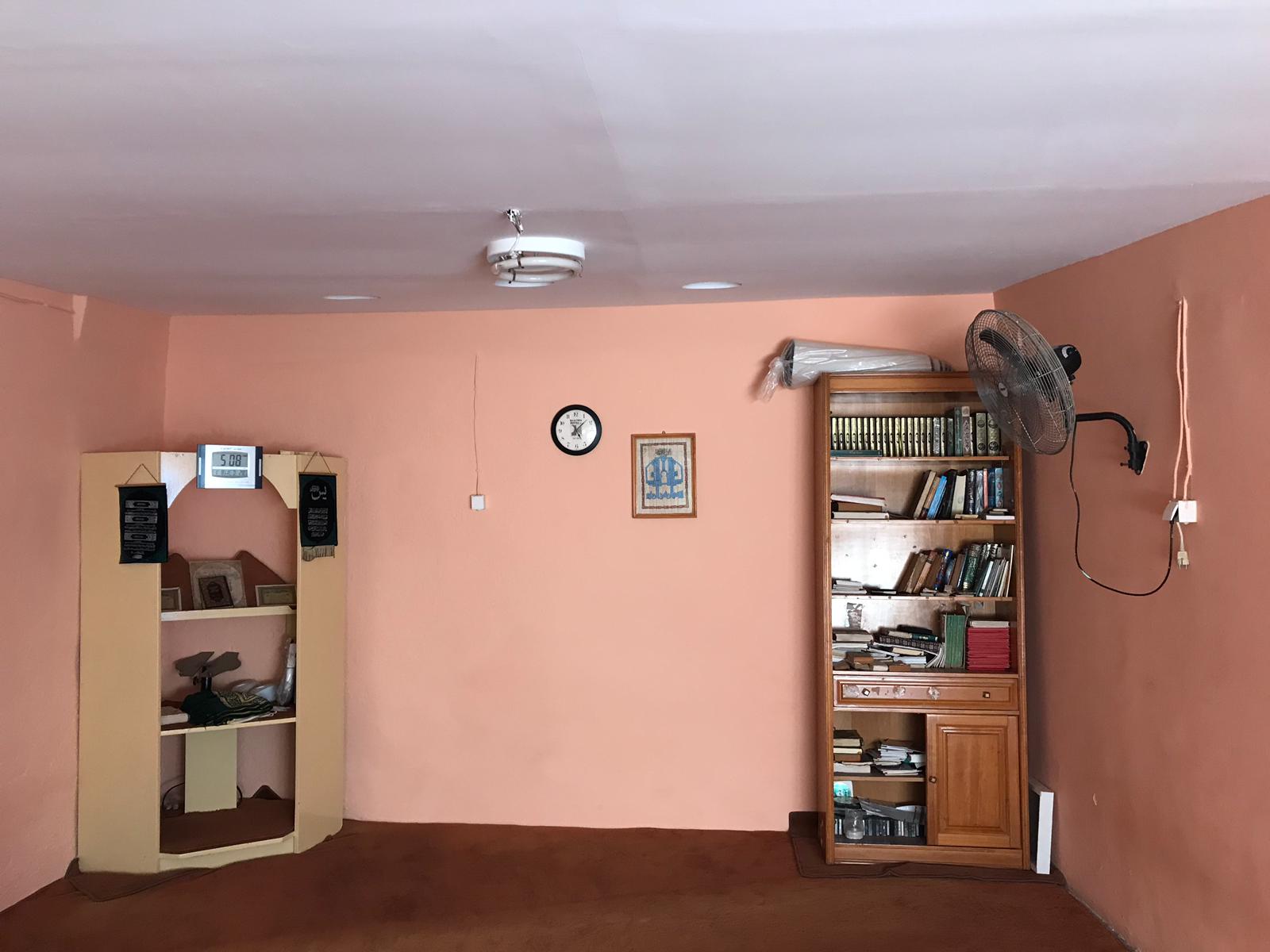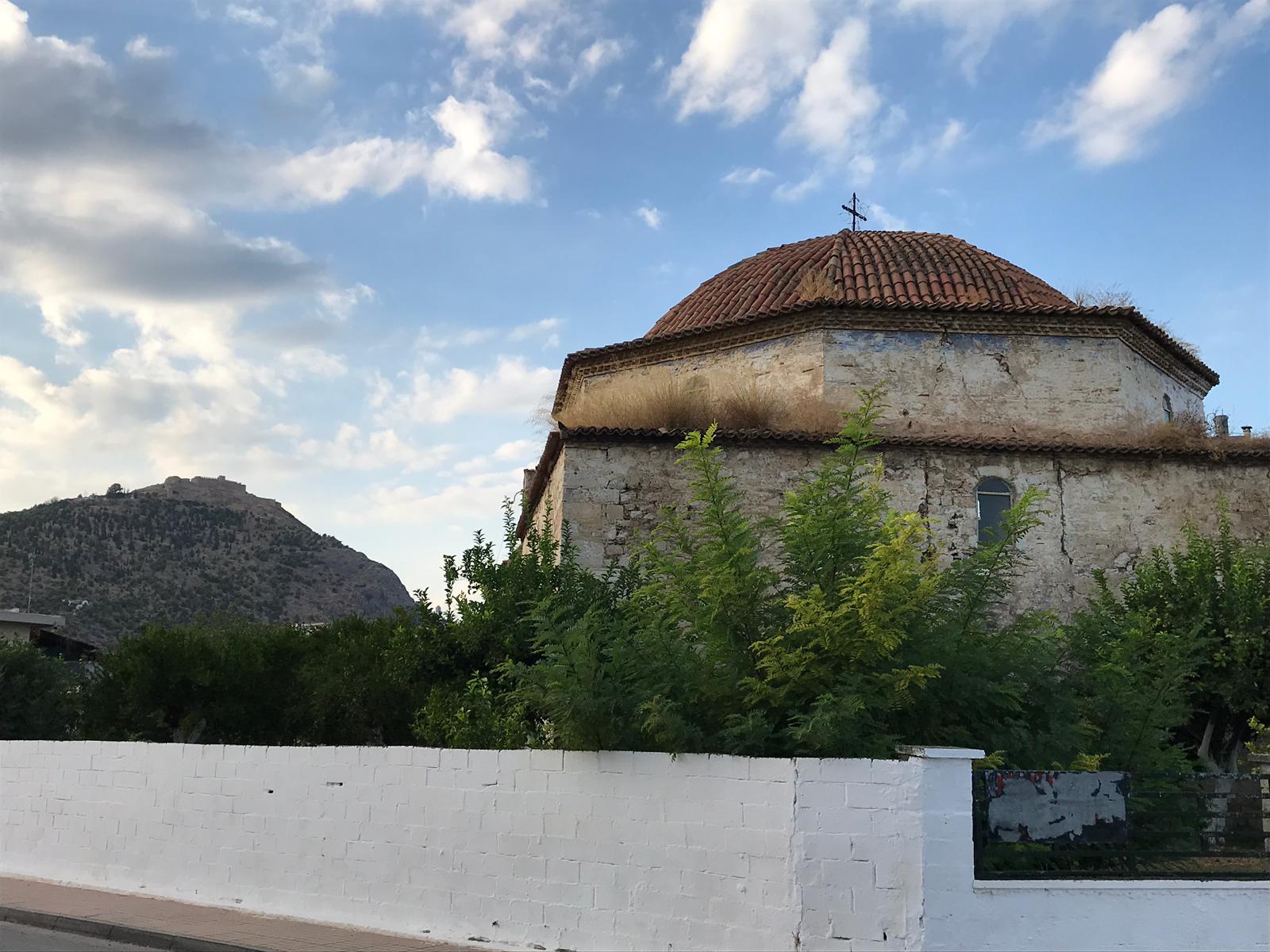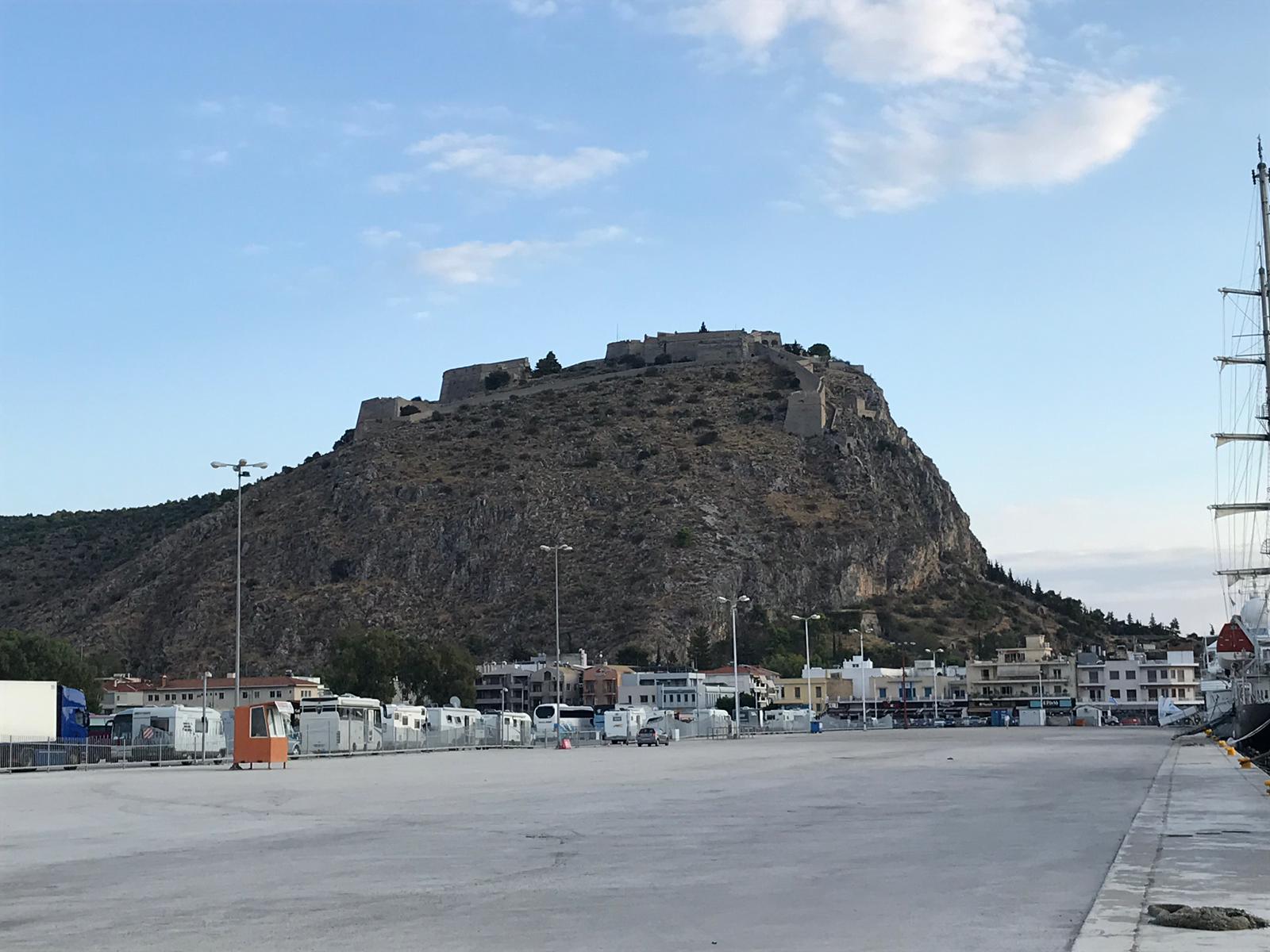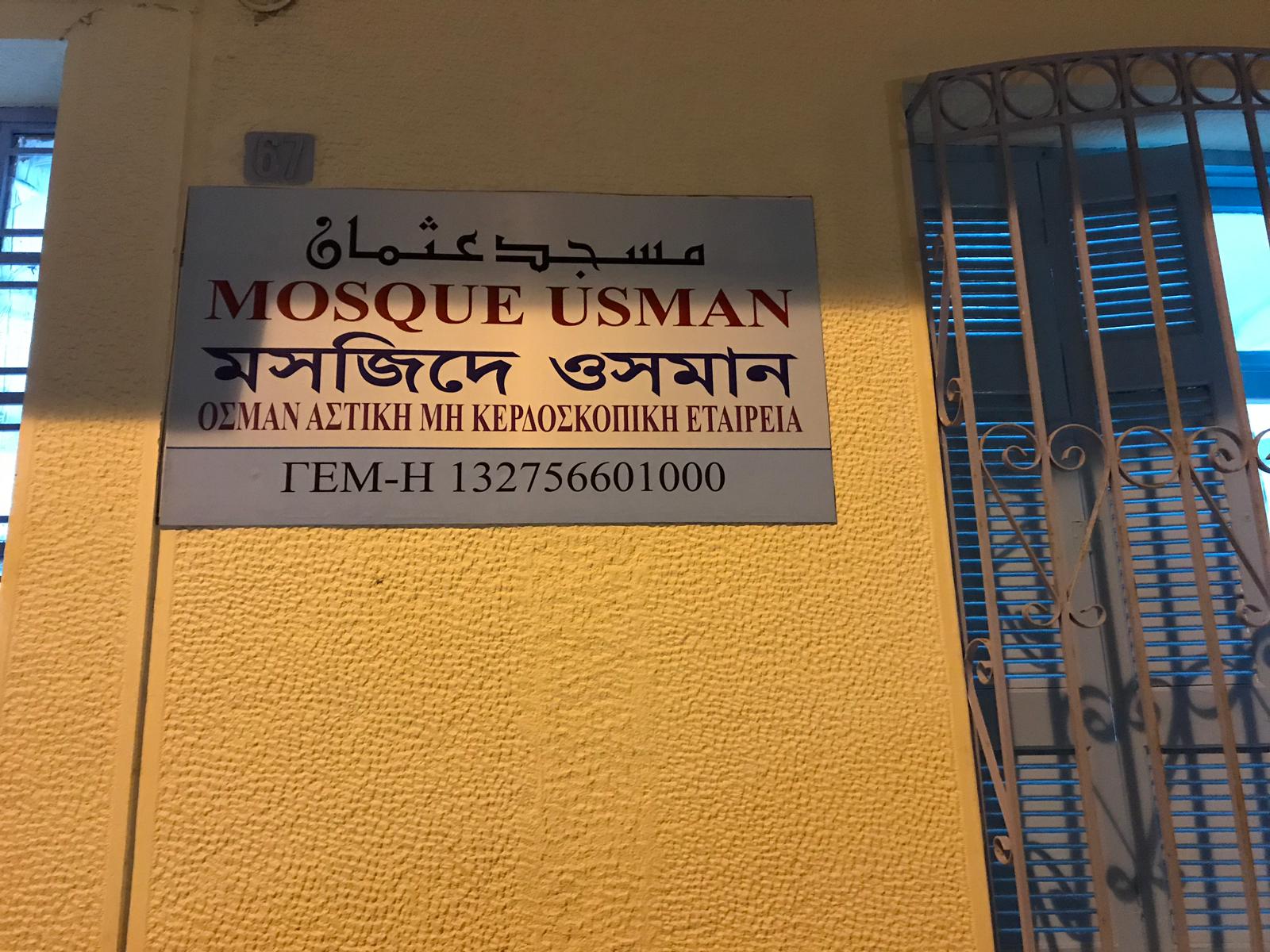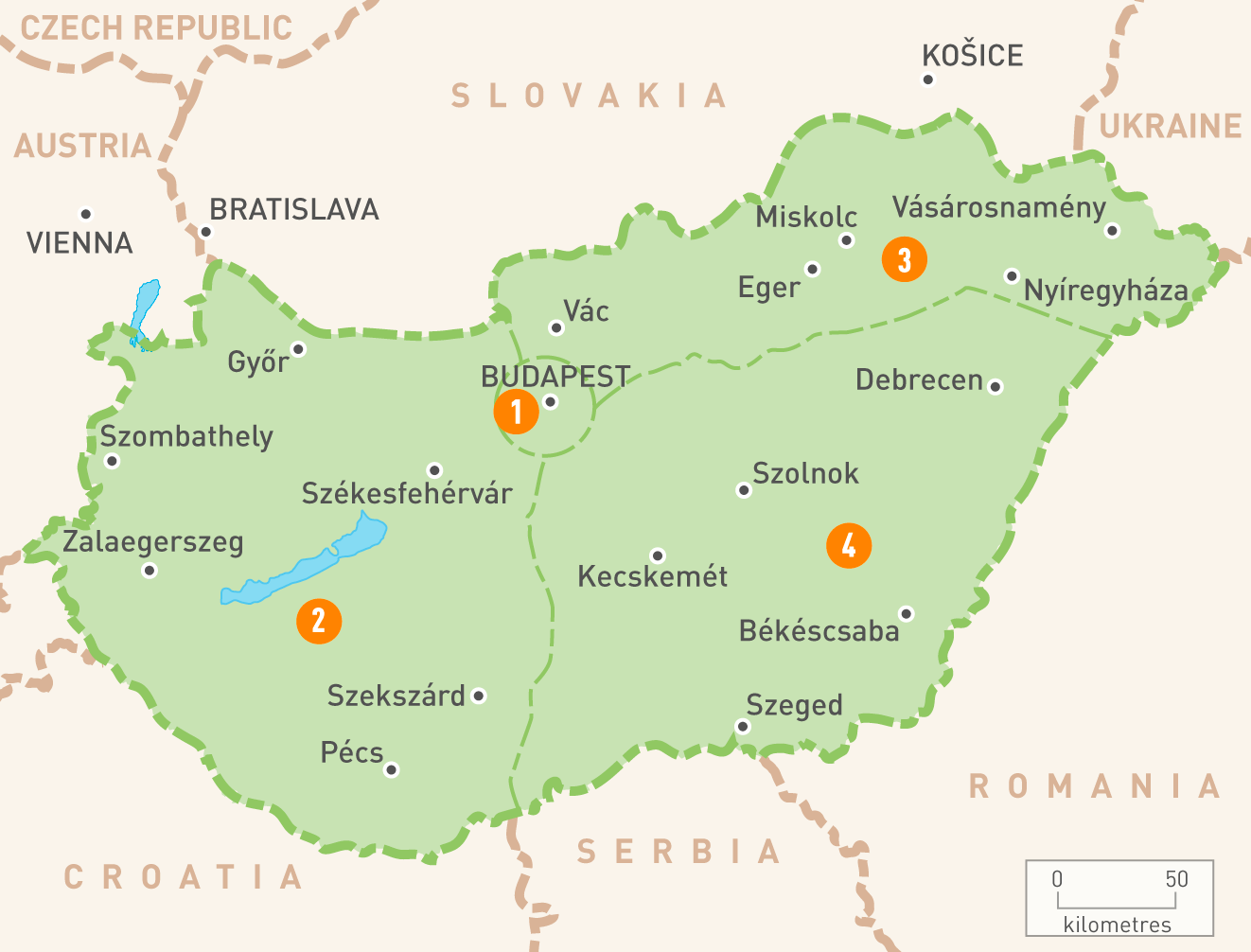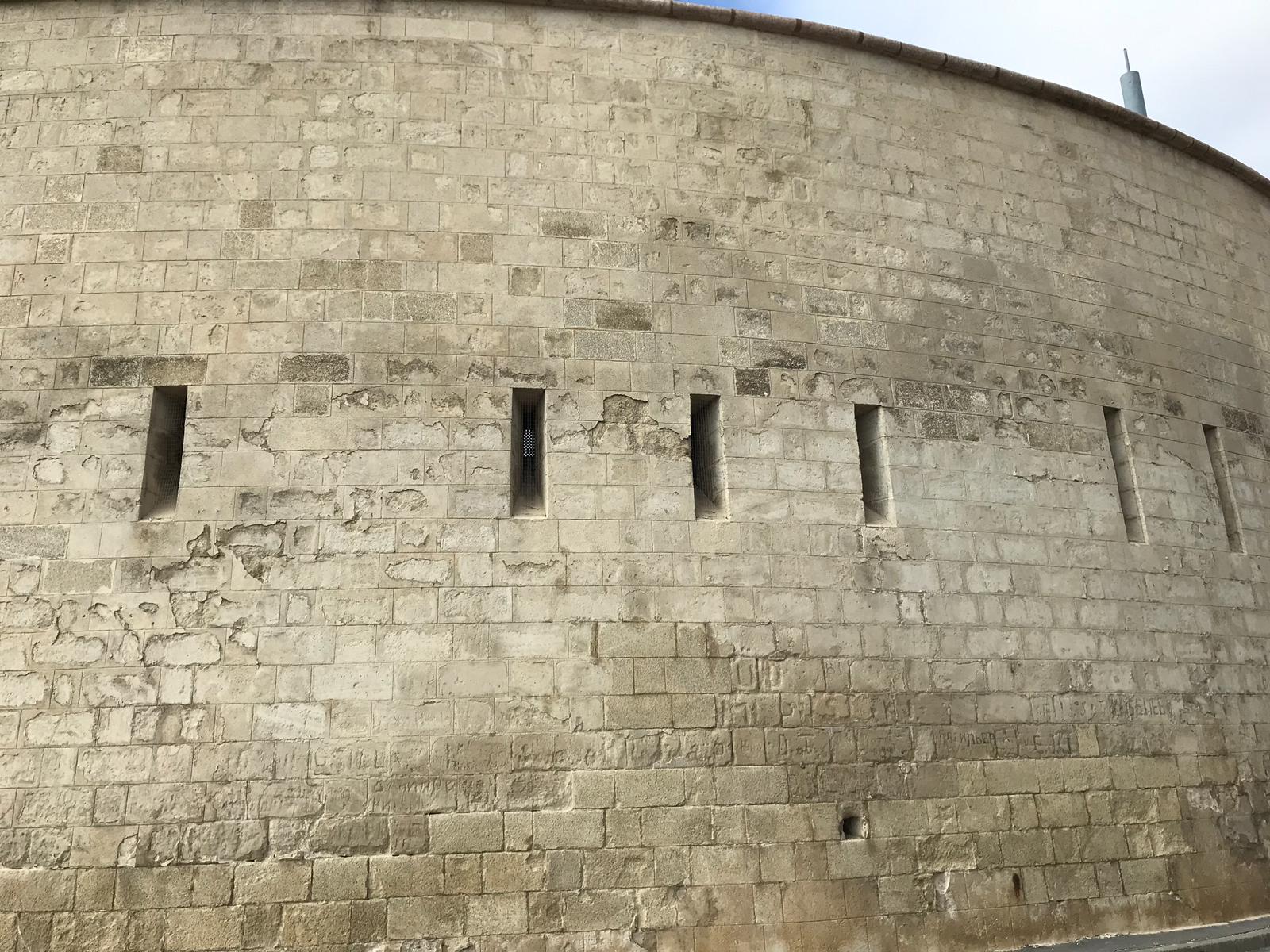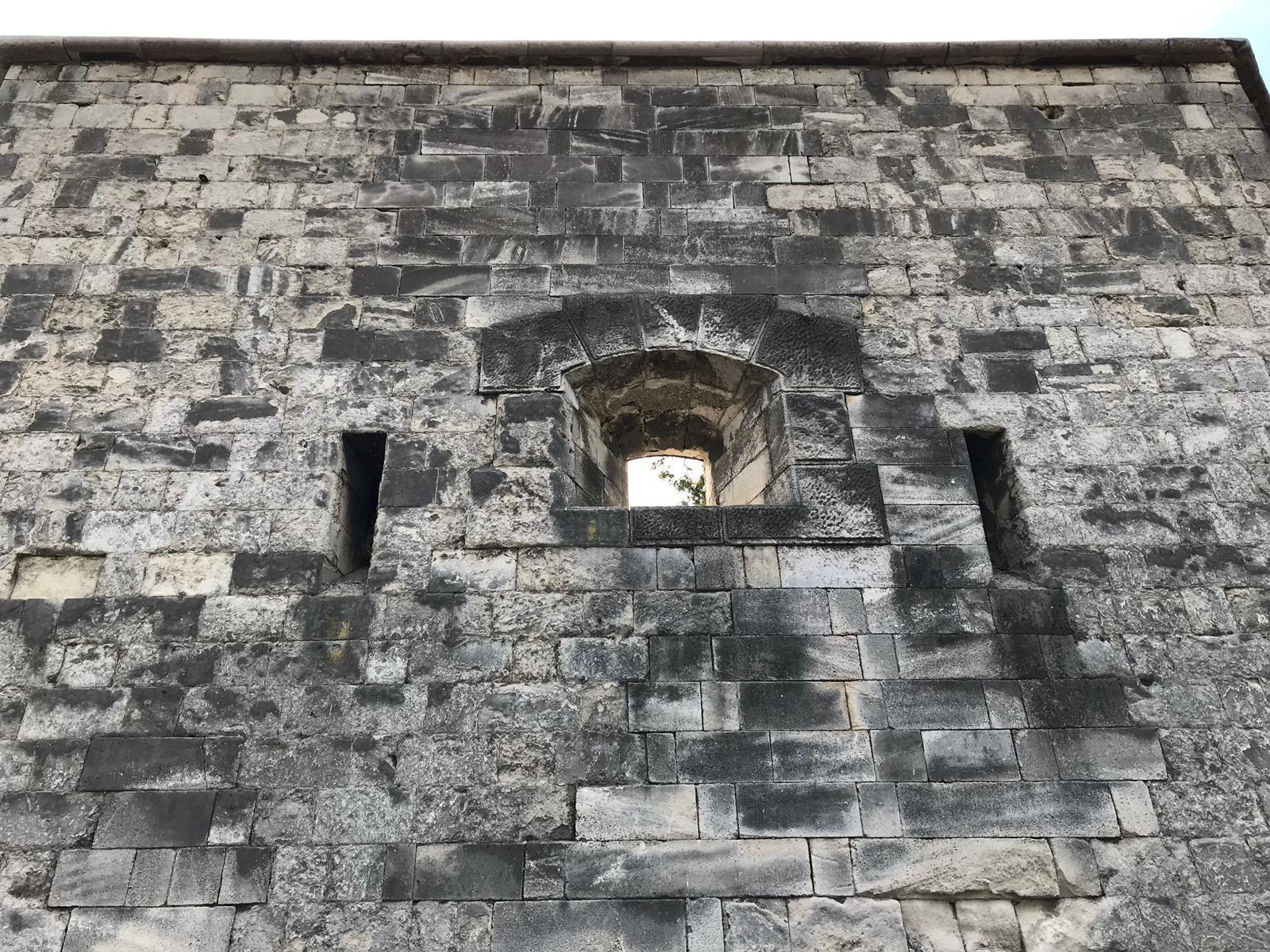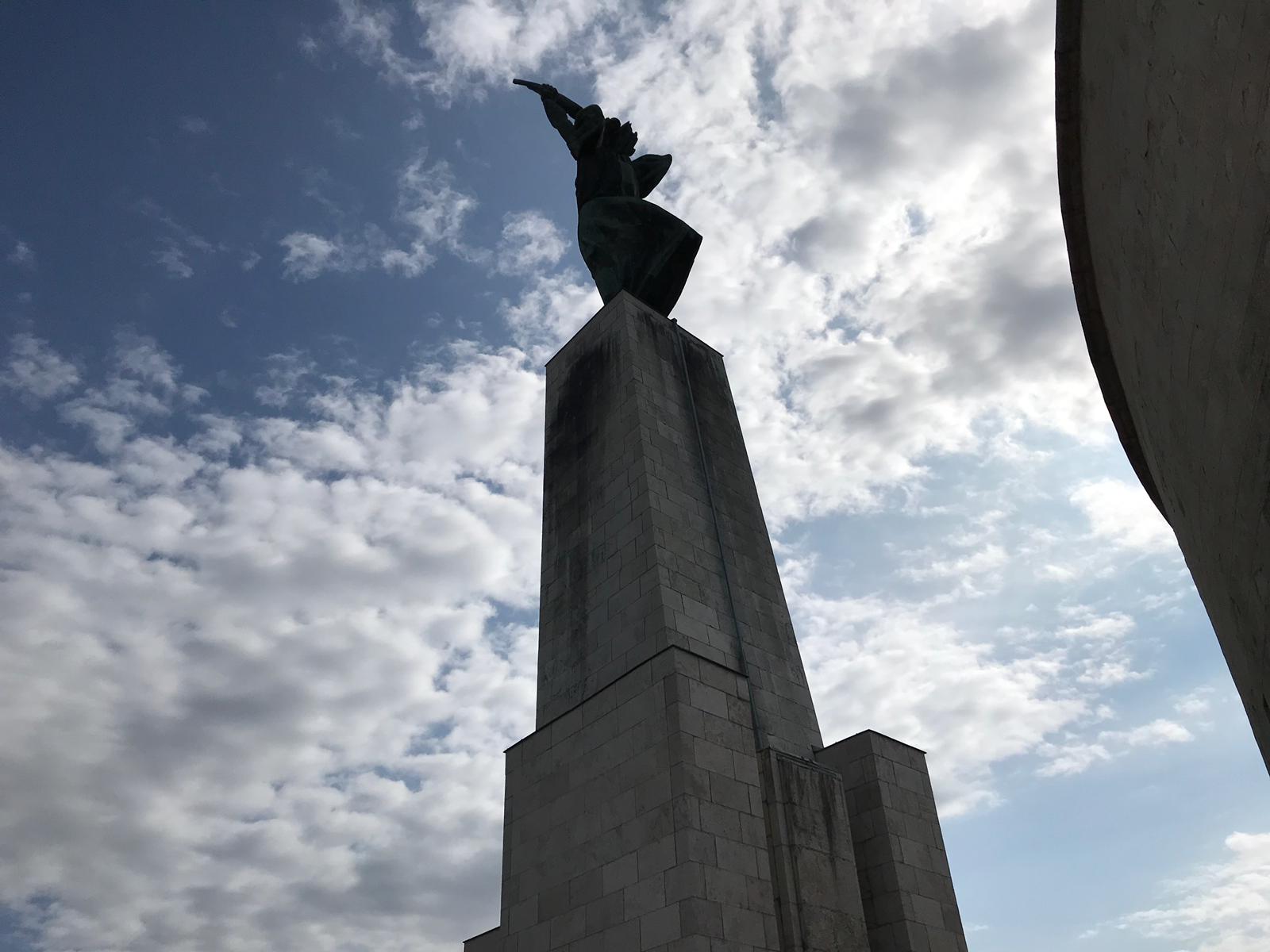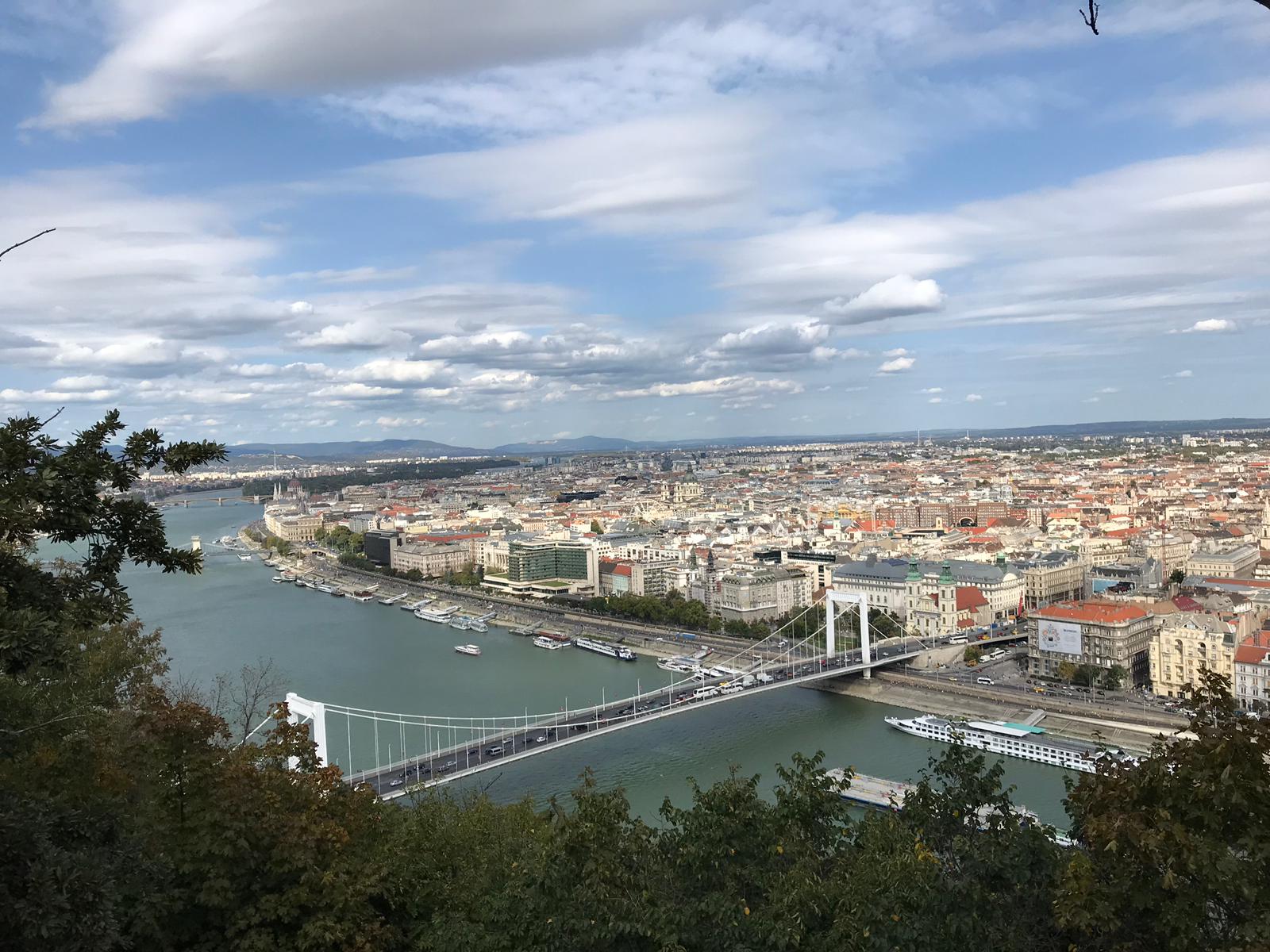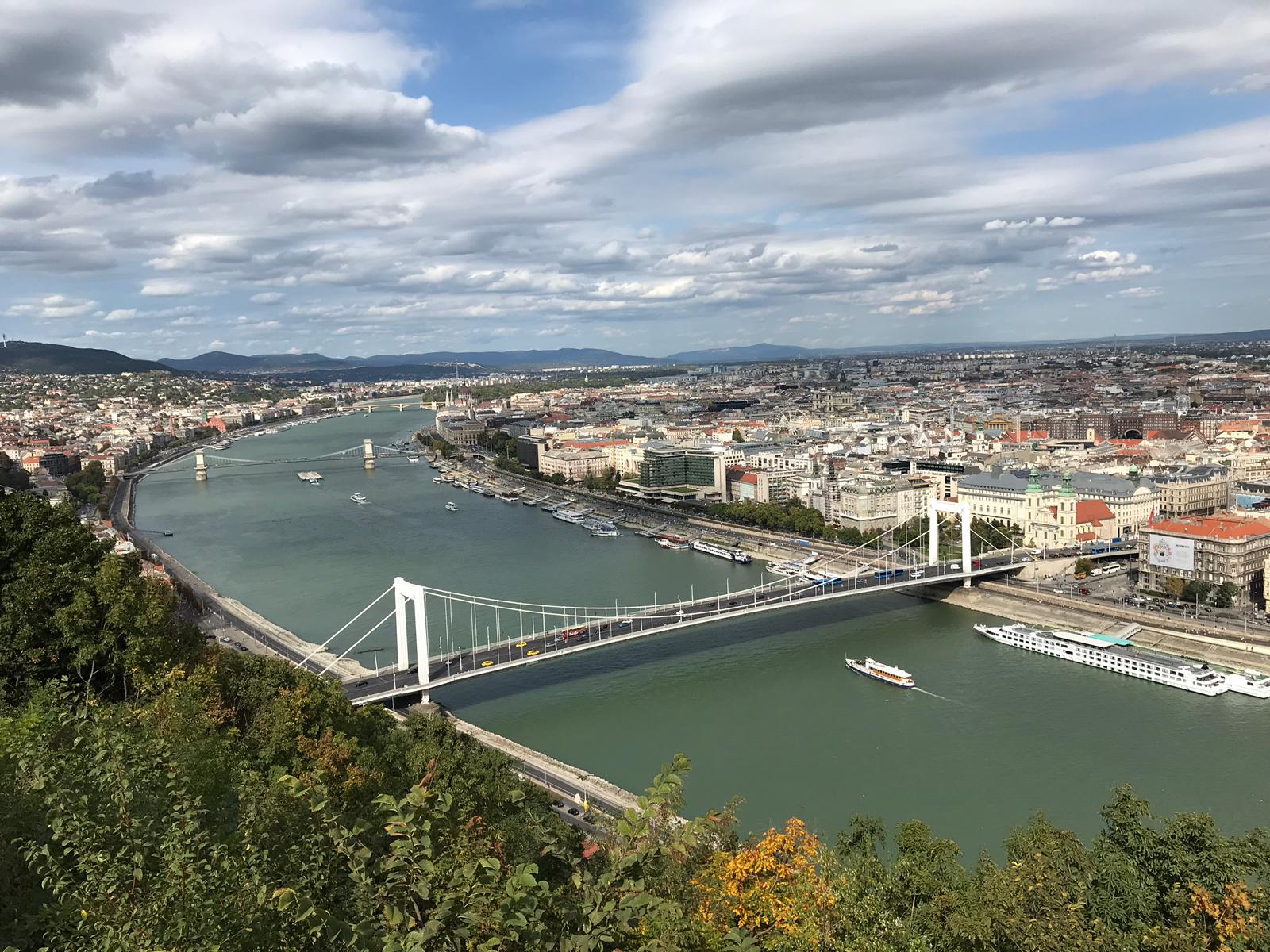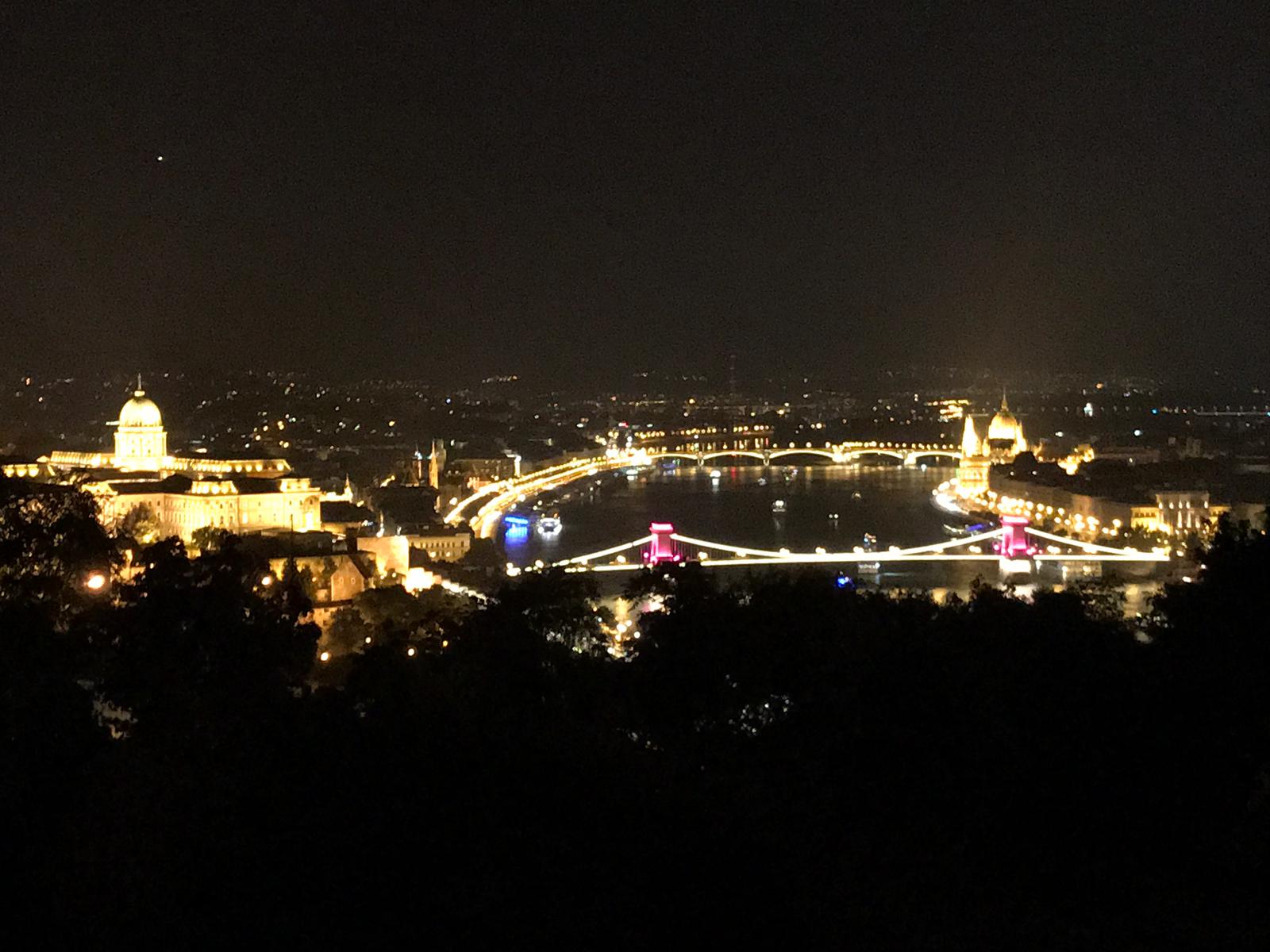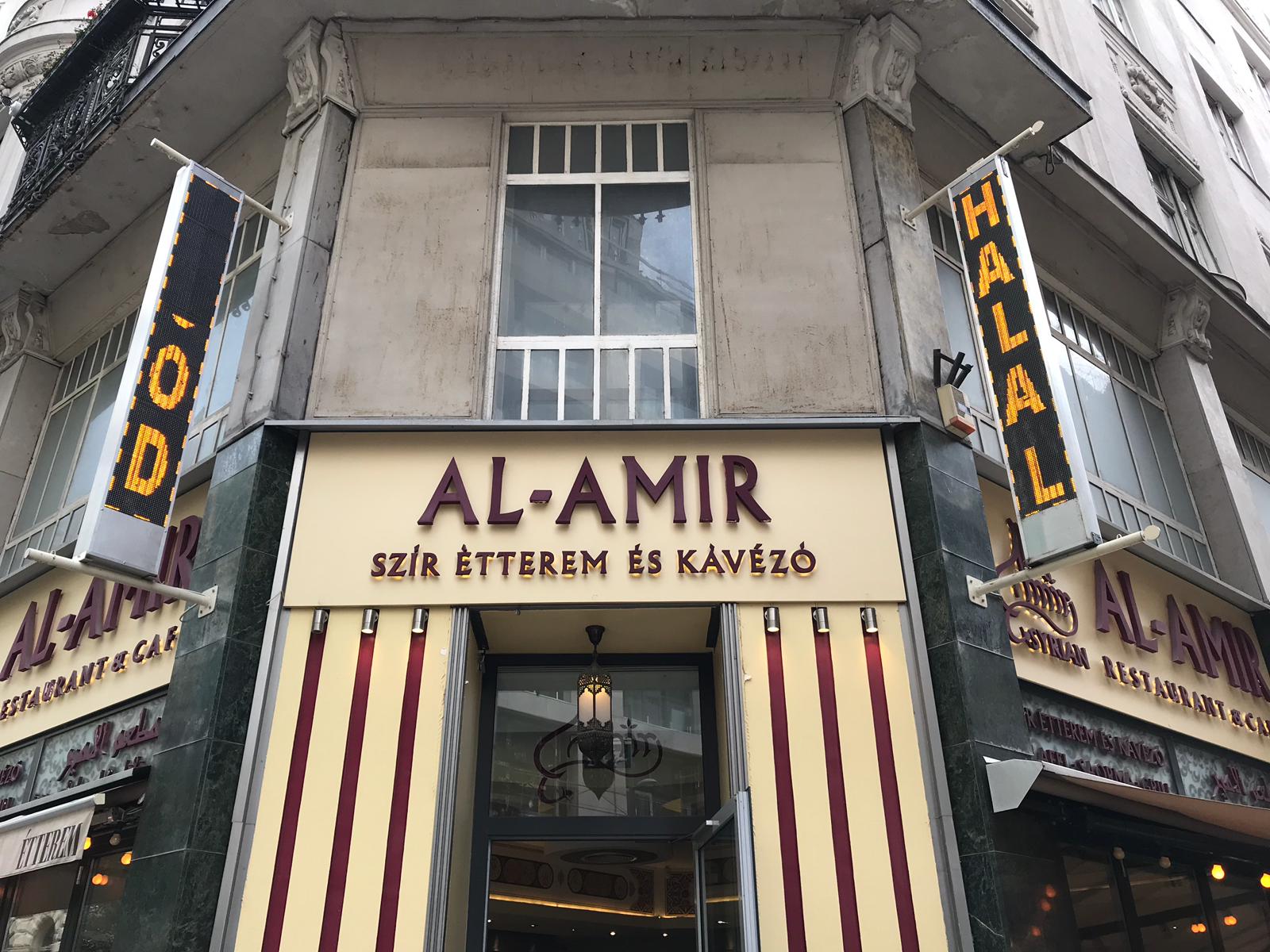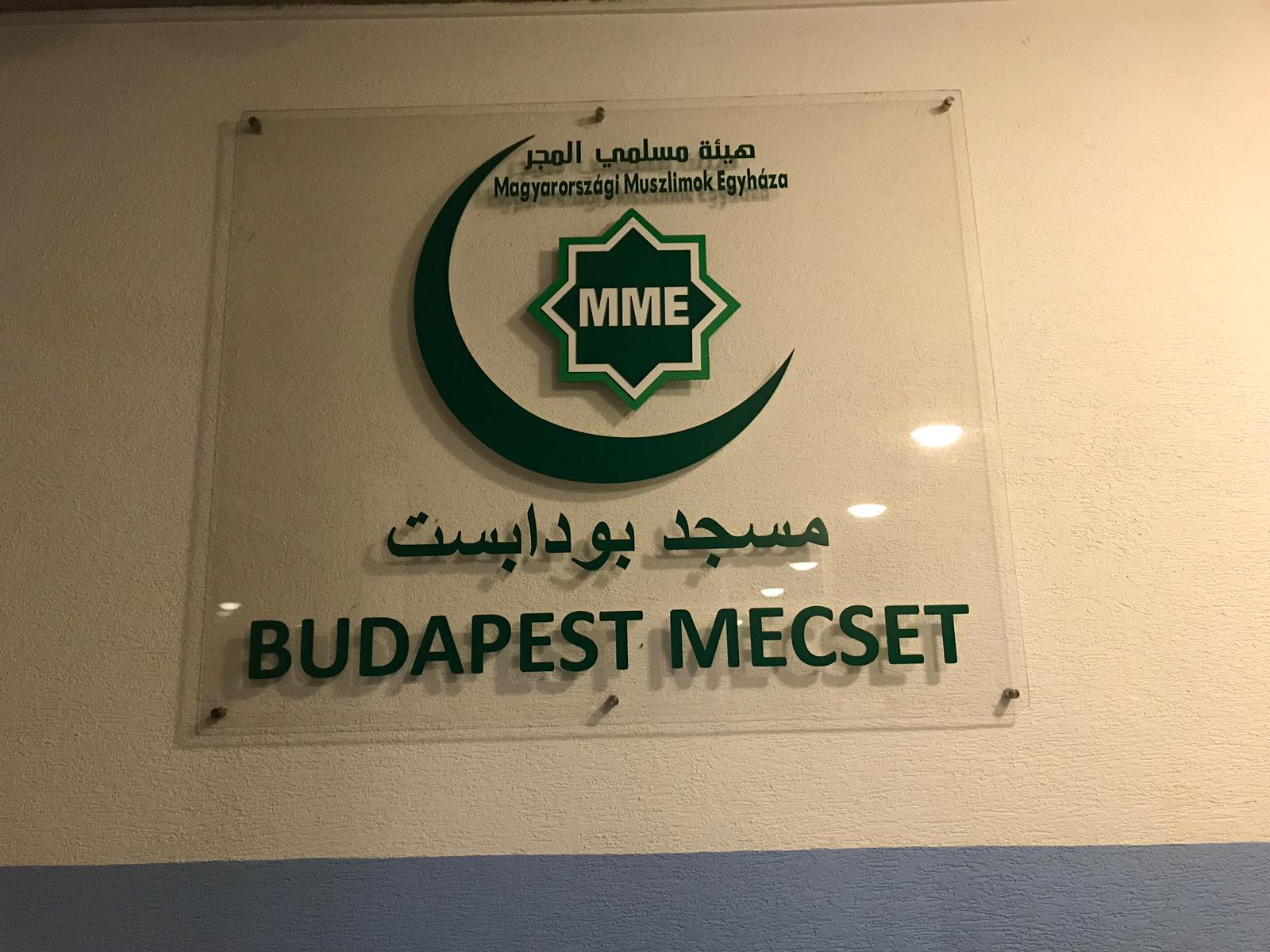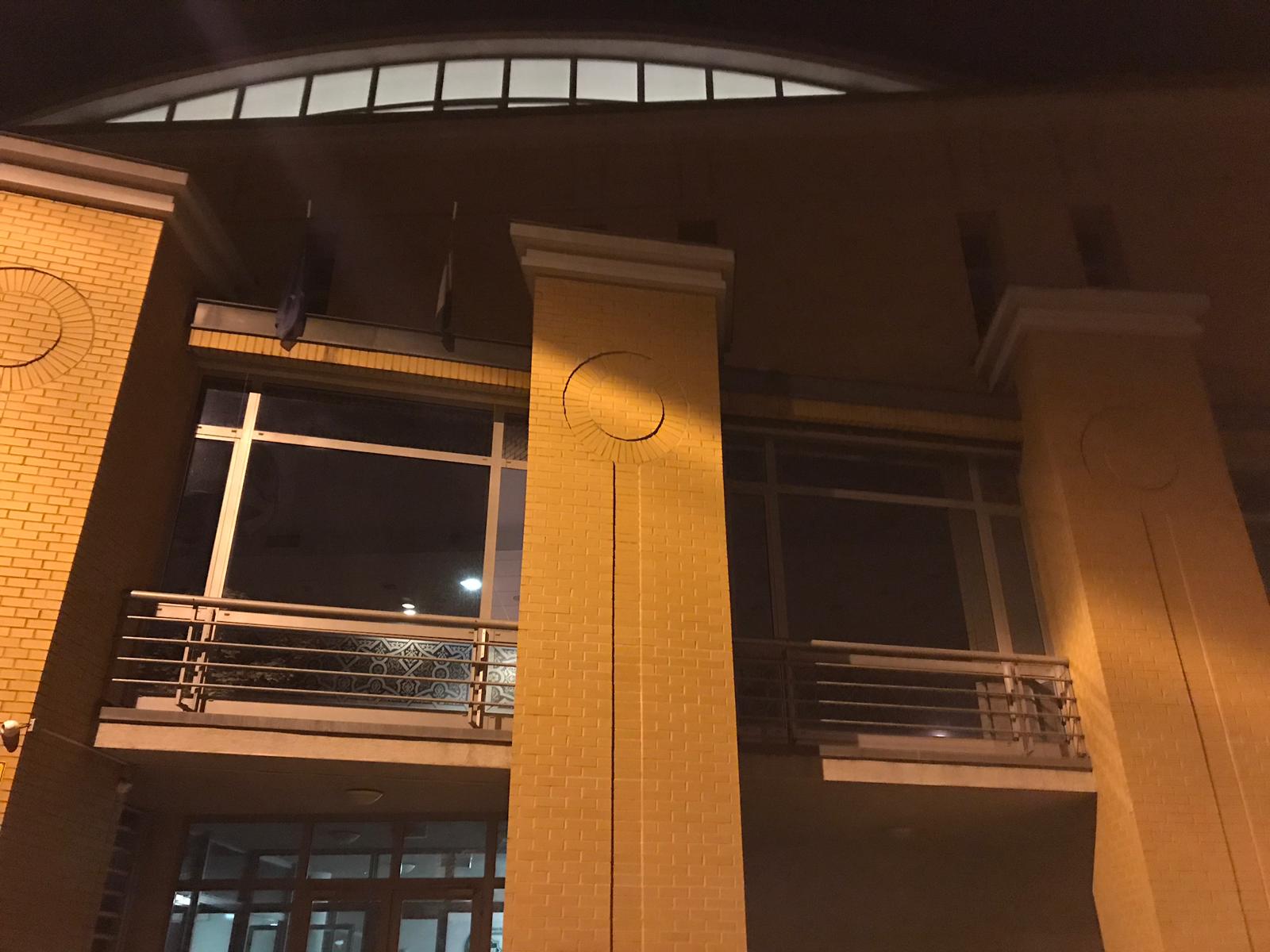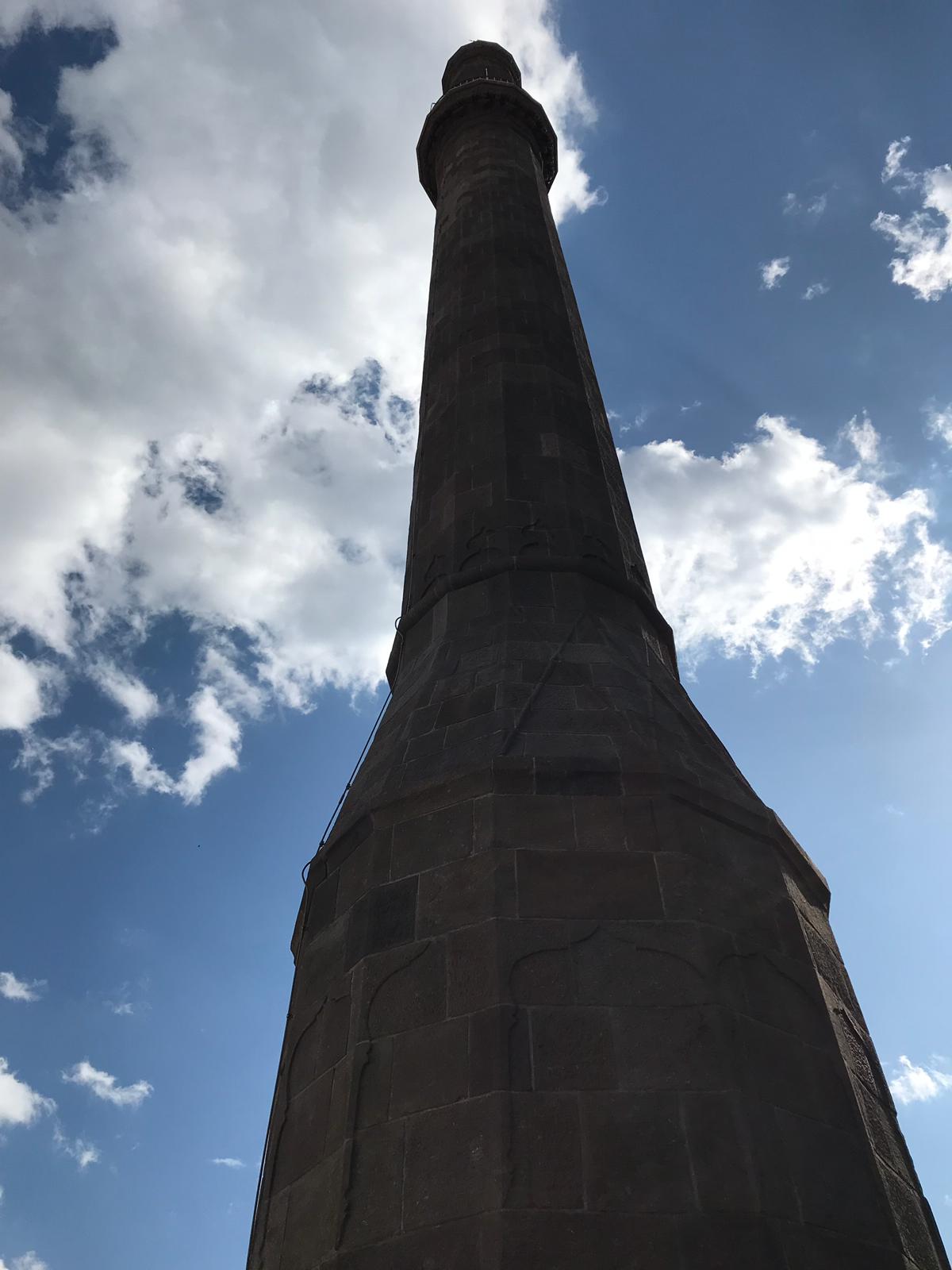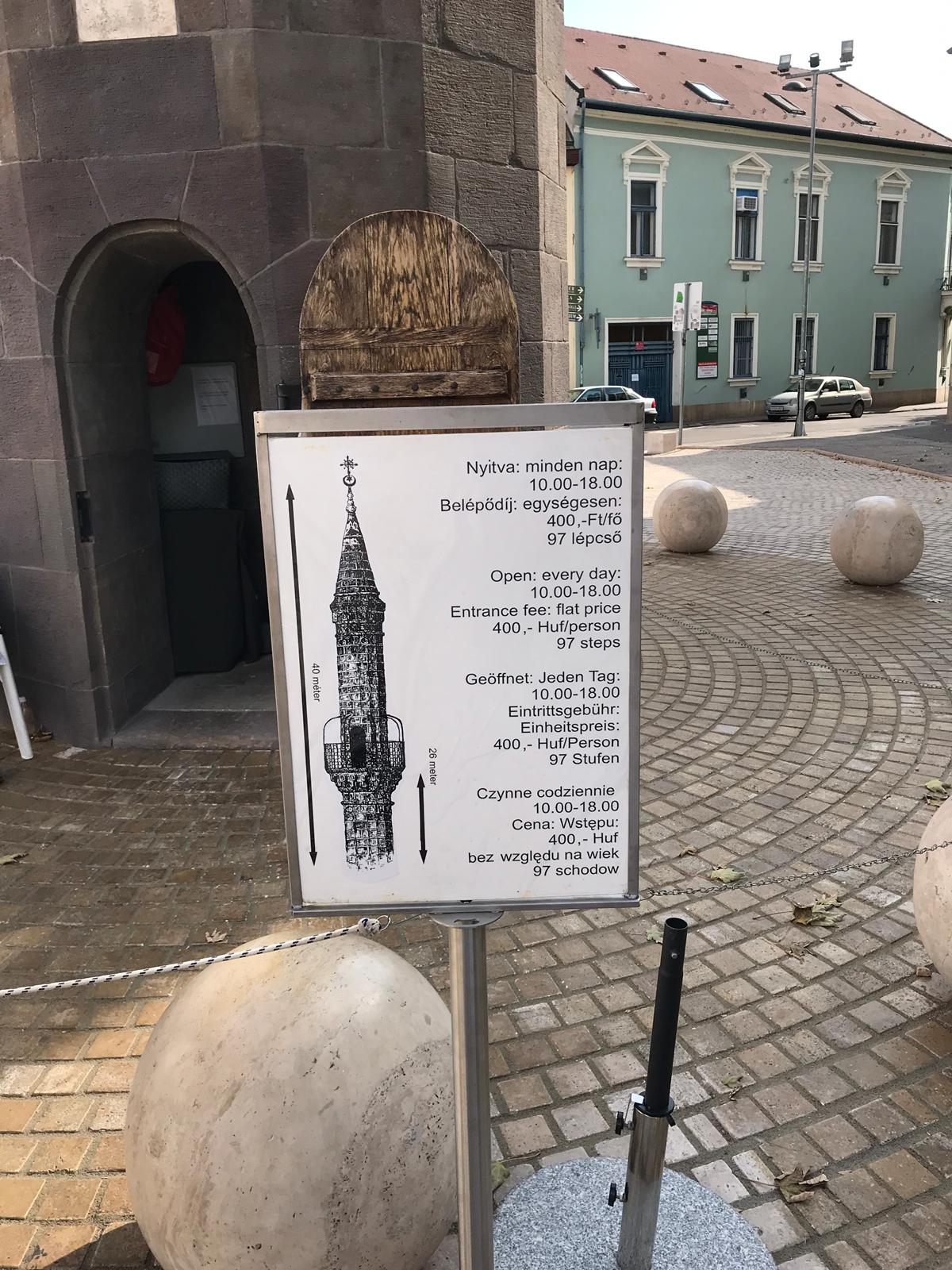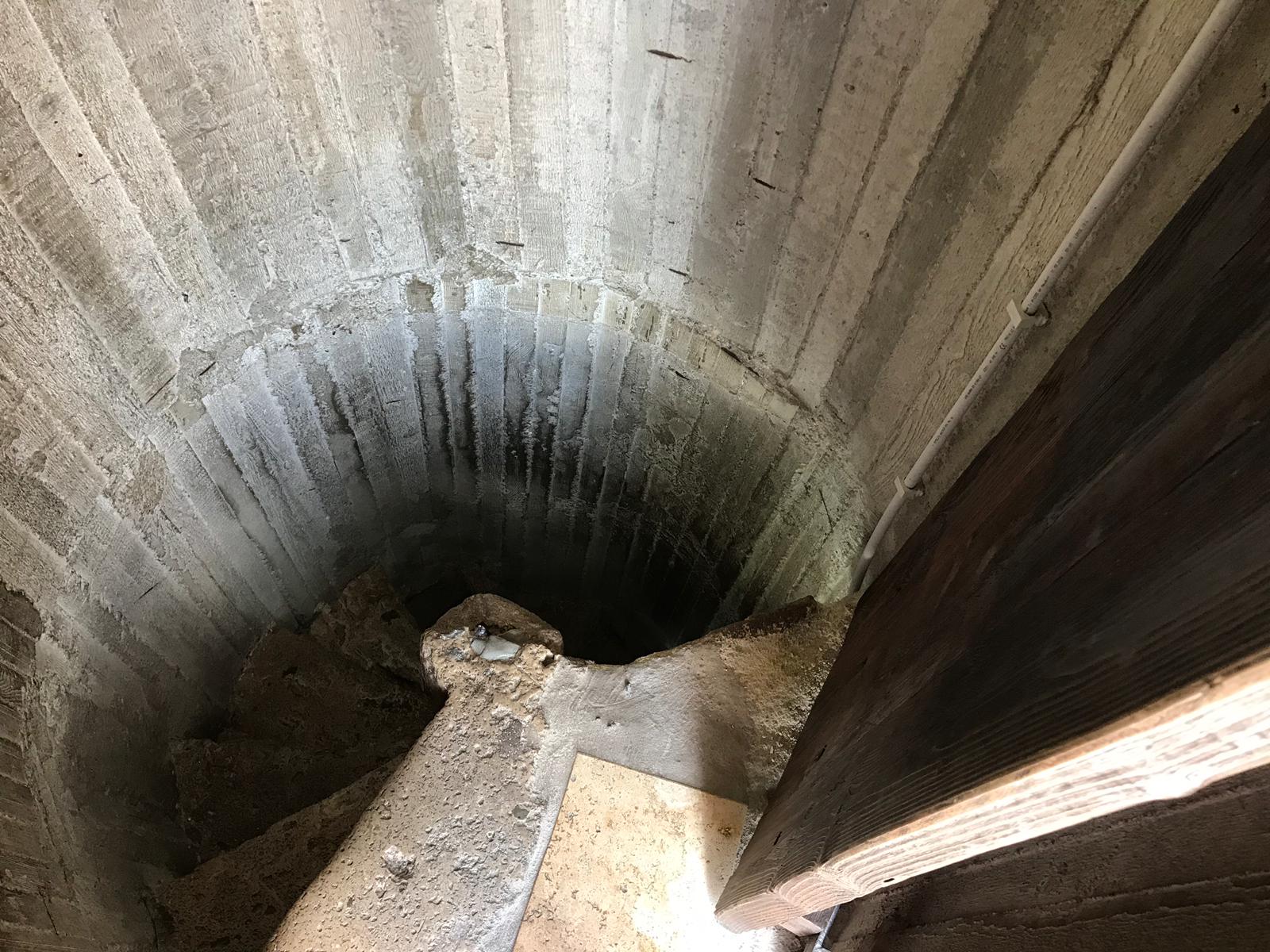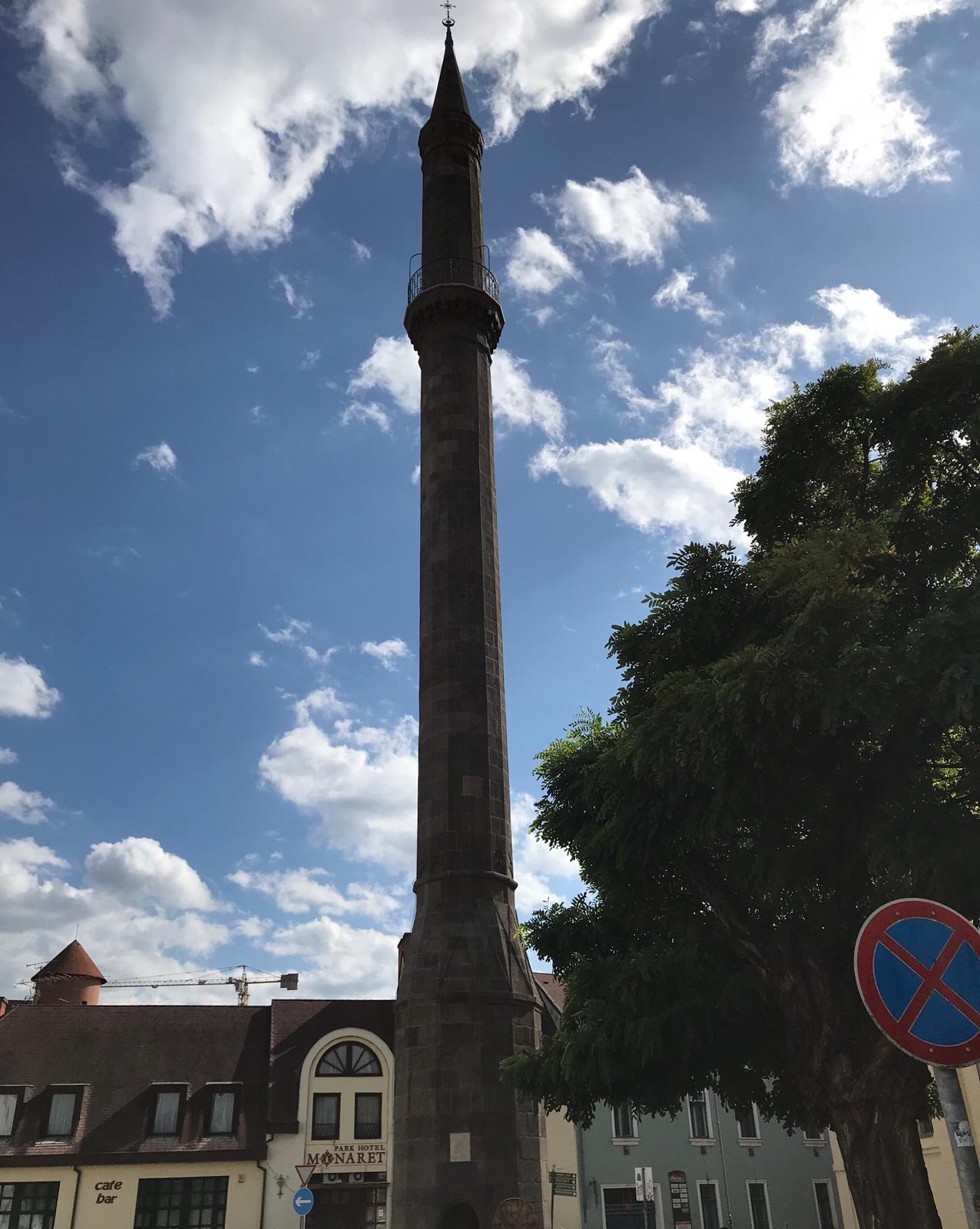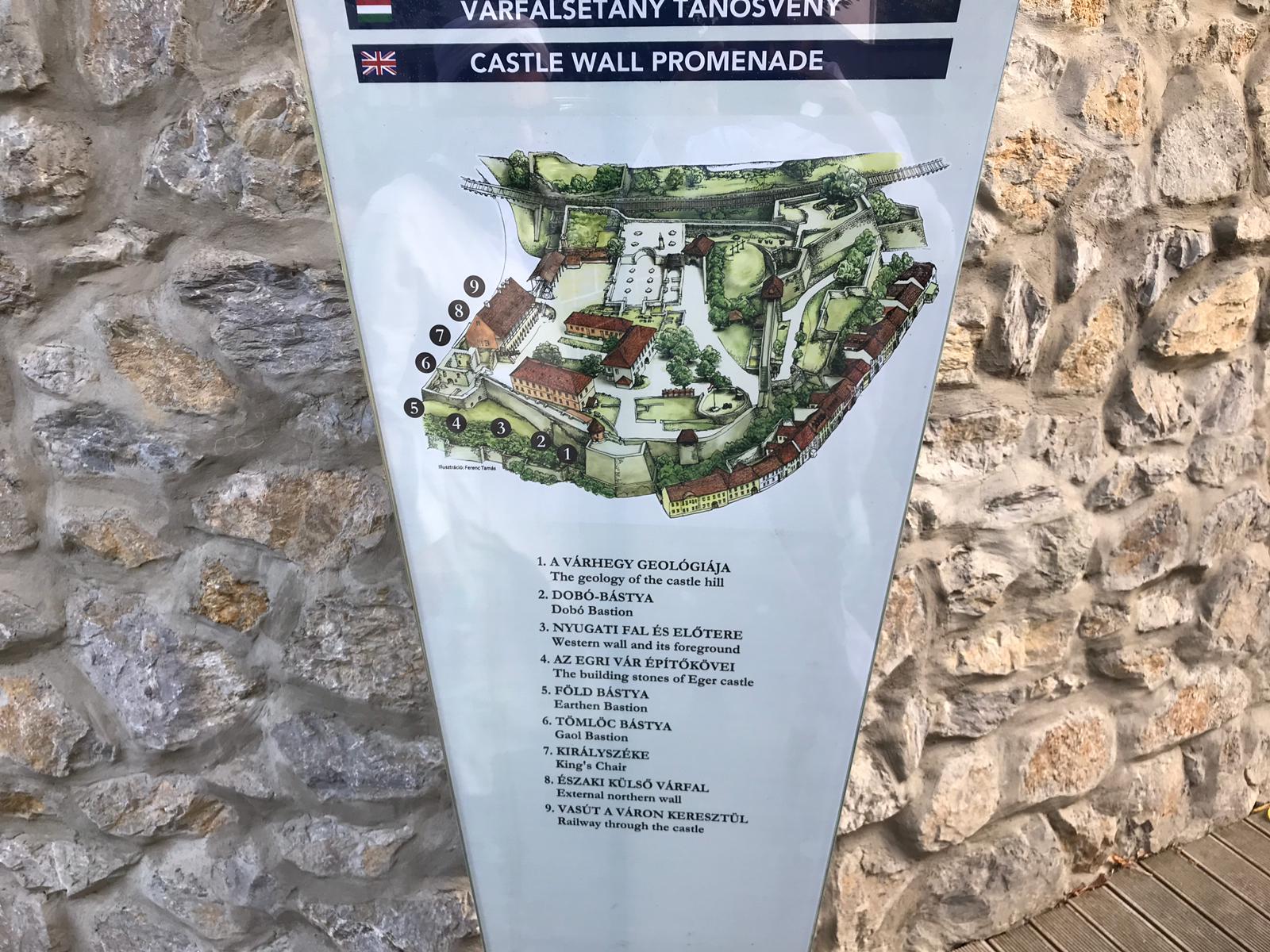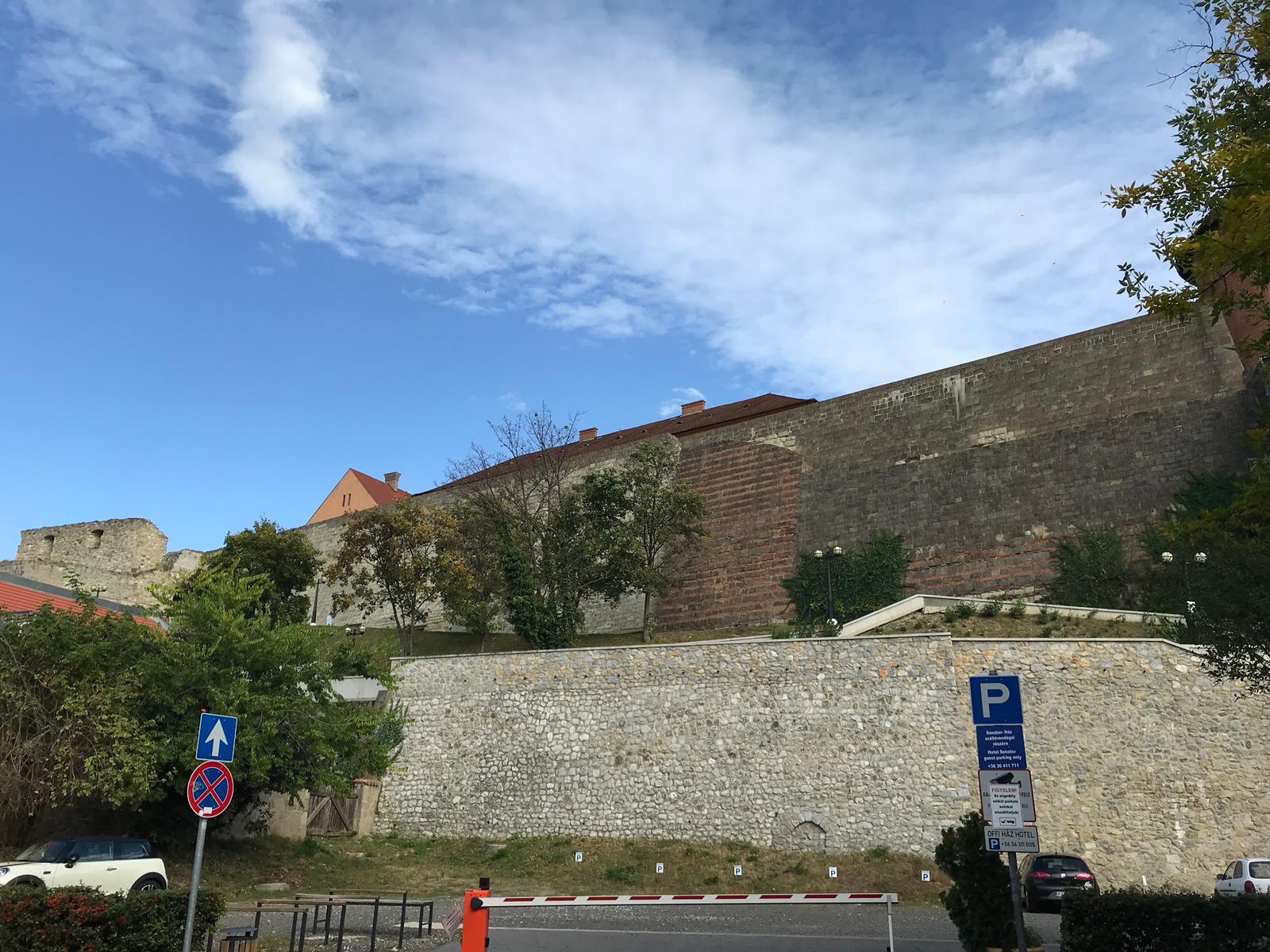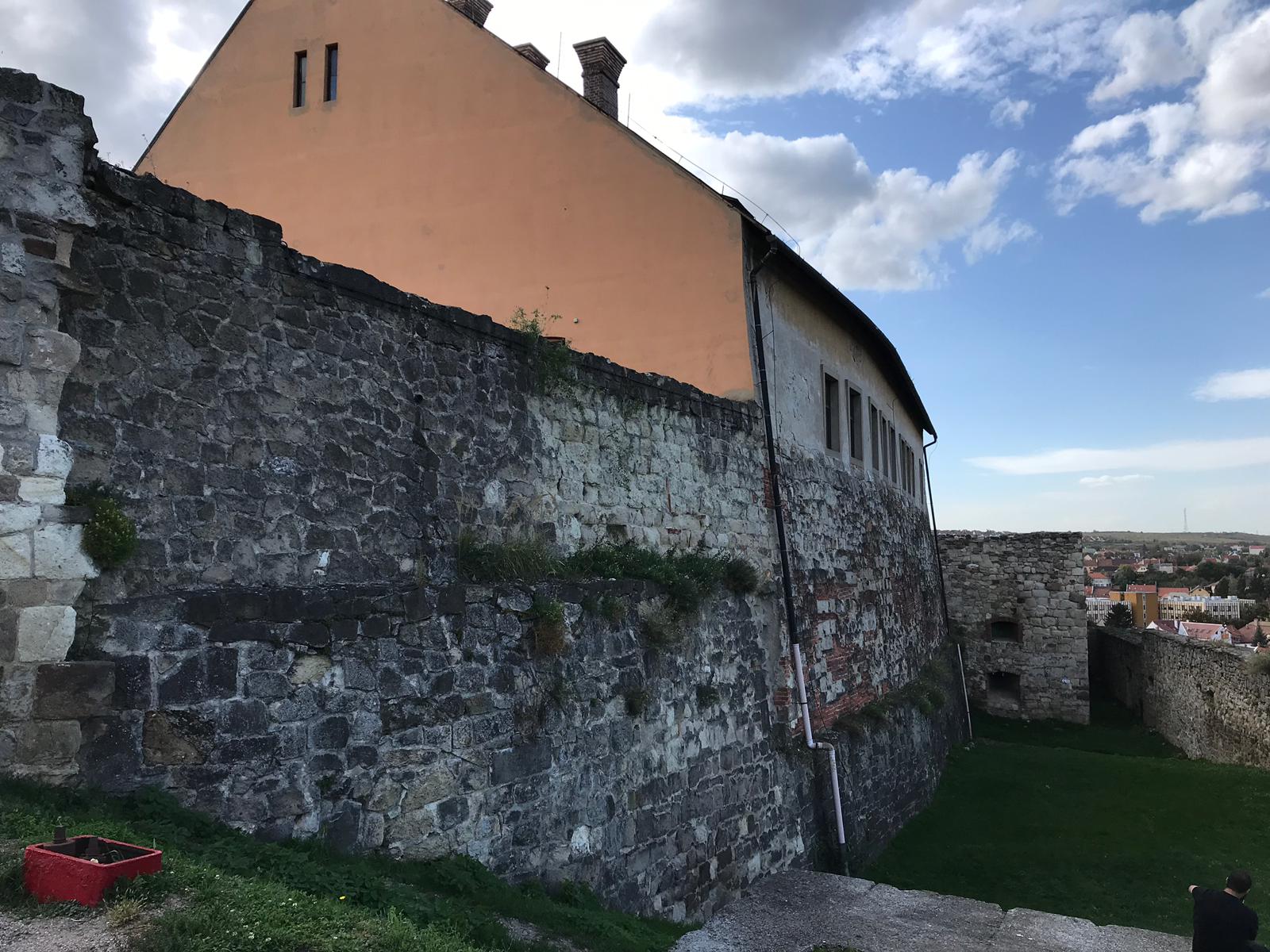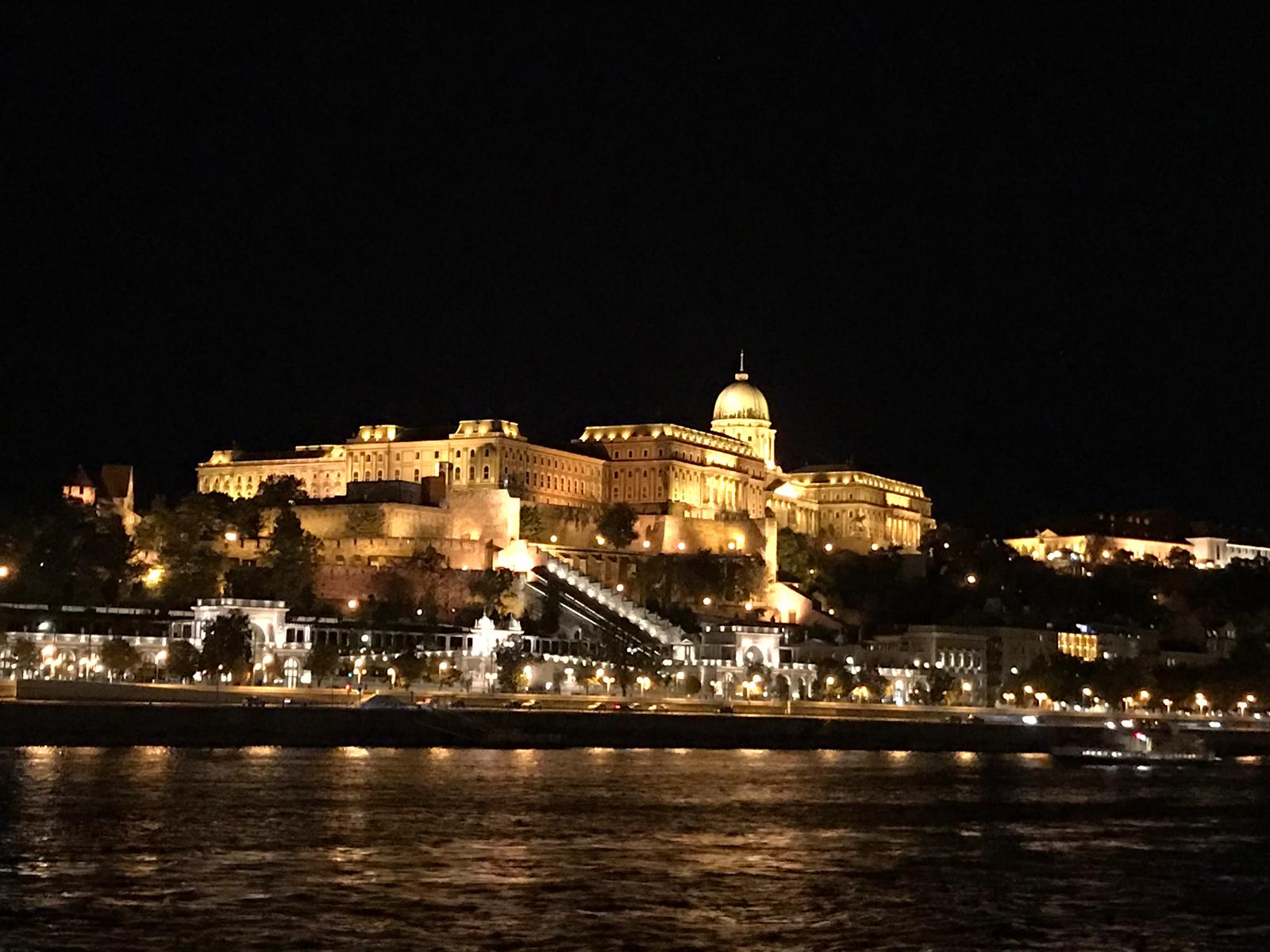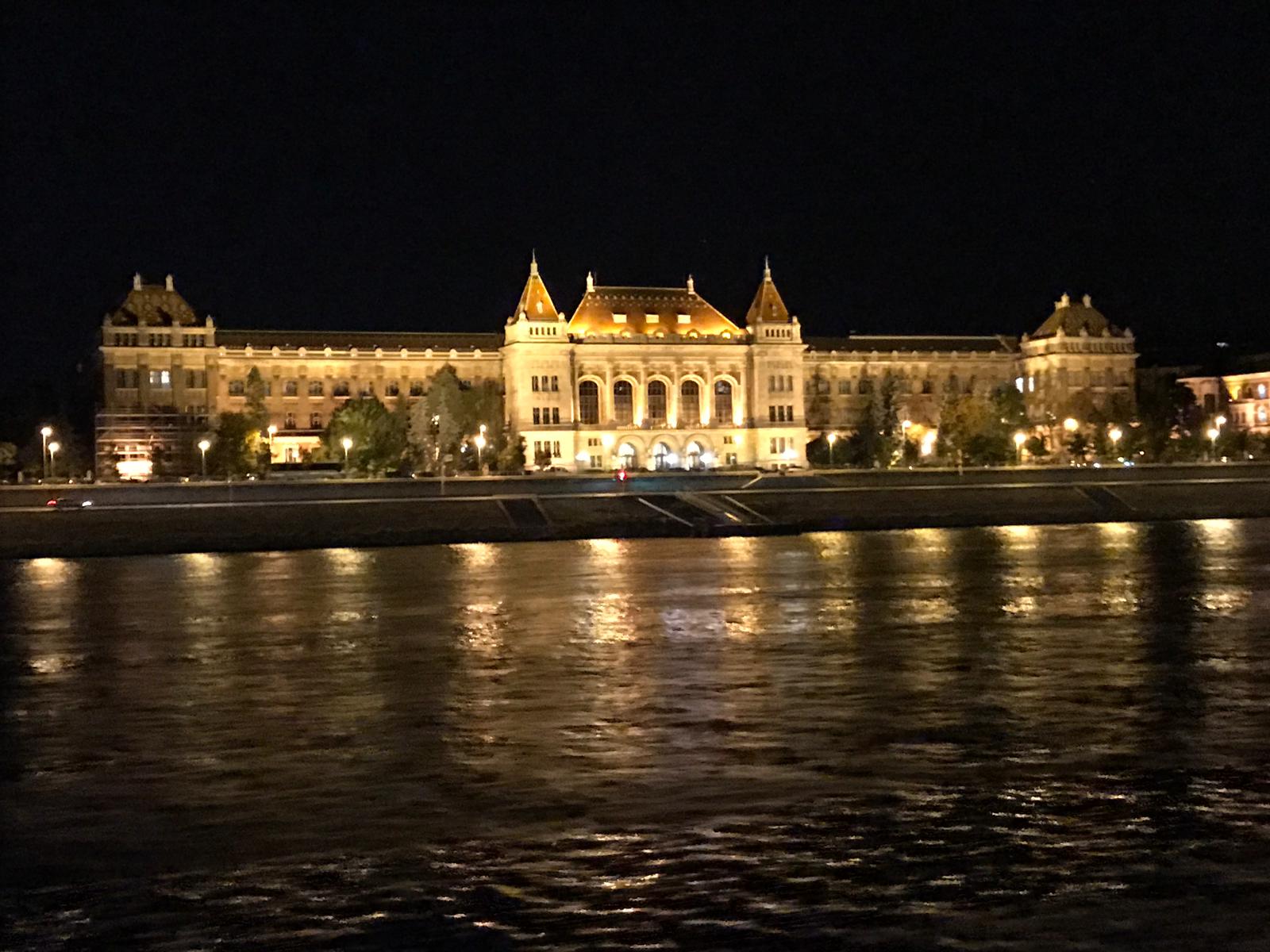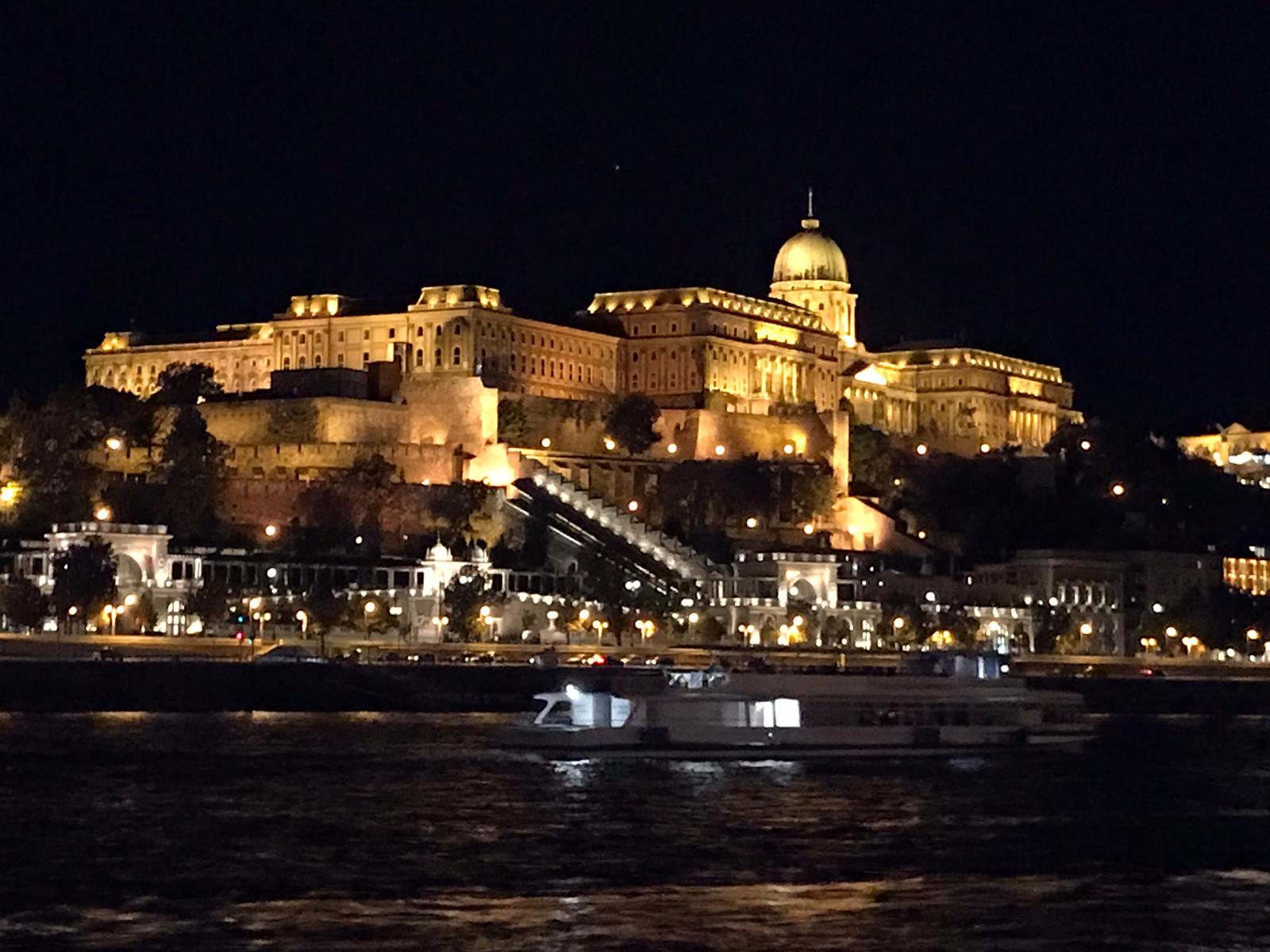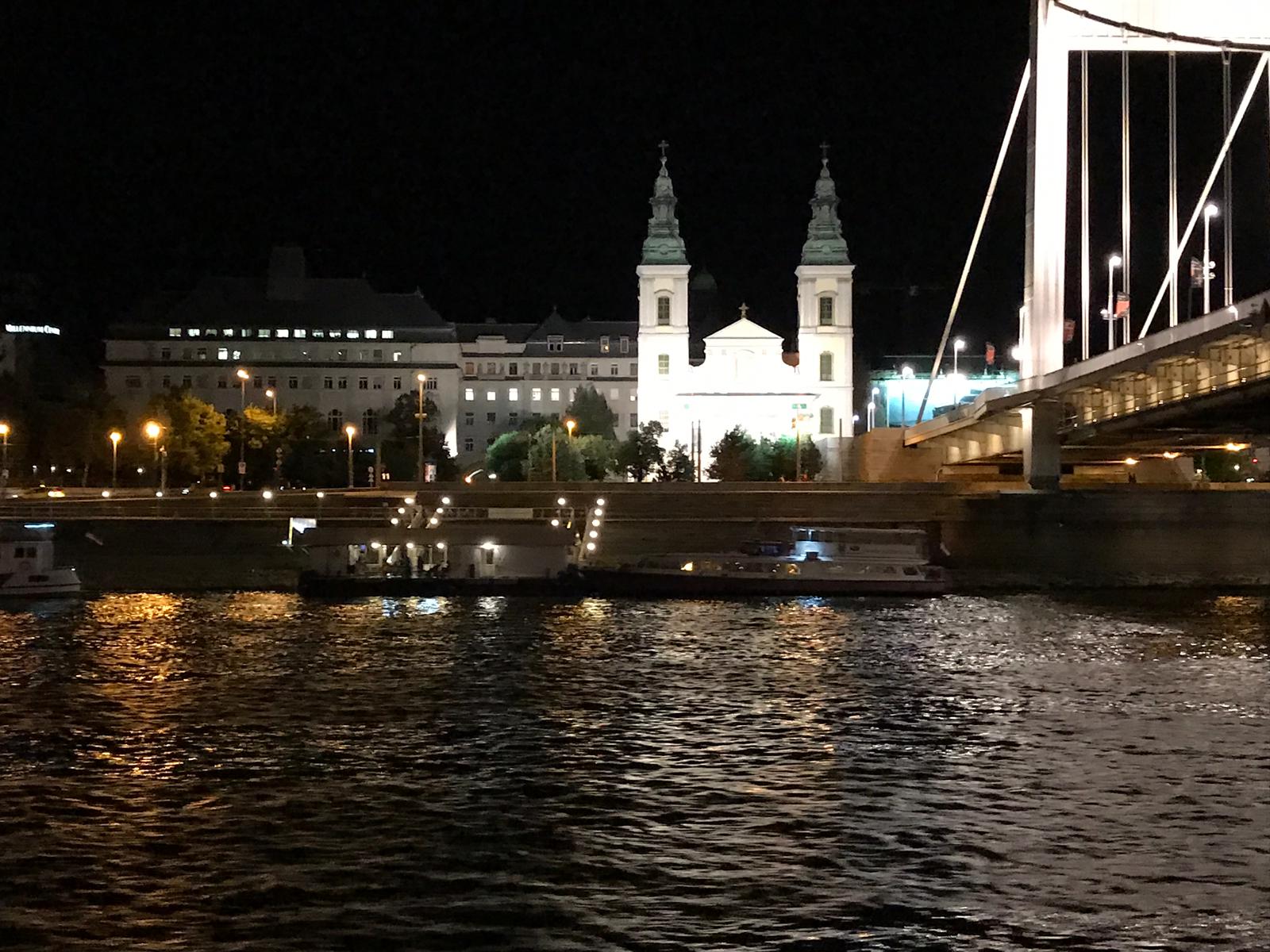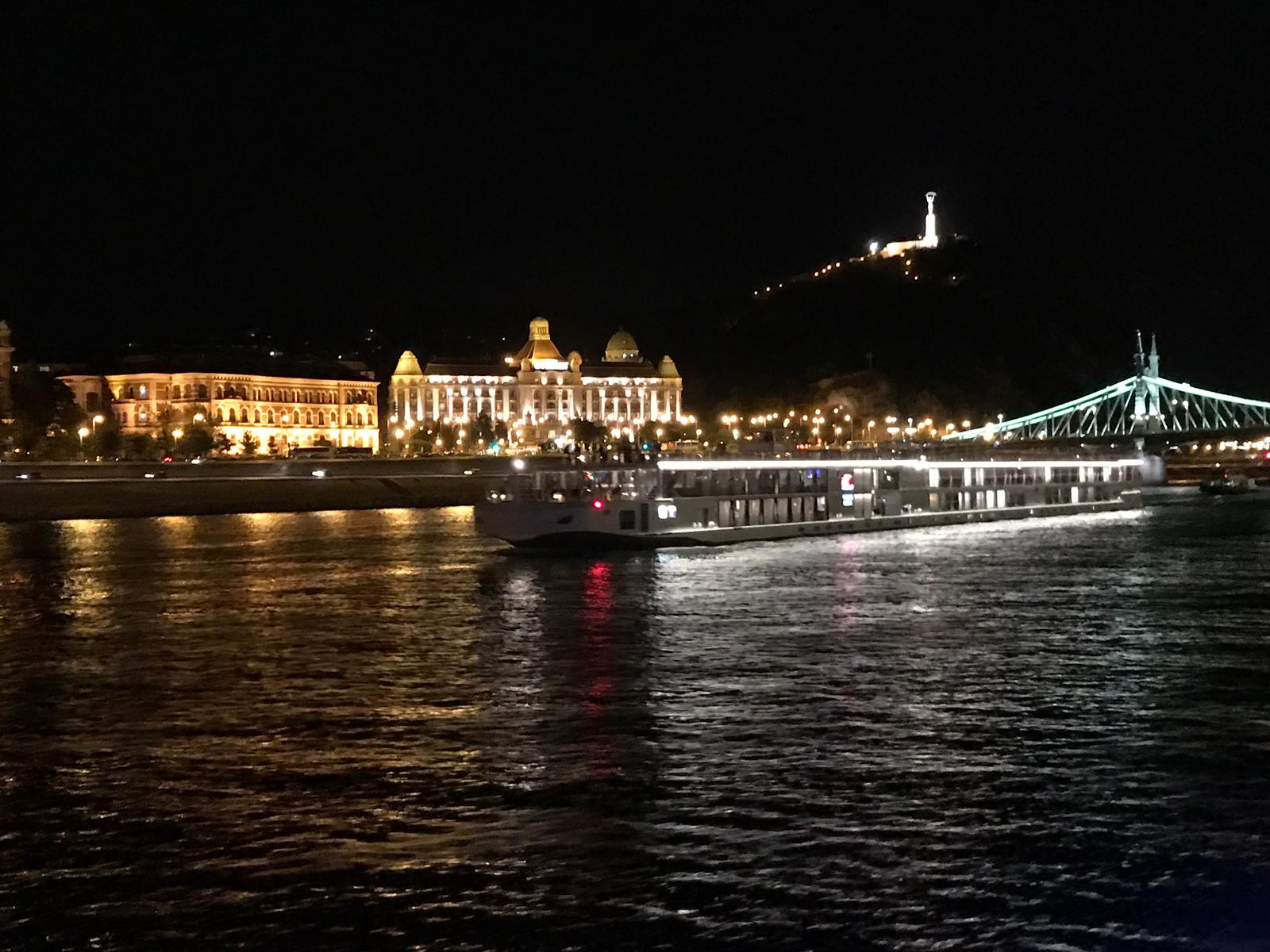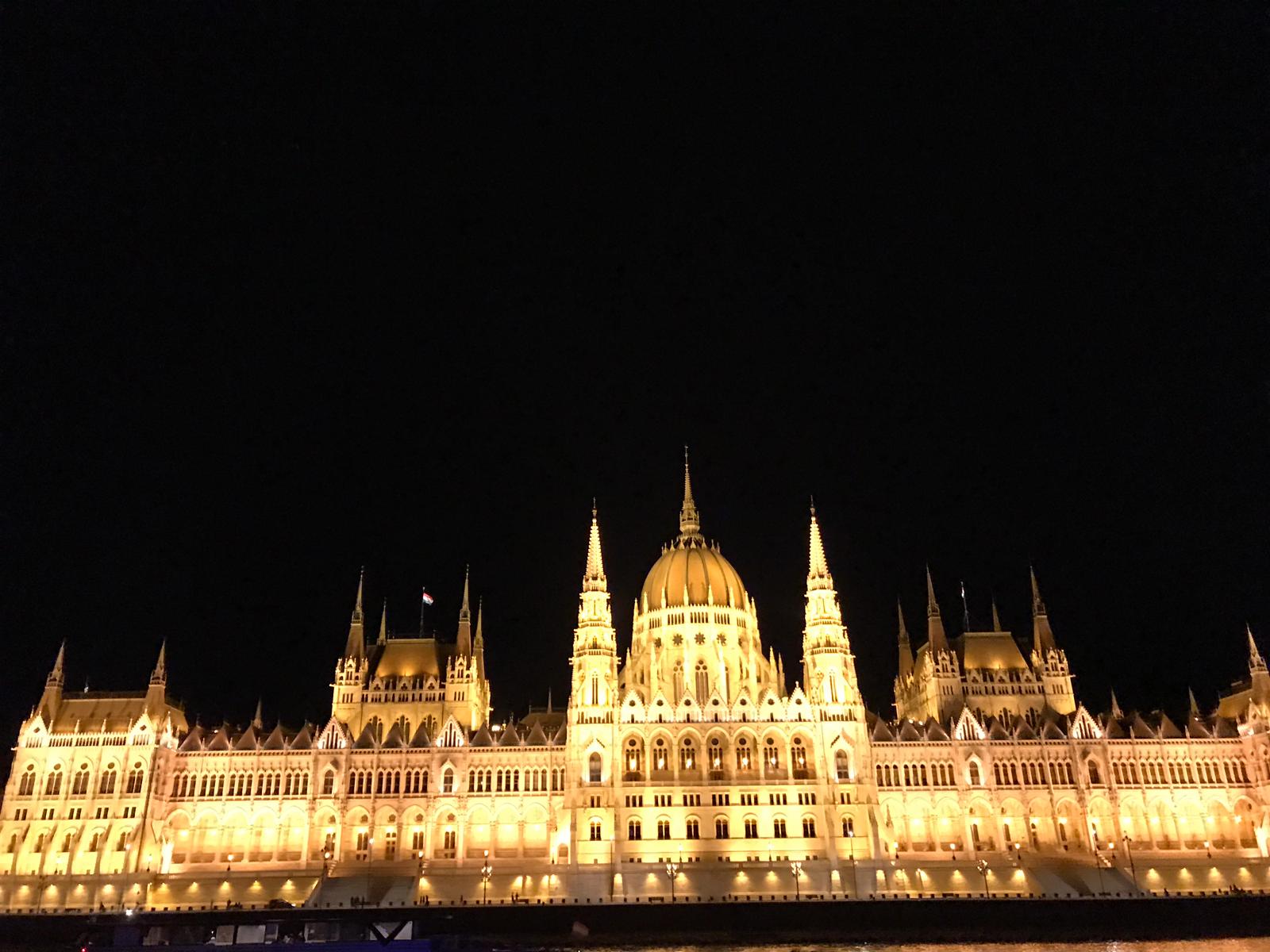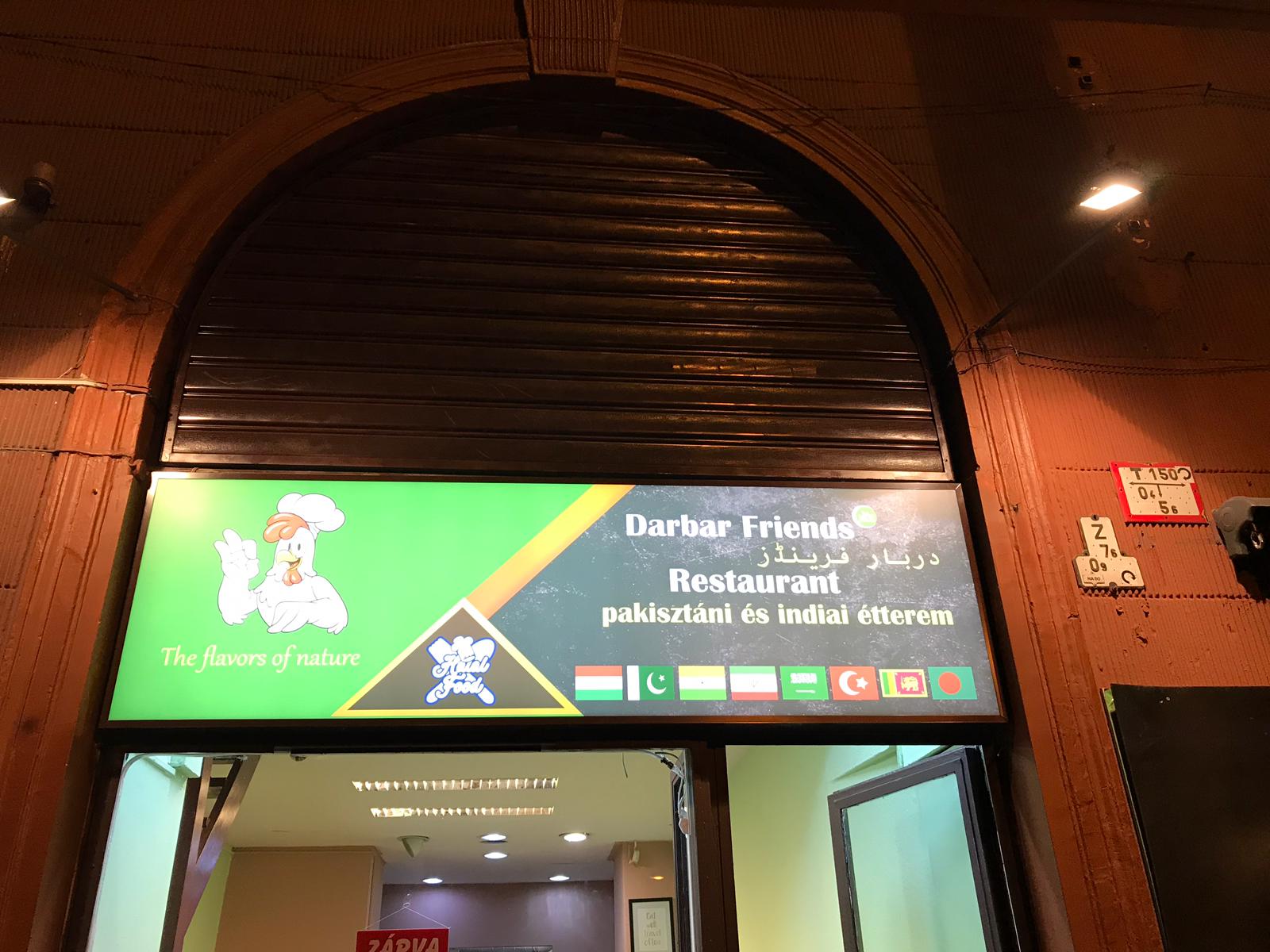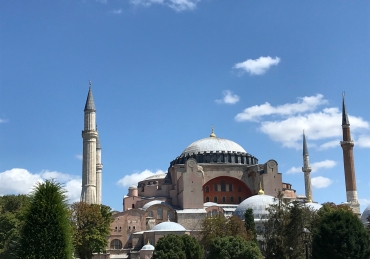Visit to Greece and Hungary with Shaykh al-Islam Mufti Muhammad Taqi Usmani
By Yusuf Shabbir
In the name of Allah, the Compassionate the Merciful
Day 1 – Thursday 26 September 2019
From the UK to Greece
Introduction
One week ago, my dear colleague Mawlānā Hanif Dudhwala informed me that our respected Shaykh al-Islam Mufti Muhammad Taqi Usmani (b. 1362/1943) plans to visit the UK and wishes to visit Greece and Hungary prior to this. Over the past fifteen months, I have been fortunate to have accompanied Mufti Ṣāḥib to several countries including Albania, Bosnia, Cyprus, Macedonia, Malta, Montenegro, Uzbekistan and Pakistan, details of which have been outlined in earlier travelogues. These trips proved to be extremely beneficial, therefore this was an opportunity not to be missed. Mawlānā Hanif requested me to plan and coordinate the journey.
Arrival into Greece
It was decided that Mufti Ṣāḥib and his respected wife (Khālā) would travel directly from Pakistan to Greece and meet us there. Thus, we depart on the 10.50am Lufthansa Airlines from Manchester to Munich and thereafter from Munich to Athens, where we arrive at 6.25pm. The time difference between Greece and the UK is two hours. There are also cheap and direct holiday flights from several UK Airports to Athens and other destinations in mainland Greece and also the Greek islands. Our group from the UK comprises of Mawlānā Hanif, Mawlānā Rafiq Sufi, Salim Mohammed Patel of Bolton and myself.
Mufti Ṣāḥib and Khālā arrive a short while later at 8.05pm via Emirates Airlines, which departed from Karachi at midday with a changeover in Dubai. Mufti Ṣaḥib appears in good health. The last time I met him was a few weeks ago in al-Masjid al-Ḥarām on the evening of 11 Dhū al-Ḥijjah. Mufti Ṣāḥib made a low-key visit to Malaysia thereafter. His travels, despite his age, are remarkable.
At the Airport, a group of 20-25 people warmly welcome us. They include our dear brother Arshad, a clothes merchant of Pakistani origin, who is our principal contact here. They also include Mufti Abdurrazzaq, a graduate from Darul Uloom Karachi in 1989, who has been an Imam here since 1995.
Greece
Greece is a country in south-eastern Europe which includes more than 2000 islands in the Aegean and Ionian seas, of which about 170 are inhabited. Situated on the southern tip of the Balkan Peninsula, the country is located at the crossroads of Europe, Asia, and Africa. It shares land borders with Albania to the northwest, North Macedonia and Bulgaria to the north, and Turkey to the northeast. The Aegean Sea lies to the east of the mainland, the Ionian Sea to the west, the Cretan Sea and the Mediterranean Sea to the south. Its population exceeds 10 million and it is a popular tourist destination. The country’s economy is based on the service sector (80-85%) and industry (12-15%), while the agricultural sector consists only 3-4% of the national economic output. The most important economic industries in Greece are tourism and merchant shipping.
Greece is considered the cradle of Western civilisation, it is the birthplace of democracy, Western philosophy, Western literature, historiography, political science, major scientific and mathematical principles and the Olympic Games. From the 8th century BC, the Greeks were organised into various independent city-states, known as poleis (singular polis), which spanned the entire Mediterranean region and the Black Sea. Philip of Macedon united most of the Greek mainland in the fourth century BC, with his son Alexander the Great rapidly conquering much of the ancient world, from the eastern Mediterranean to India. Greece was annexed by Rome in the second century BC, becoming an integral part of the Roman Empire and its successor, the Byzantine Empire, which adopted the Greek language and culture. The Greek Orthodox Church, which emerged in the first century, helped shape modern Greek identity and transmitted Greek traditions to the wider Orthodox World. In the mid-15th century, the Ottomans conquered Greece and their rule lasted until 1821. Eventually, the modern nation of Greece emerged in 1830. Today, Greece is a unitary parliamentary republic and a member of the European Union.
The Encyclopaedia Britannica rightly states, “Greece is a country that is at once European, Balkan, Mediterranean, and Near Eastern. It lies at the juncture of Europe, Asia, and Africa and is heir to the heritages of Classical Greece, the Byzantine Empire, and nearly four centuries of Ottoman Turkish rule.” The country’s rich historical legacy is reflected in part by its 18 UNESCO World Heritage Sites.
Muslims in Greece
The Greek Constitution recognises Eastern Orthodoxy as the prevailing faith of the country, while guaranteeing freedom of religious beliefs. Official statistics do not exist on religious affiliation. However, estimates suggest that the Muslim minority of Greece, of Turkish origin, form only 1% (100,000) of the total population and reside mostly in the Thrace region, neighbouring Turkey. Following the 1919–1922 Greco-Turkish War and the 1923 Treaty of Lausanne, many Greek Christians living in Turkey were exchanged with Muslims residing in Greece. This is one of the reasons why the percentage of the Muslim minority of Greece is low.
In addition to this, Pakistanis started to migrate here in the 1970s, their numbers are estimated to have reached 80,000. Similarly, the Bangladeshis started to migrate in the 1990s and their numbers are estimated to be 25,000. Both communities reside mostly in Athens. However, to acquire citizenship is extremely difficult despite residing here for several years. It is therefore of great concern that many of our brethren live here alone with their spouses back home.
Why Greece and Hungary?
Mufti Ṣāḥib explains that in addition to meeting our brethren, the primary reason for visiting Greece is to appreciate and understand the Greek contribution to civilisation and knowledge, whilst the primary reason for visiting Hungary is rooted in the Ottomans having ruled the country. This is the first time Mufti Ṣāḥib is visiting both countries, although in 1983, he had a stopover in Greece whilst travelling to another country. He recollects the white buildings of Athens. Mufti Ṣāḥib is pleased to learn that the Ottomans also ruled Greece. Mufti Ṣāḥib was aware that Rhodes island, which is part of Greece, was ruled by the Ottomans. Given our limited time, it will not be possible to visit Rhodes or the other islands which are very scenic.
Mufti Ṣāḥib mentions that he has always preferred the weather and climate of Europe and disliked crossing the Atlantic and travelling to the USA. In the past, he would sometimes travel to the USA 3-4 times a year, however, he always preferred Europe in terms of the people, transport and the climate. He adds that at this age, travelling results in tiredness even if the mode of travel is business class.
From the Airport to Athens City
At 8.45pm, we set off from Athens International Airport and travel 40km to Athens City. The weather is perfect at 25 degrees Celsius. Our driver Mufti Abdurrazzaq highlights that the religiosity of Muslims has improved over the past three decades. Twenty-five years ago, Jumuʿah Ṣalāh would be performed on Sundays and many Muslims were unaware of Eid Ṣalāh. Many Turkish Muslims remain distant from Islam; however, the efforts are continuing. During the Ottoman era, there were many mosques here, however, they are mostly closed and many were converted to churches.
During the journey, Mufti Ṣāḥib enquires about my respected father Mufti Shabbir Ahmad (b. 1376/1957) and mentions that the demise of Mawlānā Yusuf Motala (d. 1441/2019) is a great loss for the Ummah. We also discuss the way in which the dars niẓāmī is perceived in Pakistan, the UK and elsewhere. It is humbly suggested that a documentary is required to outline the nature and history of the dars niẓāmī, its evolutionary nature and most importantly its contribution to society and its achievements.
We arrive at brother Arshad’s house for dinner at 9.30pm. The hospitality is overwhelming. During dinner, Mufti Ṣāḥib quotes Ḥakīm al-Islām Qārī Muḥammad Ṭayyib (d. 1403/1983) who said, “Wherever they travelled in the world, the Gujaratis took four things with them: (1) Masjid (2) Madrasah (3) Samosa and (4) Pāpar (popadom).”
After dinner, we check into our hotel, The Stanley, and rest for the evening. There are many hotels in this area around the Karaiskaki Square, and there is a popular bakery Bread Factory under our hotel which is open 24 hours.
Day 2 – Friday 27 September 2019
Tour of Athens
Athens
The morning begins with a tour of some of the notable attractions of Athens city. Athens, locally pronounced as Athina, is the capital and largest city of Greece. It is one of the world’s oldest cities, with its recorded history spanning over 3,400 years. The city is still dominated by 5th century BC landmarks, including the Acropolis, a hilltop citadel topped with ancient buildings like the colonnaded Parthenon temple. The Acropolis Museum, along with the National Archaeological Museum, preserves sculptures, vases, jewellery and other items from Ancient Greece. Today, Athens is a global city and one of the biggest economic centres in south-eastern Europe. It has a large financial sector and its port Piraeus is the largest passenger port in Europe.
Acropolis
Our first stop is the most important ancient site in the Western world, the Acropolis, which means high city in Greek. The Acropolis of Athens is an ancient citadel located on a rocky outcrop above the city which contains the remains of several ancient buildings of great architectural and historic significance, the most famous being the Parthenon. Over the centuries, it was many things: a home to kings, a citadel, a mythical home of the gods, a religious centre and a tourist attraction.
The UNESCO website states, “The Acropolis of Athens and its monuments are universal symbols of the classical spirit and civilization and form the greatest architectural and artistic complex bequeathed by Greek Antiquity to the world.”
The website further states, “The Acropolis of Athens is the most striking and complete ancient Greek monumental complex still existing in our times. It is situated on a hill of average height (156m) that rises in the basin of Athens. Its overall dimensions are approximately 170 by 350m. The hill is rocky and steep on all sides except for the western side, and has an extensive, nearly flat top. Strong fortification walls have surrounded the summit of the Acropolis for more than 3,300 years. The first fortification wall was built during the 13th century BC, and surrounded the residence of the local Mycenaean ruler. In the 8th century BC, the Acropolis gradually acquired a religious character with the establishment of the cult of Athena, the city’s patron goddess. The sanctuary reached its peak in the archaic period (mid-6th century to early 5th century BC). In the 5th century BC, the Athenians, empowered from their victory over the Persians, carried out an ambitious building programme under the leadership of the great statesman Perikles, comprising a large number of monuments including the Parthenon, the Erechtheion, the Propylaia and the temple of Athena Nike. The monuments were developed by an exceptional group of architects (such as Iktinos, Kallikrates, Mnesikles) and sculptors (such as Pheidias, Alkamenes, Agorakritos), who transformed the rocky hill into a unique complex, which heralded the emergence of classical Greek thought and art. On this hill were born Democracy, Philosophy, Theatre, Freedom of Expression and Speech, which provide to this day the intellectual and spiritual foundation for the contemporary world and its values. The Acropolis’ monuments, having survived for almost twenty-five centuries through wars, explosions, bombardments, fires, earthquakes, sackings, interventions and alterations, have adapted to different uses and the civilizations, myths and religions that flourished in Greece through time.”
A local guide suggests that it was here in the Acropolis that Aristotle and other Greek philosophers such as Plato and Socrates studied and taught lessons. Mufti Ṣāḥib mentions that Greek civilisation is very old and has contributed a lot to the world. Some of the sciences founded here include: Greek medicine, astronomy, maths and politics. He explains that Pythagoras founded Astronomy, then Ptolemy distorted the science. However, the modern concepts of Astronomy rely on the principles and concepts of Pythagoras. Further, Mufti Ṣāḥib explains that Socrates was the Greek Philosopher who founded the concept of Democracy. He was imprisoned and accused of treachery. He was very principled and refused to go to Spata, the enemy of Athens. Eventually, he was poisoned and killed.
Mufti Ṣāḥib explains that the Greek contribution to knowledge was the primary reason he wished to visit Greece. He cites the following ḥadīth which has been transmitted in Sunan al-Tirmidhī (2687) via a weak chain:
الكلمة الحكمة ضالة المؤمن، فحيث وجدها فهو أحق بها
The wise word is the lost property of the believer, so wherever he finds it, he is more worthy of it.
He further cites the statement of some scholars:
قيل: إن الحكمة نزلت من السماء على ثلاثة أعضاء من أهل الأرض: على أدمغة اليونان وأيدي أهل الصين وألسنة العرب (كذا في وفيات الأعيان ٥/٣٢٥)۔
It is said: Indeed, wisdom descended from the sky on three limbs of the inhabitants of earth, on the brains of the Greeks, the hands of the Chinese and the tongues of the Arabs.
Mufti Ṣāḥib emphasises that the contribution of non-Muslims should be acknowledged and credit should be given where due.
We observe the Acropolis from the bottom of the hill. One wonders how such large stones were transported to the top of the hill in those times. Mufti Ṣāḥib takes a horse carriage ride around the hill. We do not climb the stairs to the top of the hill.
How did Christianity dominate Europe?
Whilst observing the landmark, Mawlānā Hanif asks Mufti Ṣāḥib how Christianity became dominant in Europe. Mufti Ṣāḥib explains that St Paul is responsible for distorting Christianity and it was some of his disciples who converted Constantine I of Rome. Thus, Christianity was legalised for the first time in the 4th century throughout the Roman empire and St Paul’s distorted version became prevalent. The original versions of the bible were in Hebrew and Aramaic. The Greeks translated the bible into Greek and this translation spread, whilst the original ceased to exist with the passage of time.
Mufti Ṣāḥib further explains that the beliefs of Roman Catholics and Orthodox Christians are more or less the same, those in the West are known as Catholics and those in the East are associated with the Orthodox Church. The Protestants emerged much later in reaction to the corruptness of the priests. Martin Luther was a key player in the Protestant movement. Mufti Ṣāḥib adds that Atheism is also a reaction to the failures of the clergy in the Protestant and Catholic movements.
Mufti Abdurrazzaq comments that the Christian clergy remain powerful in Greece and that it is very difficult to obtain permission to build a Masjid. They say that if we permit you to establish mosques, you should permit us to establish churches in Saudi Arabia.
The Panathenaic Stadium
The temperature is 34 degrees Celsius as we head to the Panathenaic Stadium. Many olive trees are visible. Greece is known for its olives, figs, grapes, peaches, nectarines and cherries. Greek yoghurt and cheese are also famous. I ask Mufti Ṣāḥib regarding the lawfulness of eating from public fruit trees, which would otherwise go to waste. Mufti Ṣāḥib replies that this depends on the ʿUrf (custom) of the locality, in some customs, it is regarded the norm and lawful whilst in other customs it is not, and in some customs, it is only regarded lawful if the fruit has fallen off the tree.
We arrive at the Stadium shortly after midday. The Panathenaic Stadium, also known as the Kallimarmaro which means ‘beautifully marbled’, is the only stadium in the world made entirely of marble. A stadium was built on the site of a simple racecourse by the Athenian statesman Lycurgus in approximately 330 BC, primarily for the Panathenaic Games. It was rebuilt in marble by Herodes Atticus, an Athenian Roman senator, by 144 AD. After the rise of Christianity in the 4th century, it was largely abandoned. The stadium was excavated in 1869 and hosted the Zappas Olympics in 1870 and 1875. After being refurbished, it hosted the opening and closing ceremonies of the first modern Olympics in 1896. As the home of the ancient Olympic Games, it was a natural choice as host nation for the revival of the modern Olympic Games. Greece also hosted the 2004 Summer Olympics. During the parade of nations at the opening ceremony of the Games, Greece always enters the stadium first and leads the parade to honour its status as the birthplace of the Olympics, with the notable exception of 2004 when Greece entered last as the host nation. Before the Games, the Olympic Flame is lit in Olympia (290km from Athens), the site of the ancient Olympic Games, in a ceremony that reflects ancient Greek rituals and initiates the Olympic torch relay.
The Stadium is one of most popular tourist attractions and landmarks of Athens. The capacity of the stadium is 80,000. As we tour the stadium, Mufti Ṣāḥib recalls reading somewhere that the Olympic Games played a role in the defeat of the Persians at the hands of the Romans, which is alluded to in the Quran. This occurred on the day of the battle of Badr (Sunan al-Tirmidhī, 3193; Tafsīr al-Ṭabarī, 20:68). Mufti Ṣāḥib explains that the Olympic games were taking place in Istanbul and that the Persians were stationed on the other side of the Bosporus. Some Persians came to observe the Olympics and either defected or were captured and this led the Persians to retreat and eventually they were defeated. Mufti Ṣāḥib requests us to locate the precise details of this. We have been unable to locate the source thus far. If anyone has information in this regard, kindly contact us.
Parliament House
We continue touring Athens and visit the Parliament House.
Generally, from an infrastructure perspective, Athens is not as developed as other European capitals. Skyscrapers and tall buildings do not exist. We pass a metro station and Mufti Abdurrazzaq comments that during the construction and digging of the site, full bodies were found. Mufti Ṣāḥib comments that perhaps they are bodies of martyrs (from the Islamic or pre-Islamic era).
Jumuʿah Ṣalāh at Masjid Dar Ul Aman, Omonia
We arrive at 2.30pm at the largest mosque in Athens, Masjid Dar Ul Aman where Mufti Ṣāḥib is scheduled to lead the second Jumuʿah Ṣalāh. Yesterday, there was a discussion whether Mufti Ṣāḥib should lead the second Jumuʿah Ṣalāh considering the difference of opinion on the matter. Mufti Ṣāḥib explained that they have a Fatwa in this regard that second Jumuʿah in the same place is permissible in countries where there is a genuine need, for example, lack of space. Considering the legal restrictions faced by Muslims here, there is no choice but to organise multiple Jumuʿah Ṣalāh.
As we arrive into the Masjid, several of the Urdu media outlets are present and request Mufti Ṣāḥib to share a message for the Ummah. Mufti Ṣāhib outlines the current status of the Ummah making reference to the plight of Muslims in Kashmir, Palestine and Iraq and shares the following two messages: (1) Eliminate division and unite. Mufti Ṣāḥib said, “The Ummah should unite and become one body against the forces of disbelief and tyranny.” (2) Reflect on your lives and repent from sins, particularly unlawful earnings.
Following the media interview, an Ahl Ḥadīth Imam from Glasgow, Scotland who led the first Jumuʿah Ṣalāh comes to meet Mufti Ṣāḥib. Masjid Dar Al Aman is a neutral Masjid wherein Muslims from all different persuasions attend to perform Ṣalāh.
At 2.55pm, Mufti Ṣāḥib begins the pre-Jumuʿah speech in Urdu. Some 300 attendees are present. Mufti Ṣāḥib begins with the verses of Sūrah al-Takāthur and describes them a wakeup call for Muslims. Allah Almighty is complaining that the pursuit of wealth has made human begins negligent from the purpose of their creation which was to serve Allah Almighty. Mufti Ṣāḥib explains, “The meaning of ʿIbādah is servitude, and this means that Allah’s laws should be adhered to in every matter, not just matters of worship.” Mufti Ṣāḥib outlines the following practical steps to achieve this:
- Allocate a small amount of time, for example 30 minutes, on a daily basis wherein you read a book with family members to acquire the necessary knowledge of Islam. Examples include: Riyāḍ al-Ṣāliḥīn, or Uswah Rasūle Akram by Dr ʿAbd al-Ḥayy ʿĀrifī (d. 1406/1986), or Ḥayāt al-Muslimīn by Mawlānā Ashraf ʿAlī Thānawī (d. 1362/1943), or Taʿlīmāt Islām by Mawlānā Masīḥullāh Khan (d. 1413/1992).
- Monitor the character and behaviour of your children regularly.
- Recite a small portion of the Quran on a daily basis.
- Supplicate to Allah Almighty every morning that, O Allah, grant me tawfīq, I wish to spend my entire day as a perfect believer, so grant me tawfīq.
Mufti Ṣāḥib then delivers the Arabic sermon and leads the Ṣalāh. In the sermon, he supplicates for the Muslims of Kashmir and Palestine. He also responds to the Adhān, a point alluded to in an earlier article.
Humility and Generosity
At this juncture, it is worth mentioning two qualities of Mufti Ṣāḥib. The first is his humility, which is second to none. An onlooker would not know that he tops the list of the 500 most influential Muslims in the world. The second is his generosity. As the Masjid collection box is passed around, he donates 100 euros. Yesterday, at the Airport, he gave a tip to the wheelchair attendants. He made it clear from the outset that he would pay for all the costs of the trip to Greece and Hungary (and followed through on this, he also treated us with a meal later in the journey in Corinth).
Lunch and rest
We eat lunch at Mufti Abdurrazzaq’s house at 4.15pm. The streets are very quiet. Siesta appears to be very common in Greece. Noise is not tolerated during this time.
Masjid al-Jabbar Programme
At 8.30pm, we head to Masjid al-Jabbar, a three-storey building purchased in 2009. This is in contrast to Masjid Dar Ul Aman which is in a rented building. Mufti Ṣāḥib delivers a speech here in Urdu to an audience of 200 people focusing on the meaning of taqwā and how to achieve it. Mufti Ṣāḥib says, “Taqwā is an inner consciousness at all times that Allah is watching over all the statements and actions of a person.” He further explains that remaining in the company of pious and truthful people is the most effective way of attaining taqwā, and that this is all the more important in countries where Muslims are a minority. The effort of Tabligh enables a person to remain in the company of pious people, therefore value the effort and remain engaged with it.
After ʿIshāʾ Ṣalāh, some 30 scholars request Mufti Ṣāḥib for advice. Mufti Ṣāḥib observes that he did not expect to see such a large group of scholars here. He then emphasises the role of scholars in such countries and highlights the importance of Maktabs, Madrasas and Muslim schools. He says, “Maktab is a great blessing, whoever studies properly in a Maktab, the seeds of Īmān (faith) will be sown in his heart. Do not underestimate it, it is a huge service. However, Maktabs are not sufficient. It is necessary to establish Madrasas and there is also a need to establish Muslim schools and strengthen the work of Tabligh.”
Whilst at the mosque, we visit the library on the second floor which contains a good selection of books.
Tzistarakis Mosque
Following dinner at Masjid al-Jabbar, we visit the Monastiraki Square in the centre of Athens city which is home to a vibrant shopping centre and other night life activities. At the heart of the Square lies the Tzistarakis Mosque, which was built in 1759 by the Ottoman governor of Athens, Mustapha Agha Tzistarakis. Unfortunately, the mosque is no longer operational. It is used as an annex of the Museum of Greek Folk Art. The scene is awesome. The Masjid is beautiful with the Acropolis visible in the background.
Next to the mosque are some remains from ancient Greece.
Athens has approximately 250,000 Muslims, yet, there is no purpose-built mosque in the city which can be used for prayers. There are many similar examples in Athens and elsewhere of Ottoman mosques that are closed or used for another purpose. Ottomans ruled here for almost four centuries. Herein is a great lesson for us, explains Mufti Ṣāḥib.
As we return to the hotel, we come across some Algerians who appear to be intoxicated. Our hosts suggest that many youths from North Africa are involved in crime here, however, they do not steal from cars that have a tasbīḥ or Quran on display. Mufti Ṣāḥib mentions that once he delivered a speech in Australia and a Lebanese contract killer approached him asking him regarding tawbah (repentance). He agreed to repent, however, said that I have an enemy and we are in pursuit of each other, if I do not kill him, he will kill me. Mufti Ṣāḥīb advised him to remain on his tawbah and avoid initiating any murder, however, advised him to defend himself if attacked, and explained to him that if he dies a victim whilst upon his tawbah, he will attain the reward of a martyr. For the remainder of the journey, he remained in Mufti Ṣāḥib’s company providing security and benefiting from his company.
It has been a long day, it is time to rest.
Day 3 – Saturday 28 September 2019
Corinth, Argos and Nafplion
Corinth Canal
At 10.30am, we travel from Athens to Corinth. Corinth is an ancient city and former municipality in Corinthia, Peloponnese, which is located in south-central Greece, 80km west of Athens. It is famous for its leather.
The city’s most famous attraction is the Corinth Canal that connects the Gulf of Corinth in the northwest with the Saronic Gulf in the southeast of the Aegean Sea, saving the 700 km journey around the Peloponnese. The isthmus was first crossed by boats in 600 BC when Periander built a ship railway, with small boats being carried on wheeled cradles running in grooves. Work on the canal began in 1882, and it opened in 1893. The canal is 6.3 km (3.9 miles) long and has a water depth of 8 metres (26 feet), its width varies from a minimum of 21 metres (69 feet) at the bottom to a maximum of 25 metres (82 feet) at the water’s surface. The canal is crossed by a railway line, a road and a motorway at a height of about 45 metres (148 ft). The canal brought great economic benefits to the region. Although its economic significance has reduced in recent years because it is too narrow for modern ocean freighters, it is a popular tourist attraction.
We arrive at 11.45am and begin by walking on the road over the canal and visit the memorial featuring information about the canal.
This is followed by lunch kindly purchased by Mufti Ṣāḥib and a one-hour boat ride on the canal. There are some delays because a large ship is coming towed by a tug, and there is a one-way system due to the narrow width of the canal.
The scenes from the bridge and on the boat are breath-taking.
Mufti Ṣāḥib comments that this is a new experience for him. Of particular interest is the two submersible bridges that exist at both ends of the Corinth Canal, in Isthmia and Corinth. They lower the centre span to 8 metres below water level when they give way to ships crossing the channel. This is in contrast to a lift bridge or table bridge, which operate by raising the roadway.
As we ride the boat on the canal, Mawlānā Hanif asks Mufti Ṣāḥib regarding the story of Prophet Nūḥ (peace be upon him). Mufti Ṣāḥib explains the story and mentions that the Quran mentions Mount Judi as the point where the Ark landed. In the bible, the mountains of Ararat are mentioned. Some researchers claim to have discovered the Ark in Eastern Turkey. Once Mufti Ṣāḥib was flying over the region and the pilot highlighted the mountain. Allah knows best.
Jehovah’s Witnesses
Whilst observing the canal from the memorial area, we meet two ladies from the Jehovah’s Witnesses distributing literature. Mufti Ṣāḥib discusses with them their beliefs and explains to them the Islamic perspective on the Prophets. One of the ladies mentions that she has a Quran in her house. Mufti Ṣāḥib explains that the Quran confirms that there is only one God and that this is the original teaching of the bible. She replies that Jehovah’s Witnesses also believe that there is only one God. However, they also believe that Jesus is the son of God. An interesting discussion follows.
Argos
At 4pm, we depart for Argos, which is 50km south from Corinth. The route is scenic. The Greek landscape is conspicuous not only for its rugged beauty but also for its variety, with three elements dominating: the sea, the mountains and the lowland. Mufti Ṣāḥib rightly comments that it is not as scenic as Montenegro.
We arrive in Argos just before 5pm. Argos is one of the oldest continuously inhabited cities in the world. The city is home to various ancient monuments. Our first stop is a small Musalla where we perform Ṣalāh.
Our purpose of travelling to Argos is to visit an Ottoman mosque that was built between 1570 and 1600. It is the only Muslim monument in the city. In 1871, it was converted to a Church dedicated to Saint Constantine the Great.
Today, the building is closed almost in ruins. No one can enter. A cross is visible above the dome and also on the windows. A very sad moment. Mufti Ṣāḥib requests me to email him the pictures of the mosque so that it can feature on the cover of the monthly al-Balagh Magazine, enabling readers to reflect on this sad situation and contrast this to the Ottoman empire on which the sun would not set.
Nafplio (Nafplion)
At 6.10pm, we head to the nearby town of Nafplio, which is 12km from Argos. Nafplio is a seaport town which was held under a succession of royal houses in the Middle Ages as part of the lordship of Argos and Nauplia, held initially by the de la Roche following the 4th Crusade before coming under the Republic of Venice and, lastly, the Ottoman Empire. The town was the capital of the country from the start of the Greek Revolution in 1821 until 1834 and boasts stunning Venetian architecture and Ottoman structures. Mufti Ṣāḥib observes that many buildings with domes appear to have been Masjids during the Ottoman era.
The town’s famous attraction is the Palamidi Fortress, which was built by the Venetians between 1711 and 1714 on the crest of a 216-metre high hill. Interestingly, in 1715, one year after completion, the Ottomans defeated the fortress. The fortress commands an impressive view over the Argolic Gulf, the city of Nafplio and the surrounding country. There are approximately 900 steps in the winding stair from the town to the fortress.
Time does not permit us to visit the Fortress. We perform Maghrib Ṣalāh in a local car park and return to Athens. It takes just under two hours. Mufti Ṣāḥib discusses the position of some of the Indian scholars in relation to Kashmir and plays his poem from 1965 titled اے وادی کشمیر recently read by the pupils of Hira Foundation School, Karachi.
Masjid Uthman
We perform ʿIshāʾ Ṣalāh at Masjid Uthman in Athens at 10.15pm, where the congregation of 150 people has been eagerly awaiting for over an hour. Mufti Ṣāḥib grants the attendees ijāzah in ḥadīth and explains the ḥadīth of raḥmah including how mercy should manifest for non-Muslims.
During dinner at the Masjid, Mufti Ṣāḥib explains that wherever he travels, he does not feel out of place as there are always locals who make him feel at home. He also discusses the impact of social media and how within minutes messages and tweets spread to millions of people. His recent tweet on Imran Khan’s speech at the United Nations has gone viral. There is no need for press statements now, he adds. In relation to video broadcasts, Mufti Ṣāḥib suggests that previously he was strict in this regard, however, now he has become flexible after observing their impact on the lives of people.
Day 4 – Sunday 29 September 2019
Touring Budapest, Hungary
Bidding Farewell to Greece
It is an early morning start at 6am as we leave The Stanley hotel for Athens International Airport for our onward journey to Budapest. Our host brother Arshad and Mufti Abdurrazzaq bid us farewell at the airport. Both have accompanied us throughout the journey and left no stone unturned in making our journey fruitful and comfortable. May Allah Almighty reward them in both worlds and grant them success in all their endeavours.
The efforts of the Muslim community in Athens are commendable in light of the socio-religious and political environment of the country. However, more effort is required in relation to strengthening the Maktabs and establishing Madrasas and Muslim schools.
Our trip to Greece was very short. Greece is a large country that requires at least one week. Of particular importance is the Thrace region neighbouring Turkey and some of the Greek islands in particular Rhodes. In 1522, the Siege of Rhodes was the second and ultimately successful attempt by the Ottomans to expel the Knights of Rhodes and thereby secure control of the Eastern Mediterranean.
From Greece to Hungary
We board the 8.15am Aegean Airlines direct flight from Athens to Budapest, Hungary and arrive two hours later at 9.45am. This was due to a thirty-minute delay in departure. Hungary is one hour ahead of the UK.
Hungary, or Majar in Arabic, is a landlocked country in Central Europe which borders Slovakia to the north, Ukraine to the northeast, Austria to the northwest, Romania to the east, Serbia to the south, Croatia to the southwest, and Slovenia to the west. It is a member of the European Union; however, it is not part of the Euro Zone. The Hungarian forint exchange rate is 380 to a pound. The official language is Hungarian, which is the most widely spoken Uralic language in the world. It is a difficult language to grasp. The country is home to 10 million people, its capital and largest city is Budapest, other major urban areas include Debrecen, Szeged, Miskolc, Pécs and Győr.
The Ottomans ruled most of Hungary between 1541 and 1699. It subsequently came under Habsburg rule at the turn of the 18th century, and later joined Austria to form the Austro–Hungarian Empire. Following WWI, the Empire collapsed and the subsequent Treaty of Trianon established Hungary’s current borders. Following WWII, the country was a satellite state of the Soviet Union for four decades until 1989 when it became a democratic parliamentary republic. In 2004, it joined the European Union. We were warned in advance that anti-Muslim populism exists here.
We leave Budapest Ferenc Liszt International Airport and head to Budapest city with our hosts: Brothers Abdus Subhan, Muhammad Hisham, Muhammad Karimi and Parsa Rastgoo. Abdus Subhan lives in the UK and helped coordinate the itinerary for this journey. He studied Dentistry for seven years at the University of Debrecen and completed two years ago. The course is relatively cheaper here and is recognised in the UK. He explains that that of the 10 million inhabitants of Hungary, less than 10,000 are Muslim, and this includes the large student body. Muhammad Hisham is Egyptian, Muhammad Karimi and Parsa are Iranian, who all came to study here. At one point, Mufti Ṣāḥib converses with the two Iranians in Persian and mentions his visit to Iran. Abdus Subhan’s three colleagues shower praise on him for his religious efforts and leadership whilst at the university.
Budapest
The drive from the Airport to the Danubius Hotel Flamenco in Budapest city takes 40 minutes.
At 1pm, we begin touring the city. Budapest is bisected by the River Danube. Its cityscape is studded with architectural landmarks from Buda’s medieval Castle Hill and grand neoclassical buildings along Pest’s Andrássy Avenue to the 19th century Chain Bridge that connects the hilly Buda district with flat Pest. The city is the most populous city in Hungary with 33% of the population living here. It was ruled by the Ottomans for nearly 150 years.
Citadella
Our first stop is the Citadella, that is home to the fortification located upon the top of Gellért Hill. The fortress was built in 1851 by Julius Jacob von Haynau, a commander of the Austrian Empire. It occupies almost the entire 235 metres high plateau. The fortress is a U-shaped structure, 220 metres long, 60 metres wide, and 4 metres tall. It played a major military role during World War II.
The Citadella provides some of the most beautiful views of River Danube straddling in between both sides of the city.
Mufti Ṣāḥib comments that the Quran repeatedly describes Paradise as gardens underneath which rivers will flow. This is the highest standard of a beautiful scene. Mufti Ṣāḥib further explains that entry into Paradise will be in the hereafter after the day of judgement, however, the rūḥ (soul) is given a tour of Paradise in barzakh before the day of judgement. He further explains that time in barzakh shrinks. Mufti Ṣāḥib then explains the theory of Mawlānā Qāsim Nānowtwī (d. 1297/1880) who suggested that time is not one dimensional, rather it has two dimensions: length and width, and Miʿrāj for example occurred in the width of time. Mawlānā Ashraf ʿAlī Thānawī (d. 1362/1943) would say that he would remain deprived of benefiting from Mawlānā Qāsim Ṣāḥib’s knowledge as it was so profound and deep that reading his writings would require takalluf (extra effort). Mufti Muḥammad Shafīʿ ʿUthmānī (d. 1396/1976) would comment that Allah created two people to simplify Mawlānā Qāsim Nānowtwī’s knowledge: ʿAllāmah Shabbīr Aḥmad ʿUthmānī (d. 1369/1949) and Ḥakīm al-Islām Qārī Muḥammad Ṭayyib (d. 1403/1983). In relation to ʿAllāmah Shabbīr Aḥmad, Mufti Muhammad Taqi Ṣāḥib comments, “His speeches, writings and poems were profound, it was as though a river is flowing, his books al-ʿAql wa al-Naql and Sujūd al-Shams have simplified some very complex topics, his book Fatḥ al-Mulhim was mulham (inspired), when he says ‘the weak servant says’, that is it, something unique is about to be presented. I have personally witnessed in a park in Karachi him delivering a speech, the park was full and people were sat on the tree branches.” In relation to Qārī Muḥammad Ṭayyib Ṣāḥib, Mufti Ṣāḥib comments, “When I read his work on Science and Islam which was actually a lecture at Aligarh University, I was mesmerised. He was a great person. People did not value him.”
Later in the evening, we visit the Citadella again to take in the night views of the city. It is worth visiting at night, when the entire city including the Parliament, the Castle and all of the eight bridges light up. The weather is cooler than Greece, during the day it is twenty degrees Celsius and the temperature drops at night.
Whilst observing the city, Mufti Ṣāḥib is asked about the creation of the universe. He explains how the universe was created in six days, adding that if Allah wanted, he could have created the entire universe within a split second. However, he created the universe gradually to illustrate to us that every action should be gradual, organised and planned. Prophet Dāwūd (peace be upon him) was instructed to make the armour well measured (Quran, 34:11). Mufti Ṣāḥib adds that the seven earths created by Allah exist either beneath our earth or in space similar to other planets, only Allah Almighty knows the reality.
Halal Restaurants
As the Muslim population is small, there are only a few Halal food places in Budapest. In the afternoon, we eat at the Al-Amir restaurant, where Syrian cuisine is on offer.
We understand that the local Hungarian cuisine is spicy. Hungarian Paprika is famous.
Budapest Mosque
In the evening after Maghrib Ṣalāh, Mufti Ṣāḥib delivers a speech in Arabic at Budapest Mosque. The building was purchased in 2010 with financial support from Qatar. There are only five mosques in Budapest at the moment. It is suggested that during Ottoman rule, there were 46 Masjids in the city.
Shaykh Faris, originally from Yemen and a graduate of Jamiatul Iman Sana’a, is the Imam of the Masjid. He welcomes us and introduces Mufti Ṣāḥib to the congregation. There are 150 people present. Muhammad Hisham, one of our hosts, translates eloquently from Arabic to English. Mufti Ṣāḥib advises each person to focus on reforming himself and thereafter recommends the following practical steps: (1) Supplicating daily after Fajr Ṣalāh and pledging to Allah not to sin. (2) Allocating a short time, such as 15 minutes, on a daily basis to recite the Quran and learn about the basics of the faith, for example by reading a book with the family members. (3) Supplicating thereafter for forgiveness and tawfīq. (4) Thanking Allah before sleeping for His countless bounties and reflecting on the day.
During dinner at the Masjid, we meet an Afghani brother Abdul Basir who has resided here for 30 years. Many locals have accepted Islam on his hands. Generally, the work of Tabligh is weak here and the Masjids are not receptive. The political climate is also not conducive for Islam and Muslims.
We return to the hotel via a visit to the Citadella and rest for the evening.
Day 5 – Monday 30 September 2019
The Minaret of Eger
Eger
We leave at 10.30am for Eger, a city in North Eastern Hungary, 140km from Budapest. It is best known for its castle, thermal baths, baroque buildings and the northernmost Ottoman minaret. The purpose of visiting Eger is that along with the outskirts of Vienna in neighbouring Austria, this is the furthest the Ottomans advanced. In 1596, the Ottomans successfully captured the city and ruled over it for 91 years until 1687. The Eger minaret, which was built in the 17th century, preserves the memory of this period. When the Ottomans failed to capture Vienna in 1683, this led to gradual loss of control of Hungary. In 1687, Eger was defeated and by 1699, the other regions of Hungary were also lost.
Eger Minaret
We arrive at 1pm at the Eger Minaret, which is the most northern minaret left from Ottoman rule in Europe. It is one of three surviving Ottoman era minarets in Hungary. It is the highest and the best preserved of them. The other two minarets are the Érd minaret and Pécs minaret.
The minaret is 40 metres (131 feet) high. It was built in the 17th century from red sandstone as part of the Kethuda’s Jami mosque. The mosque no longer exists, but the minaret survives and is a major tourist attraction.
There are 97 steps on the narrow spiral staircase inside, which leads to a balcony offering unique views of the city.
We climb up to the balcony. Mufti Ṣāḥib also climbs up the minaret. Brother Abdul Aziz, who joined us yesterday from London, offers the adhān at the top. The balcony is narrow and the circular railing does not appear to be very strong.
We also visit the medieval Eger Castle which overlooks the city.
Return to Budapest
On our return to Budapest, I share with Mufti Ṣāḥib a copy of my Arabic treatise ‘Tadhkirat al-Aʿlām al-Sūd’ featuring the profiles of 101 male and female black companions and scholars, assuming that he would read the introduction and quickly glance through the book in a few minutes. However, Mufti Ṣāḥib reads through the whole book for two hours until we arrive Budapest at 6.45pm. He agrees to write a foreword (which he kindly does the following day on the plane).
Mufti Ṣāḥib queries one of the entries in the book, Shaykh Muḥammad ibn ʿAlī ibn Ādam al-Ityūbī (b. 1365/1946-7) and his works. I mention several of his works, his all roundedness and expertise in ḥadīth sciences, Arabic and poetry, notwithstanding his harsh stance on taqlīd. Mufti Ṣāḥib requests a list of his publications and shows particular interest in his 40-volume commentary on Sunan al-Nasāʾī, as no detailed commentary has been published on the Sunan.
I ask Mufti Ṣāḥib if he has visited Nasa (Nisa) in Turkmenistan. Mufti Ṣāḥib replies in the negative and comments that this is the only country he has not visited from the former Soviet Union states in the region.
River Danube Cruise
At 9pm in the evening, we take a one-hour cruise on River Danube. The river is Europe’s second longest river, after the Volga. It flows through ten countries in Central and Eastern Europe, more than any other river in the world. The night scenes on both sides of the river are breath-taking. An audio guide is available for each passenger with twenty language options. Blankets are also provided to passengers.
The Hungarian Parliament Building, also known as the Parliament of Budapest, is a notable landmark which is designed similar to the English Parliament. It is lit up at night and the view from the river makes the cruise worthwhile.
Following the cruise, we head to a small Pakistani restaurant, Darbar Friends Restaurant. The owner Ihtisham, from Pakistan, met us yesterday at the Budapest Mosque and invited us for dinner.
Back at the hotel, we bid farewell to our three hosts, Muhammad Hisham, Muhammad Karimi and Parsa, as they are returning to Debrecen tonight. It has been a pleasure spending time with them and they have been extremely hospitable. May Allah Almighty reward them in both worlds and grant them success in all their endeavours.
Day 6 – Tuesday 1 October 2019
From Hungary to the UK
Bidding Farewell to Hungary
This morning, we planned to visit the Hungarian Academy of Sciences, which has many Arabic manuscripts. However, due to time constraints, this is cancelled.
Our stay in Hungary has been brief. It is sad to see that Islam is all but invisible in the country save for the few architectural reminders in the form of minarets and closed mosques.
One of the historical places we were unable to visit is Pécs, an ancient city in South Hungary close to the border of Croatia, 220km from Budapest. It is home to the Jakovali Hassan Mosque, which is the only mosque to have retained its original form including a minaret and is open for prayers. The city is also home to the Mosque of Pasha Qasim, which is now a church.
From Hungary to the UK
We travel on the 2.40pm Swiss International Airlines from Budapest to Manchester with a short stopover in Zurich.
During the journey, we discuss Mufti Ṣāḥib’s judicial position. Mufti Ṣāḥib explains that initially he was appointed a judge on the Federal Shariah Court for a year and thereafter he was appointed to the Supreme Court, a role he fulfilled for seventeen years until he was removed by President Musharraf. During this period, he was removed by Benazir Bhutto for 2-3 years. Mufti Ṣāḥib recalls that when Benazir became Prime Minister, and Mufti Ṣāḥib sought permission according to protocol to travel to Bahrain for a private banking meeting, Benazir approved the request on the condition that a governor of one of the provinces accompanies him. This was strange as it was a private meeting. Perhaps, it was a way to reward the governor.
Later, Benazir removed Mufti Ṣāḥib from the Supreme Court. When Nawaz Sharif became Prime Minister, Mufti Ṣāḥib was travelling to Harvard Law School to deliver a lecture and Benazir was sat next to him on the plane. She asked Mufti Ṣāḥib if he was still a judge on the Supreme Court. Mufti Ṣāḥib replied no and reminded her of her decision. She complained to Mufti Ṣāḥib that she was not permitted to deliver any speeches.
Mufti Ṣāḥib explains that the Supreme Court could repeal any law that was anti-Islamic and they repealed many laws. However, our organisations and scholars did not benefit from this unique opportunity of petitioning the court. When Mufti Ṣāḥib was removed, there was no uproar. Many of Mufti Ṣāḥib’s judgements are published in a book titled ‘ʿAdālatow key Feyṣley’. A harrowing case he shares with us is of a person who claimed that his daughter committed suicide by burning herself. The post-mortem result showed the cause of death to be strangulation not fire. When the matter was investigated, it was found that the person had committed an illicit act with his daughter’s friend and killed her. His daughter was alive and was sent to another place. Mufti Ṣāḥib says, “Ever since, I am not totally opposed to post-mortem.”
We arrive at Manchester Airport at 7pm and travel to Blackburn. Mufti Ṣāḥib plans to spend tomorrow (Wednesday) in Lancashire for some private meetings and thereafter Thursday and Friday in Yorkshire before leaving for UAE and Jordan on Saturday morning. May Allah Almighty grant Mufti Ṣāḥib a long life and bless him in all his endeavours.
Yusuf Shabbir
1 October 2019 / 2 Ṣafar 1441
Related articles:
- Pearls of Mufti Muhammad Taqi Usmani (2019)
- Visit to Malta and Cyprus with Shaykh al-Islam Mufti Muhammad Taqi Usmani
- Treatise on the hadiths of Umm Haram bint Milhan and her demise in Cyprus (Arabic)
- 80 countries visited by Shaykh al-Islam Mufti Muhammad Taqi Usmani
- Seven Days in Bukhara and Samarqand with Mufti Muhammad Taqi Usmani (b. 1362/1943) and Mufti Shabbir Ahmed (b. 1376/1957)
- 12 day tour of the Balkan States in the company of Mufti Muhammad Taqi Usmani, Mufti Ahmed Khanpuri, Mufti Shabbir Ahmed and other scholars
- Gems of Mufti Muhammad Taqi Usmani (2019)
- UK Tour 2018: Discourses of Shaykh al-Islām Mufti Muḥammad Taqī ʿUthmānī
- In the company of Shaykh al-Islām Mufti Muhammad Taqi Usmani in al-Madinah al-Munawwarah
- Adhkār and the protection of Shaykh al-Islām Mufti Muhammad Taqi Usmani from assassins
- Six days in Pakistan
- Profile of Mufti Muhammad Taqi Usmani (Arabic)
- Mufti Muhammad Taqi Uthmani on the unlawfulness of wealth unless it is given wholeheartedly

